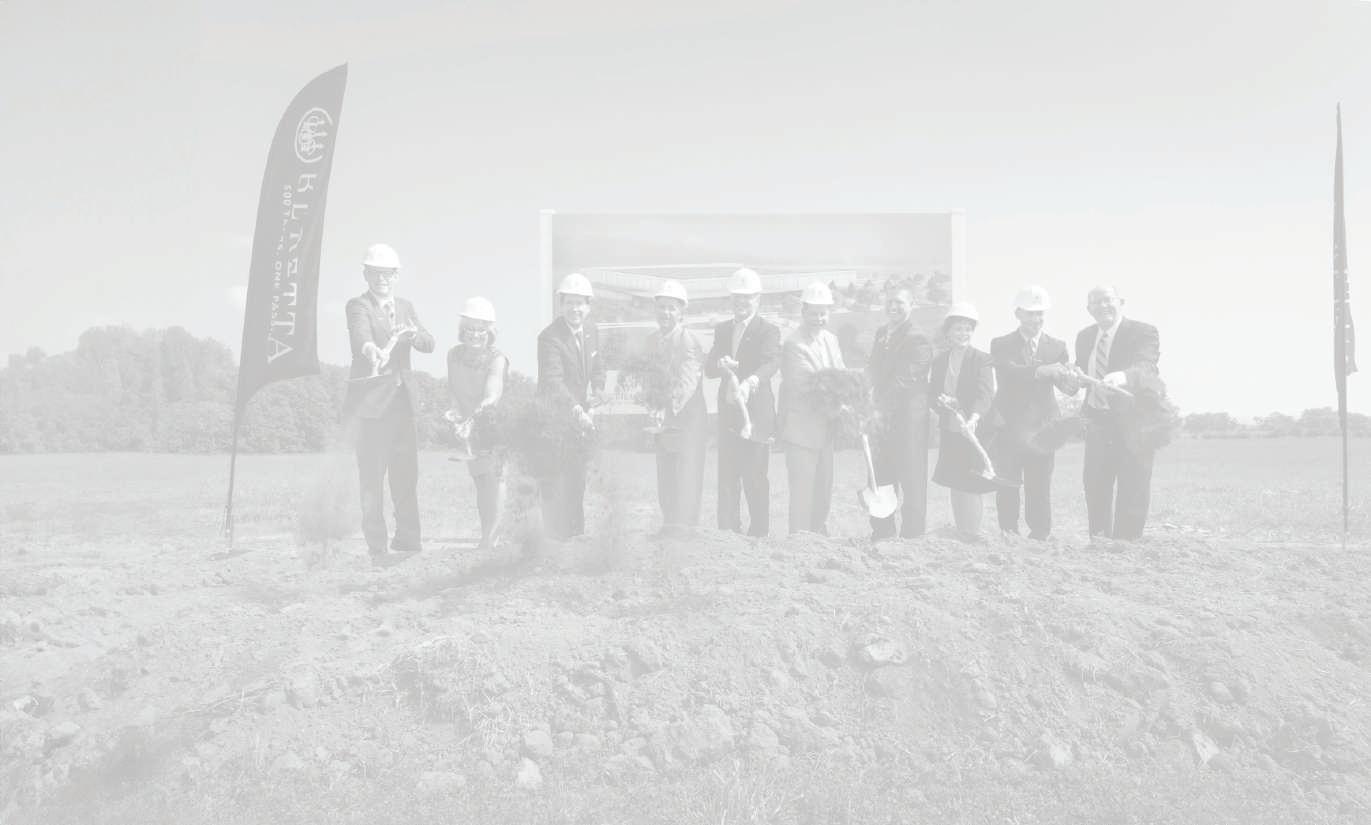








page 86

Guest editors Steven Pearce and Ford Graham from McGuireWoods take a bird’s eye view at sourcing the component parts that make America’s data centers run.
PAGE 22 A Zebra in the Room
PAGE 25 The Legal Limits of DEI
PAGE 62 The New Math Behind Mexico and U.S. Manufacturing


When a zebra charges out of the woods during a routine site visit, it’s a reminder wild surprises lurk around every corner. What every company should do before purchasing land.
PAGE 65 Trade Policies Add Complexity to Site Selection

Unpredictability is reshaping how manufacturers evaluate risk. The rules for cross-border production and supply chain planning are being rewritten in real time.

New legal challenges are reshaping DEI goals in hiring and contracting. More than ever, companies pursuing incentives, must understand what’s lawful. Here’s what the courts say.
PAGE 82 The Quest for Logistics Supremacy

States are pouring billions into ports, air cargo hubs, and cold storage to win the race for logistics dominance. Infrastructure, policy, and innovation are where states need to win.

Labor, power, tariffs, and site readiness are reshaping how manufacturers choose between the U.S. and Mexico. Here’s why site selectors are rethinking old assumptions.
PAGE 94
Choosing a Site In Volatile Times

Learn how top manufacturers are minimizing risk and avoiding delays by rethinking site selection as a strategic business decision—not just a race to the most shovel-ready site.

As market pressures reshape the real estate landscape, we dive into where opportunities still exist From AIpowered drug discovery to renewed VC funding and shifting workforces, learn about 2025’s macro trends.

Site selection isn’t just about lab space or incentives, it’s about timing, talent, and precision. Here’s a guide for companies that are navigating today’s two-speed market and looking for an edge.

Learn how utilities, wastewater infrastructure, and workforce strategy are driving new life sciences facility development, and learn how community collaboration is making all the difference.
It’s that time again. Area Development reviewed the

Inside this quarter’s site selection pressure points
6
Meet the thought leaders who shared their expertise in Q2
Why AI creates a headcount conundrum
Dave Robey, Co-CEO of QTS Data Centers, sits for a chat
Our guest editors teamed with a Moody’s economist to talk about data center supply chain risks
96 Last Word
States have more power now DEPARTMENTS

There’s no sugarcoating it—this is a tough moment to be making long-term decisions. Between rising trade tensions, shifting investment flows, and growing pressure on logistics and infrastructure, the old playbook doesn’t cut it anymore. But that’s also what makes this work interesting.
In this issue, we try to make sense of some of it. We dig into the intrastate tug-of-war unfolding in The Quest for Logistics Supremacy by Greg Canfield, where ports, railroads, and air cargo networks are increasingly seen not just as infrastructure, but as leverage. Charlie Smith brings this idea home in his opinion piece, Time for States to Shine. We trace how every part of the data center ecosystem—from chip fabs to transformers—is under strain in Mapping the Data Center Supply Chain by guest editors Ford Graham and Steven Pearce. And in FDI and Tariffs by Alexandra Segers and Michael Johnson we revisit the long shadow cast by Donald Trump’s initial tariff announcements, and how those policies continue to ripple through today’s site selection decisions. We’re also giving life sciences the attention it deserves. With three pieces focused on real estate strategy, utility demands, and market shifts, we look at how the sector is adapting to a new reality. Capital is tighter, timelines are longer, and the bar for site readiness is higher than ever. But the fundamen-

2025 EDITORIAL ADVISORY BOARD
Scott Kupperman Founder KUPPERMAN LOCATION SOLUTIONS
Eric Stavriotis Vice Chairman, Advisory & Transaction Services CBRE
Brian Corde Managing Partner ATLAS INSIGHT
Amy Gerber Executive Managing Director, Business Incentives Practice CUSHMAN & WAKEFIELD
Alexandra Segers General Manager TOCHI ADVISORS
Dennis Cuneo Owner DC STRATEGIC ADVISORS
Publisher Dennis J. Shea dshea@areadevelopment.com
Sydney Russell, Publisher 1965-1986
Events / Business Development Director
Matthew Shea (ext. 231) mshea@areadevelopment.com
Media / Accounts Director Justin Shea (ext. 220) jshea@areadevelopment.com
Courtney Dunbar Site Selection & Economic Development Leader BURNS & MCDONNELL
Stephen Gray President & CEO GRAY, INC.
Bradley Migdal Executive Managing Director, Business Incentives Practice CUSHMAN & WAKEFIELD, INC.
Brian Gallagher Vice President, Corporate Development GRAYCOR
Marc Beauchamp President SCI GLOBAL
David Hickey Managing Director HICKEY & ASSOCIATES
Editor Andy Greiner editor@areadevelopment.com
Staff and Contributing Editors
Kimberly Graulein
Amy Matias
Jim Richardson
Brian Eddow
Garrison Partridge Circulation/Subscriptions circ@areadevelopment.com
tals—aging demographics, scientific breakthroughs, and the demand for localized production—remain strong. Whether you’re planning for R&D, manufacturing, or hybrid facilities, these stories offer a cleareyed view of the road ahead.
That same sense of volatility makes this year’s Shovel Awards all the more impressive. These projects weren’t easy wins—they were earned through smart planning, tough negotiations, and serious follow-through. Whether it was landing a billion-dollar EV plant or transforming a rural site into a hub for aerospace manufacturing, the states recognized this year proved they could not only compete—but deliver. If you’re looking for models of what economic development looks like under pressure, start there. If you’re reading this magazine, you’re likely grappling with questions that don’t have easy answers: Where will the next constraint show up? What will this election cycle do to capital flows? How do you build resilience without losing speed? We don’t pretend to have a crystal ball, but we do aim to offer context, clarity, and—when possible—a little foresight.

Chris Schwinden Partner SITE SELECTION GROUP
Chris Volney Managing Director, Americas Consulting CBRE
Matthew R. Powers, Lead Site Selection Consultant REDI SITE SELECTION
Scott J. Ziance Partner and Economic Incentives Practice Leader VORYS, SATER, SEYMOUR AND PEASE LLP
Chris Chmura, Ph.D. CEO & Founder CHMURA ECONOMICS & ANALYTICS
Alan Reeves Senior Managing Director NEWMARK
Production Manager Jessica Whitebook jessica@areadevelopment.com
Web Designer Carmela Emerson
Print Designer
Victoria Corish
Business/Finance Assistant
Barbara Olsen (ext. 225) olsen@areadevelopment.com finance@areadevelopment.com
Lauren Berry Senior Manager, Location Analysis and Incentives MAXIS ADVISORS
Courtland Robinson Director of Business Development BRASFIELD & GORRIE
Dianne Jones Managing Director, Business and Economic Incentives JLL
Joe Dunlap Chief Supply Chain Officer, LEGACY INVESTING
Halcyon Business Publications, Inc.
President Dennis J. Shea
Correspondence to:
Area Development Magazine
30 Jericho Executive Plaza
Suite 400 W Jericho, NY 11753
Phone: 516.338.0900
Toll Free: 800.735.2732
Fax: 516.338.0100






W. Ford Graham, (Guest Editor) Partner, Steven Pearce, (Guest Editor) VP of Infrastructure and Economic Development, and Margaret Rockwell, Counsel at McGuireWoods. Page 86
Amy Gerber, Executive Managing Director, and Tyler Hales, Executive Managing Director at Cushman and Wakefield. Page 12



Olivia Byrne, Partner at K&L Gates. Page16

Allen S. Kinzer, Partner, and Jonathan K. Stock, of Counsel at Vorys. Page 25
Jenna Hassam, Senior Associate, Business Consulting at JLL. Page 62


Alexandra Segers, General Manager at Tochi Advisors and Michael Johnson, Shareholder at Baker Donelson. Page 65




Connor Barnes, Executive Vice Chair at Cushman & Wakefield and Sandy Romero, Research Manager at Cushman & Wakefield. Page 68
Andy Wozniak, Principal, Global Facilities Group and Courtney Dunbar, Director of Site Selection at Burns and McDonnell. Page 74

Alan Reeves, Senior Managing Director of Global Strategy at Newmark. Page 78


Greg Canfield, Managing Director of Economic Development at Burr & Forman. Page 82

Charlie Smith, Managing Director of Geopolitical Strategy at Newmark. Page 96

Chris Urchell, Senior Manager, Site Selection and Incentives at Baker Tilly. Advises manufacturers on site evaluation, growth strategy, and large-scale capital investment planning. Page 94



By John Bourdeaux, President & CEO at AdvanceCT
Corporate decision makers crave predictability. Achieving this elusive goal has become increasingly challenging due to the unpredictable nature of our economy. Tariffs and trade wars are causing paralysis among decision makers worldwide as they seek guidance on navigating these turbulent times. A lack of predictability means more risk – that is difficult to quantify.
The concept of risk is evolving. Traditionally, location decisions have been driven by cost and resources, often reduced to mere numbers in a spreadsheet. Global tariff uncertainty is just one of many risk factors that have typically been omitted from the calculus when companies are making location decisions. This raises the question: what other factors are being missed?
Traditional risk scenarios include weather events and infrastructure instability. However, new challenges impacting business performance are increasingly cultural, political, and social. For example, a lack of childcare in a particular area can significantly impact productivity if working parents must stay home to care for their children. Productivity is crucial for business success, so any condition that impedes it must be carefully examined.
Factors affecting productivity can range from inadequate public transportation to a lack of nearby restaurants where employees can quickly get lunch. These seemingly minor details will impact the time employees spend working. Since the pandemic, other community factors such as access to healthcare and the overall health of the community have also become more important when considering locations.
Recently, a defense manufacturer chose to locate a facility near a city known for attracting former hippies and activists. Community members organized protests, disrupted operations, and blocked hiring events. These cultural risks should have been considered during the decision-making process.
Given today’s political turbulence, it is essential to evaluate policy, politics, and civic leaders for potential risk factors, even at the local or state level. Depending on the business, local political landscapes can present costly barriers, especially if the jurisdiction faces fiscal challenges or legacy financial obligations.
Another critical consideration is the centralization of facilities. For instance, a large industrial fire in a 1,000,000 square foot facility outside of Philadelphia, which produced fasteners for the global aerospace industry, destroyed the entire facility. This created shortages in the global aerospace supply chain and disrupted operations to the extent that it could take years to recover. Decentralizing operations could have created redundancy and allowed for 24-hour shifts at different locations, mitigating the impact.
Discussing “what if” scenarios and unlikely events is crucial because they can quickly become reality. Evaluating culture, social infrastructure, political landscape, and the work culture of the population is essential for understanding their potential impact on productivity and operations. Examining a jurisdiction’s track record for philanthropy, giving, and volunteering can provide insights into the social fabric and culture of a community. Choos-
ing a location that aligns with your company’s values and culture is best practice. Therefore, it is time to move beyond numerical values and cost savings, which can quickly become obsolete, and view risk through a more comprehensive lens that reflects the long-term, valuable investments that are being considered.

John Bourdeaux, President & CEO at AdvanceCT
John Bourdeaux is an experienced leader with a track record of success in marketing and development, strategic planning, professional fundraising, and market research. Prior to joining AdvanceCT, he served as the Vice President of Advancement for the Connecticut Science Center, an organization dedicated to scientific exploration, teacher development, and educational transformation. At AdvanceCT, John’s focus is on operations, member development, and strategic initiatives. John brings valuable non-profit stakeholder engagement experience to AdvanceCT.
Prior to his work at the Connecticut Science Center, John served as the Director of Development for Hartford Stage and worked for the Melville Charitable Trust and the Partnership for Strong Communities, organizations focused on homelessness and affordable housing policy.
He has served in the development offices of the University of Chicago, The Hotchkiss School, and Yale University. In each of these positions, he was responsible for securing tens of millions in philanthropic support while promoting the mission of each organization, bringing many new supporters and advocates into the fold.
Early in his career, John founded and managed his own not-for-profit theater company in Chicago, IL, producing modern American drama and late-night improvisational comedy. He has also served as a consultant and board member for academic institutions as well as social action and arts organizations. John is a graduate of The Hotchkiss School and the University of Chicago.
This advertisement was written by AdvanceCT and approved by Area Development.















Connecticut is home to Sikorsky, Pratt & Whitney, and hundreds of aerospace firms manufacturing everything from helicopters to jet engines. Nearly ¼ of all U.S. aircraft engines and parts are made here by the most highly productive and skilled aerospace workforce in the world. Quite literally, nothing flies without Connecticut.






By Brian Eddow Area Development Staff
Artificial intelligence isn’t just transforming how companies operate — it’s also disrupting how economic development incentives should be measured.
That was the message delivered by CBRE Managing Director John Lenio during a presentation at Area Development’s Consultant Forum Workshop in San Antonio.
As automation and machine learning reduce the need for certain types of labor, companies are delivering more economic value with fewer jobs. And yet, many incentive agreements still rely on rigid job creation targets written for a different era.
The result? A growing disconnect between how companies grow and how they’re rewarded for that growth.
Lenio offered a real-world example of this disconnect. In one case, a client committed to 1,000 new jobs as part of a major facility project and initially delivered on that promise. But over time, automation and AI allowed the company to eliminate many lower-wage, routine positions. Headcount declined — but payroll rose.
“The jobs that remained were higher-wage, higher-skill
roles — people overseeing the AI systems, maintaining the technology, providing strategic insights,” Lenio explained. “The company wasn’t shrinking. It was evolving.”
When it came time to review compliance with state incentive agreements, it became clear the original job target was based on an outdated assumption — that more jobs always equal more value. If the incentive was based on 1,000 jobs at $73,000 each, and the company had fewer people but much higher total payroll, they calculated how many “$73K equivalent” jobs that added up to. The answer: closer to 1,500.
Traditional incentives often focus on simple metrics: number of jobs, capital investment, square footage. But AI-driven transformation is forcing a rethink, and companies investing in automation and reskilling efforts shouldn’t be penalized.
“Incentive agreements that focus solely on headcount risk punishing the very innovation communities want to attract,” Lenio noted.
Some states have begun adapting, including provisions for alternative compliance

where payroll can serve as a proxy for jobs. Others remain rigid — creating friction for companies caught between outdated terms and modern operations.
Companies and consultants should raise these issues early in the site selection and negotiation process.
Questions like: If we automate this process in three years, what happens to our eligibility? If payroll exceeds expectations but headcount drops, are we still compliant? Is there flexibility in the agreement to reflect
economic impact?
“Better to build these scenarios into the contract than scramble for a fix later,” he advised.
At the end of the day, both communities and companies want the same thing: sustainable economic growth. That means thinking beyond job quantity and measuring economic impact through wages, tax revenue, and workforce quality.
As Lenio put it, “If you’re still using a 2015-era incentive model in 2025, you’re playing last decade’s game. It’s time to update the rules.”
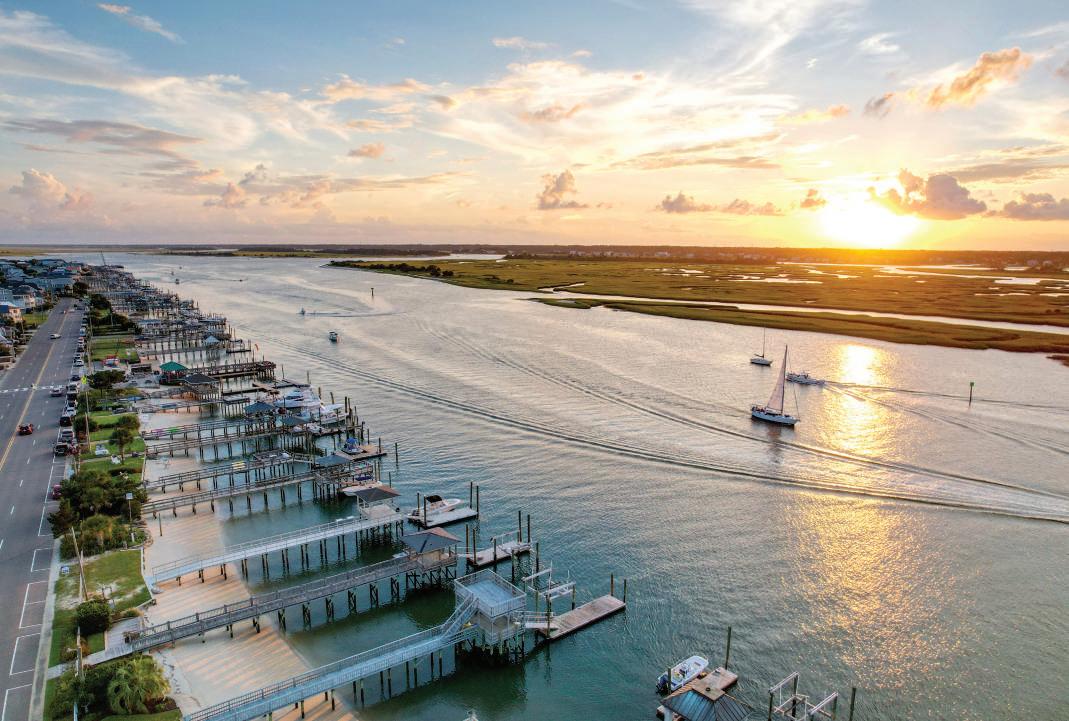
How the return to campuses is blurring the line between operations and corporate strategy
By Amy Gerber, Executive Managing Director, Business Incentives Practice, and Tyler Hales, Executive Managing Director, Strategic Advisory at Cushman & Wakefield
Across the country, companies are rethinking how they deploy their headquarters and R&D functions—and, as we’ve seen with some recent announcements, they’re bringing them closer to where things are made. The traditional gap between corporate strategy and operations is narrowing, driven by shifting workplace preferences, real estate pressures, talent needs and the growing importance of collaboration and innovation. As organizations adapt to a hybrid work environment, the single-location campus is making a comeback.
During the height of the pandemic, distributed hub-and-spoke office strategies became common. Teams were scattered across regional footprints to reduce density and give employees flexibility. But in recent years, we’ve seen an increasing number of companies pivot toward
consolidating operations, bringing their R&D, back-office and even executive functions into closer proximity to production.
One of the key forces behind this movement is the imperative to align engineering and innovation talent with on-the-ground operations. For instance, Duracell recently announced a move of its R&D headquarters from Connecticut to Atlanta. The decision was based on several strategic factors: proximity to its Georgia manufacturing facilities, a robust local innovation ecosystem, and deep pools of engineering talent. The company cited the need to innovate “with speed and efficiency” as a central reason for the shift.
These realignments are not just about cost savings or convenience. They reflect a larger transformation in how companies see their workplaces—not just as containers for people, but as tools to drive
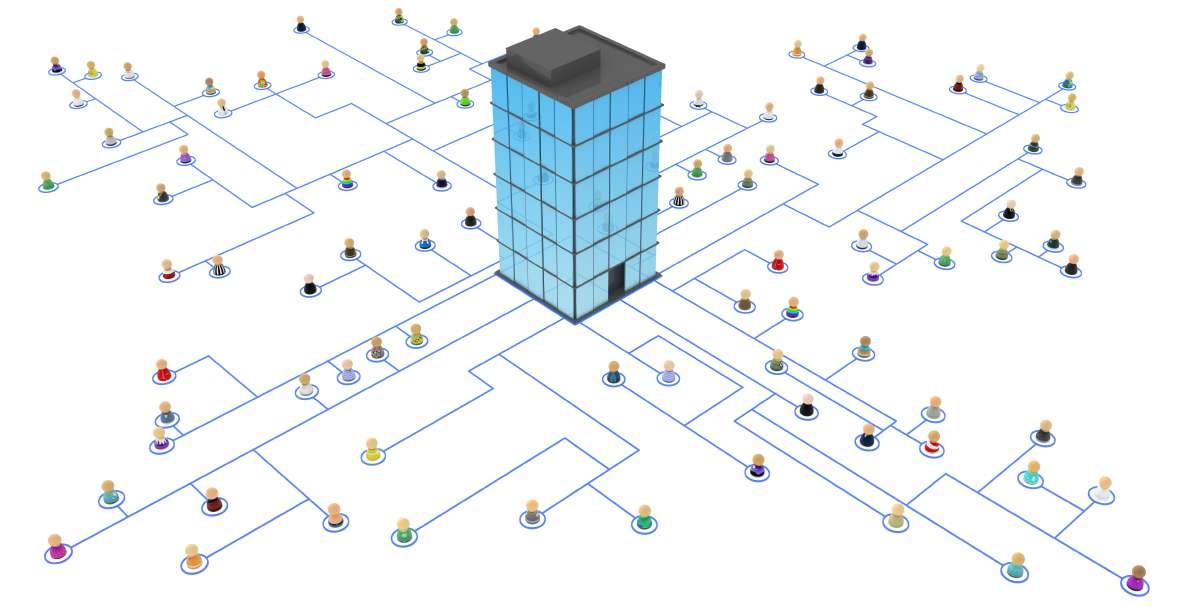

At the nexus of access and influence exists a place where the frontiers of the future are being reimagined. Here in Fairfax, businesses from rising startups to Fortune 500s find fertile ground to put down roots and scale to new heights. A community grounded in diversity of thought, we are the center of gravity where purpose and progress intertwine. In this place, icons come to reinvent, and the workforce of the future is being built today. From here, you can dent the universe.
www.fairfaxcountyeda.org
business performance. That means real estate choices are now squarely connected to workforce strategy. It’s no surprise that HR teams are involved in site selection alongside real estate and operations leaders.
Companies like Foot Locker and Sally Beauty have taken similar approaches in their recent relocations, emphasizing collaboration, cross-functional synergy and talent retention in their public statements. In many of these cases, a return to a campus-style environment has emerged as the preferred solution. These developments typically feature multiple departments, amenities and even manufacturing or distribution components within a single footprint or close geographic cluster.
Recent data underscores the trend. For headquarters deals announced between January 2023 and January 2025, the average capital investment was modest—about $20 million—but the intent behind many of them was strategic realignment rather than sheer scale. Roughly 21 percent of these HQ announcements were tied to foreign direct investment, often driven by international firms looking to establish a U.S. presence that integrates closely with their operational assets. Coca-Cola Bottling’s recent $338 million investment in Alabama created only 50 new jobs but reaffirmed its long-term commitment to the region. The move brought together major operational functions into a single campus, providing room for future growth and a more integrated work environment. In Indiana, a major life sciences company invested $300 million in a new headquarters facility—again with a modest job count but a clear focus on unifying leadership and production functions.
This return to campuses is not simply a nostalgic turn back to pre-COVID layouts. Today’s campuses are being designed with flexibility, wellness and sustainability in mind. Mass timber buildings, for example, are increasingly popular. These structures offer natural lighting, reduced stress environments and greater energy efficiency. Tenant preferences are also shaping where and how companies expand. The concept of “flight to quality” has taken hold, with companies seeking out new Class A spaces that support employee experience and align with environmental, social and governance (ESG) goals. This trend has real implications for site selection. Employers are not just
The HQ of the future might not be a gleaming tower downtown—it might be a thoughtfully designed campus down the road from your next factory site.
That’s the average capital investment for HQ deals announced between January 2023 and January 2025.
comparing markets on costs and incentives—they’re also evaluating what a particular location can offer in terms of the complete “streetto-suite” experience. That includes everything from daily commute patterns to adjacent dining, childcare and wellness amenities.
Commute patterns in particular are influencing how companies think about hybrid work policies. If a policy requires two or three days in the office, the catchment area for hiring may expand dramatically. That can be a selling point for more remote or emerging markets that previously struggled to compete with major urban centers. It also makes real estate flexibility essential, with demand surging for spaces that can adapt to peak occupancy days and then scale down for the remainder of the week.
In some markets, local governments are taking proactive steps to make their urban cores more attractive to companies eyeing this kind of hybrid headquarters model. Arlington, Virginia, for example, recently streamlined its permitting process for redeveloping Class B and C office space. The change cut timelines from two years to five months and reduced fees by half. That type of responsiveness could be a key differentiator as more companies weigh whether to build new campuses or retrofit existing buildings.
The focus on urban planning extends to broader conversations around walkable environments. New research on so-called “urban doom loops”—the negative cycle where office vacancy drives down tax revenue and services, further degrading downtowns—suggests a rebalancing of urban asset types is essential. The future of healthy, vibrant business districts may lie in more balanced mixes of live, work and play amenities, rather than in a dense concentration of office space alone.
These changes have wide-reaching implications for site selectors and C-suite decision-makers. Manufacturing executives who once considered corporate real estate decisions separate from production strategy are now reevaluating that assumption. Co-locating functions like R&D, HR and IT with production facilities can streamline communication, accelerate product development and reinforce culture.
As the numbers show, these relocations may not generate thousands of jobs, but they are increasingly strategic. The quality of the space—and how it connects people and functions—matters more than ever. The HQ of the future might not be a gleaming tower downtown. It might be a thoughtfully designed campus down the road from your next factory site





With QTS rapidly scaling to meet hyperscaler and enterprise demand across North America and Europe, Co-CEO David Robey shares his perspective on site selection, utilities, incentives, and what’s next for the industry. Robey, who previously served as COO, brings a tactical mindset to an evolving set of location priorities.
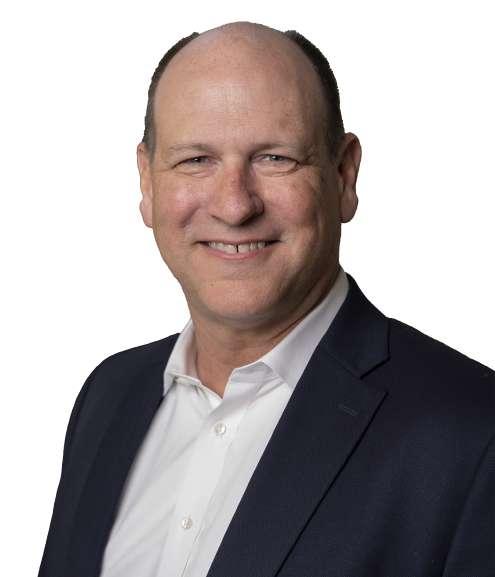
Area Development: QTS has grown into one of the top co-location providers in North America. What are some of the key site selection considerations that have enabled you to scale rapidly?
David Robey: I would put those in two categories. The first is obvious—resources, local processes, permitting, and tactical items. You have to have labor, resources, and the ability to execute, including geographic considerations. But the second critical element is community engagement. That’s core to our culture. We’re in service to our customers, employees, and communities. The only way to move quickly is to create value for all three—workers, communities, and customers. When those elements align, you can do amazing things.
That community angle is one we hear about often, especially in the face of growing NIMBYism. But utilities might be an even bigger pressure point. How does QTS engage with power providers when you’re scouting locations?
Robey: It used to be that site selection led the process. Today, we start with the utility. Especially as workloads get larger, you need to lead with what makes sense from a utility point of view. Then you can go source land to support that project. That’s been the major pivot in recent years with the shift toward larger cam-
puses. We’re committed to partnering with utility companies to identify innovative and sustainable ways to generate and secure power.
You’re known for those large campuses. How do you balance the need to bank land for the future with the need to move fast?
Robey: The scale and land banking require you to be intentional. You have to understand upfront that you’re building for a future. Our large-scale campus approach began many years ago, which put us in a great position as demand grew. It’s about being proactive with the community and the utility—otherwise, you’re trying to make something into what it was never intended to be.
There’s been a lot of conversation in our pages lately about water use and the cooling needs of new compute loads. What’s your view on that?
Robey: The industry is moving away from water-intensive designs. Seven years ago, QTS made the change so that any new buildings do not consume water to cool the data center. This QTS Freedom design is one that employs solutions to remove heat without consuming water. Evaporative systems, which consume large amounts of water, are something we’ve moved away from. We believe the industry should push harder on that. It
affects communities, and we all need to be cautious with water as a resource. Our water-free system saves more than 48 million gallons of water annually per data center – the equivalent of water use from more than 2,200 U.S. homes per year. We will continue to implement this system to improve water conservation in every community in which we operate.
How about connectivity? How important is proximity to long-haul fiber in your location strategy?
Robey: Historically, data centers followed the old real estate rule of “location, location, location”—defined by fiber routes and proximity to diverse connectivity options. But the model has evolved. Today, AI workloads allow us to be more flexible. That’s a good thing. If you can get utilities and some fiber to more remote locations, you’re able to spread these out across geographies. It’s not just about being central anymore.
That likely helps with siting challenges too. But how do you manage the labor aspect in more remote regions?
Robey: It’s not as much about where the data center is located now—it’s about the labor to build and support it. If you’re 200 miles from the next town, you don’t have a data center problem—you have a resource problem. So you still have to solve for the people side of the equa-
tion. It’s also interesting to see the trickle effect—data centers elevate localities as active technology markets by creating technology ecosystems, driving more technology and infrastructure companies to the area, and creating more high-wage technology jobs.
Let’s talk incentives. Data centers don’t always fit neatly into a traditional incentive structure. What kind of programs are most meaningful to QTS?
Robey: That really depends on the local area. There’s no one-size-fits-all approach. Historically, sales tax abatements have been the simplest vehicle. But in any engagement, the economic stimulation that comes with a project far outweighs the incentive offered. For us, it’s not about the structure—it’s about whether it brings value to our customers and communities. We’re trying to bring those two things together: customer value and community value.
What trends are you seeing from your customers—especially hyperscalers—
in terms of ESG, infrastructure, and location priorities?
Robey: The biggest challenge they’re facing is capacity planning. It’s hard for them to predict where they need to be and what they need. That creates timing issues. QTS’s unique access to infrastructure at scale helps us move quickly to meet our customers’ accelerating needs. The more we can be transparent and communicate with each other, the better we can prepare. We want to do this in a way that’s socially responsible, serving communities as well. Transparency helps everyone plan, and it’s about all of us partnering. One group can’t succeed at the expense of others. It has to be a joint success.
Would you say that transparency is a differentiator for QTS?
Robey: I would. Historically, the data center industry was more closed off in terms of information sharing. But over the past five to 10 years, we’ve been more open—sharing data, project info, and our perspective. We hope the whole
industry, our customers, and our communities benefit from that. It’s our way of doing our part to support this innovation economy. We’re able to do things like this video chat because we built and operate a data center.
Looking ahead, what markets—domestic or global—are primed for QTS growth?
Robey: The U.S. is still a very favorable market, and we’re coast to coast here. We also have a lot of work going on in Europe. Within the U.S., it’s about finding the right mix of utility access, labor, and geographic diversity. There’s value in being dispersed—coast to coast and north to south—to meet client needs.
Finally, is there anything else you’d want site selectors or commercial real estate professionals to understand about the data center space today?
Robey: It’s about blocking and tackling, and hopefully we added some insight that’s valuable to your audience.

By KansasDOC
When companies are ready to expand or relocate, they need more than a great location — they seek competitive advantages to increase their odds of success. Those that choose Kansas get all of the above.
Kansas’ central location offers company supply chains the ability to distribute more, in less time, and at a lower cost. Located in the heart of the country, 85 percent of the U.S. can be reached in two days or less by freight. Kansas is well equipped for virtually all logistics ventures, offering:
• 25,000 highway miles
• 4,257 total rail miles
• 140 public-use airports
• The second-largest rail hub in the nation
In addition, Kansas is home to major logistics parks — including the Logistics Park Kansas City Intermodal Facility, the second largest in the nation — providing companies with the infrastructure for quick and efficient distribution to anywhere in the world.
These resources and economic opportunities have attracted major supply chain and distribution companies to the state, including Urban Outfitters, Kubota, American Eagle Outfitters, Amazon, The Home Depot, Frito-Lay, Cargill, Walmart, and others. More than 7,000 logistics and distribution businesses currently operate in Kansas.
As the logistics ecosystem expands, the case becomes even stronger for companies in other sectors to capitalize on Kansas’ distribution advantages.
“Kansas is attracting world leaders in advanced manufacturing, agriculture, food production, aviation, transportation, and other sectors for a variety of reasons,” said Lieutenant Governor and Secretary of Commerce David Toland. “While our central location is cited as a key starting point, our ready workforce and commitment to innovation often seal the deal.”
Kansas’ robust infrastructure has been a key factor in attracting supply chain and logistics companies. Several logistics and industrial parks across the state offer direct access to highways, rail hubs, and commercial airports. As a result, supply chain distributors are investing in Kansas at a higher rate than ever, making the state a dominant hub for logistics success across industries.
Whether a company is looking to relocate to an urban or rural area, Kansas offers logistics and industrial parks throughout the state — most with access to at least one mode of transportation. Notable parks include:
• Logistics Park Kansas City, Edgerton: highway, railroad, and commercial airport hub
• Kansas Logistics Park, Newton: highway and railroad access
• Great Plains Industrial Park, Parsons: shovel-ready site for a megaproject
• New Century AirCenter, New Century: commercial air and rail hub
There are currently 17 designated Kansas Certified Sites
available, ranging from 13 to more than 500 acres. These shovel-ready industrial parks are primed for development and ready for investment.
“We have available, move-in-ready spaces at several of our logistics and industrial parks — and they are eager to assist companies expanding their distribution efforts,” said Deputy Secretary of Business Development Joshua Jefferson. “Whether your business is looking for quicker delivery options or establishing more supply chains here in the U.S., Kansas has a place for you to succeed.”
Kansas’ recruiting success is driven by its economic development strategic plan, the Kansas Framework for Growth. This blueprint aims to foster sustainable partnerships and economic expansion through workforce development, innovation, community assets, and policy alignment.
The plan outlines key industries that strengthen the Kansas economy and attract new business. Target sectors include advanced manufacturing, aerospace, food and agriculture, professional and technical services, distribution, logistics, and transportation.
In the past six years alone, this intentional strategy has helped secure more than $23 billion in committed private investment and created or retained over 75,000 jobs. Approximately 90 percent of those projects align with the Framework’s target industries.
An available, skilled logistics workforce is another key factor in attracting businesses to Kansas. Partnerships with the state’s colleges and universities help prepare future workers and sustain long-term industry growth.
Institutions such as Wichita State University, WSU Tech, the University of Kansas, Kansas State University, and Johnson County Community College offer programs ranging from CDL certificates to advanced degrees in supply chain management. These schools actively collaborate with the private sector to support continued success.
By investing in educational institutions, Kansas is also investing in its workforce. The state supports technical colleges, internships, and registered apprenticeships to ensure a strong talent pipeline for years to come.
Whether your company is looking to lower shipping costs, expand its workforce, or improve delivery speed, Kansas has the options and infrastructure to support long-term success.
Ready to move it to the middle? Learn more about Kansas — the State of Unexpected — at kansascommerce.gov.


Area Development magazine caught up with its Q2 guest editors, Ford Graham and Steven Pearce from McGuireWoods consulting, to talk about their reporting on data center supply chains. We invited Ermengarde Jabir Director of Economic Research at Moody’s who also explored data centers for an Area Development article to join the discussion. This conversation has been edited for style and length. For a full transcript and audio of this conversation, head to areadevelopment.com.
Area Development: Let’s start with introductions and a quick story. When did it hit you—just how essential data centers are?



Ermengarde Jabir: I realized how foundational data centers are during the pandemic—when remote work and e-commerce took over. Without data centers, none of that would’ve been possible.
Steven Pearce: I think it clicked for me when I bought my first iPhone. Around that time, Apple had just announced a big data center in western North Carolina. I started connecting the dots—Siri, iCloud, all of it running through that building. The whole idea that your phone doesn’t work if the data center doesn’t? That’s when it sunk in.
Ford Graham: Honestly, I was a bit late to the game. It wasn’t until I worked on a large data center investment in central Virginia three years ago that I fully grasped their critical role. Since then, it’s been a crash course.
Area Development: Ford and Steven, Let’s talk about your article in this issue. You mapped the supply chain behind data centers—the stuff most people don’t think about. What’s the most underappreciated piece?


Ford Graham: All of it, really. People see a big box filled with servers and assume that’s it. But you’ve got backup generators, cabling, cooling systems—an entire ecosystem. It’s deeply tied to global commerce. Most of us don’t appreciate that.
Steven Pearce: I’ll get specific: the skilled labor behind these projects. Electricians, HVAC techs, low-voltage specialists—they bring these facilities to life. It’s not off-the-shelf talent. Some markets simply don’t have the specialized workforce. That’s a hidden bottleneck.
Area Development: Ermengarde, you agree?

Ermengarde Jabir: Absolutely. People forget there’s rarely a daily operations team onsite—beyond security. Most technicians are flown in. And beyond labor, let’s not overlook power and water. A single megawatt can power up to 1,000 homes. Hyperscale data centers need dozens of those. And they rely on water-based cooling systems. The natural resource intensity is massive.
Area Development: How has the approach to supply chain redundancy changed in recent years?


Ford Graham: The pace of growth and competition has forced companies to diversify. Everyone’s racing for land, power, and materials. You can’t afford to be caught waiting for a single component. Diversification has become strategy, not luxury.
Steven Pearce: Exactly. Five years ago, it was all just-in-time and cost-driven. Now it’s about risk. Tariffs, pandemics, shipping delays—it’s made companies rethink their sourcing models. We’re seeing a shift toward regionalization and greater visibility, often with AI helping track every link.
Area Development: Ermengarde, your current piece focuses on downside risk. Any threats people aren’t talking about?

Ermengarde Jabir: Yes—obsolescence. Not only of the equipment, but also the buildings. Servers and racks are shrinking fast. Many older data centers were built with far more square footage than needed today. So now we’re seeing empty space inside expensive buildings. That affects zoning, tax bases, and future land use. Municipalities might have to adjust expectations. The physical footprint of a data center won’t always reflect its power or value going forward.
Area Development: Let’s talk incentives. Are governments adapting?




Ford Graham: Depends on the region. Metro areas are getting more skeptical, especially when it comes to job creation. But rural areas still see data centers as high-value investments. Even with limited jobs, the property tax impact can be huge. Some states are offering long-term incentives to lock in multiple phases of growth.
Steven Pearce: There’s also growing NIMBYism. Some communities don’t want them, and that’s bleeding into incentive decisions. The misconception is that no jobs equals no benefit. But not every community can support a 1,000-person factory. Data centers bring capital investment, which many regions need.
Ford Graham: In South Carolina, we’ve seen proposed legislation to limit sales and use tax exemptions for data centers, citing energy constraints. Without that incentive, it’s hard to compete. Georgia’s had similar debates. It’s a trend worth watching.
Ermengarde Jabir: Look at what’s happening in Virginia and Maryland. Northern Virginia has long been the data center capital. But NIMBY sentiment is rising. Now Maryland counties are attracting those same projects—same users, same power, just across the river. Policy and public perception are shifting the geography.
Area Development: That’s a great note to end on. Thanks to all of you—this was smart, timely, and generous. We’ll do it again soon.
A surprising encounter reveals why environmental due diligence isn’t just paperwork — it’s protection
By Olivia S. Byrne, Esq., Partner at K&L Gates
Every seasoned lawyer or site selection consultant has a story that underscores the importance of thorough environmental due diligence. Mine involves a zebra.
Yes, a zebra — the four-legged, black-and-white-striped kind.
A few years ago, a client wanted to establish an industrial facility and identified what seemed like an ideal property. The site was a vast, mostly wooded area that matched all their requirements: a good location, a reasonable price, and a preliminary report suggesting no major environmental concerns.
As part of our routine due diligence process, we arranged for an environmental team to conduct a Phase I Environmental Site Assessment (ESA). We expected the usual findings — potential wetland encroachments, some soil composition concerns, maybe a few other environmental flags. What we did not expect was an urgent call from our field team: a zebra was chasing them across the property.
As it turned out, the land was not what it seemed. It wasn’t just a wooded tract — it was also a weekend hunting ground for exotic game. The game included not just the lone zebra but also wild boar, non-native deer species, and other exotic animals legally maintained on the land. Had the client skipped due diligence and proceeded with the purchase, they would have inherited not just a property, but a complex set of wildlife management issues, regulatory hurdles and a potential public relations nightmare.
The zebra incident is an extreme, but illuminating, example of why environmental due diligence is a critical — and often underestimated — step in site selection. While most sites won’t include exotic animals, they may harbor equally wild problems beneath the surface. Below, I highlight why this process matters and what companies should consider when evaluating a site.
Environmental due diligence begins with a Phase I ESA, which assesses a property for potential environmental liabilities. This includes reviewing historical land uses, examining records of contamination and conducting a physical inspection. A Phase I ESA is crucial to establish liability defenses under the Comprehensive Environmental Response, Compensation and Liability Act of 1980 (CERCLA) 1 .
If a Phase I ESA raises red flags — such as indications of underground storage tanks, chemical spills or soil contamination — then a Phase II ESA is typically conducted. This includes soil and groundwater sampling, geotechnical studies and sometimes vapor intrusion assessments to determine the extent of contamination.
In the case of our zebra encounter, the Phase I ESA flagged the

presence of an active hunting ground, prompting deeper inquiries into land use restrictions and conservation laws
Beyond contamination, environmental due diligence can reveal unexpected regulatory and operational challenges. Common surprises include:
Wetlands and waterways -- Many industrial sites, particularly in the South and along the Eastern Seaboard, contain wetlands subject to strict federal and state regulations. Developing these areas often requires costly permits that can take years to obtain. Wetlands are not typically part of a Phase I ESA but can be added as a supplemental assessment. Endangered species --The presence of endangered or threatened species — such as the northern long-eared bat or the bald eagle — can delay or block development. If a site includes nesting trees, developers may be restricted from clearing them during certain seasons. Endangered species assessments are usually not included in a Phase I ESA but may be required for greenfield developments or projects using federal grants or financing. Vapor intrusion and soil contamination -- Sites with industrial histories may contain vapor hazards such as benzene, which can seep into buildings and pose serious health risks. Cleaning up these hazards is often expensive and time-consuming, if possible at all.
Zoning and land use restrictions -- Some properties carry hidden deed restrictions or zoning limitations that prevent certain types of development. A zoning compliance evaluation is typically not covered by a Phase

I ESA but can be handled by legal counsel experienced in site selection. Legal and community pushback -- Properties with a history of industrial pollution may face opposition from community groups, legal restrictions or ongoing litigation, making development far more complicated than anticipated. A mitigation strategy should be developed early.
The two most common reasons companies cut corners on due diligence are timing and cost. But environmental studies vary by site and project, and what works for one may not work for another. A full due diligence process requires a team of professionals to perform each assessment in a compliant and thorough manner.
That team should be prepared to conduct the following, depending on the site:
Phase I ESA; Phase II ESA (if necessary); Geotechnical analysis; Wetlands delineation; Greenfield development studies.
These assessments can cost up to several hundred thousand dollars, but when compared to the financial and reputational risks of unforeseen liabilities, these costs are not only reasonable — they’re essential. While they may add weeks to the transaction timeline, they can save months or years in the long run.
Most environmental issues won’t involve dodging exotic wildlife — but every site has its surprises. The lesson from my zebra experience wasn’t just about the unpredictability of undeveloped land. It was about the importance of knowing exactly what you’re buying.
Had my client skipped due diligence, they would have inherited a host of regulatory headaches, logistical issues and ethical challenges — including the question of how to responsibly rehome exotic animals. Instead, we caught the problem early and shifted focus to a more suitable property.
At the end of the day, site selection is about more than location and price. It’s about long-term viability, risk mitigation and smart decision-making. Environmental due diligence isn’t just a regulatory checkbox — it’s a critical safeguard. And if you ever find yourself being chased by a zebra on a potential industrial site, consider it a sign: dig a little deeper.
1. The steps for establishing a CERCLA defense are laid out in 42 U.S.C. §9601(35)(B) and the American Society for Testing and Materials (ASTM) methodologies. Companies should not rely on old reports or assume previous assessments are sufficient. CERCLA requires these steps to be completed within six months of closing. Relying on outdated reports could negate the defense and leave a company exposed to liability.
637,000 workers in a 30-mile radius
6 Million workers in a 60-mile radius
Innovative workforce training, career pathways, and advanced technology center, to train and upskill existing and future workforces
Close proximity to major transit routes, rail, and four international airports
Numerous local and state incentives for savings and increased ROI


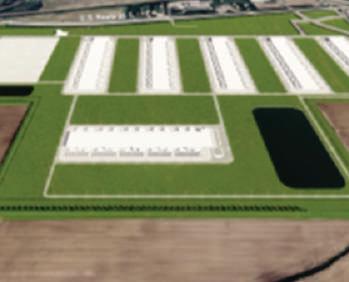
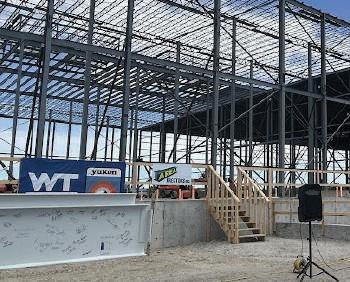
How the Trump administration’s rejection of diversity, affirmative action, and contracting targets may impact your next location decision
By Jonathan K. Stock, Of Counsel, & Allen S. Kinzer, Partner at Vorys
Diversity, equity and inclusion programs have come under fire. President Trump issued an executive order prohibiting federal contractors from engaging in “illegal DEI.”¹
However, there is no formal definition of “illegal DEI” or “legal DEI.” Based on case law, there are some boundary lines.
Consider this situation: A federal and state highway contractor puts out to bid a guardrail subcontract. The government contract has minority set-aside requirements of 15 percent of the total contract amount that is to be awarded to subcontractors owned or controlled by disadvantaged groups. The guardrail contract is awarded to a subcontractor owned by a Latino family. Claiming race and national origin discrimination, a losing bidder — a white-owned guardrail contractor — sues.
A similar situation occurred more than 30 years ago and made its way to the U.S. Supreme Court several times. The losing contractor was Adarand Constructors Inc. After a decade of litigation during the 1990s and early 2000s, the Supreme Court set some ground rules for determining whether such set-aside programs are lawful. The result is that lawful set-aside programs are rare.
The Supreme Court concluded that any person, of whatever race, has the right to demand that any governmental actor “justify any racial classification subjecting that person to unequal treatment under the strictest judicial scrutiny.” That phrase generally means the federal, state or local government must justify any mandated setasides based on race, national origin or sex by showing that there was past discrimination, and that the set-aside program for minorities or women is narrowly tailored to rectify that past discrimination.

In the Adarand case, the Supreme Court elaborated: “In other words, such classifications are constitutional only if they are narrowly tailored measures that further compelling governmental interests.”
With the Adarand litigation and the few cases that followed, federal, state and local governments largely failed to meet the high burden of proving their set-asides were narrowly tailored. To end the litigation, the government eventually certified Adarand as a disadvantaged contractor, removing race-based criteria from qualification. Any contractor able to show disadvantage — regardless of race or gender — was eligible to be considered under set-aside programs. The compelling government interest was recast as assisting disadvantaged contractors.
With recent executive orders, the Trump administration has changed the government’s view of what constitutes compelling governmental interest in awarding contracts, whether from local, state or federal entities. According to the most recent order, minority or women set-aside programs with targets or quotas are no longer consistent with the administration’s view and are to be considered unlawful. Furthermore, the U.S. Department of Justice is expected to pursue legal action based on this interpretation.
To minimize risk, general contractors and developers should clearly define legitimate, nondiscriminatory business criteria for awarding subcontracts. Once awarded, they should be prepared to explain their decision based on those criteria.
The circumstances are similar in hiring. Federal and state laws generally prohibit employment decisions based on race, color, religion, sex, national origin, age, disability or military status. These protections apply equally to white applicants and applicants of color. The U.S.
Supreme Court will likely reaffirm this in a reverse sex discrimination case: Ames v. Ohio Department of Youth Services. Ms. Ames alleges she was denied promotions because of her heterosexuality by a homosexual manager who promoted homosexuals. Many legal analysts predict the Court will rule that members of a majority have no greater burden to prove discrimination than those in a minority.
So what does this mean for affirmative action? Making employment decisions based on race or other protected categories has long been unlawful. The narrow exception — as with contracting — is to remedy past discrimination in a narrowly tailored way. The Civil Rights Act of 1991 states that nothing in the act “shall be construed to affect court-ordered remedies, affirmative action, or conciliation agreements, that are in accordance with the law.” However, as with minority contracting programs, such affirmative action in employment is rarely upheld as lawful. One exception includes certain preferences for veterans by federal contractors.
Legal affirmative action or DEI involves casting a wide net for applicants. Employers may advertise widely to ensure diverse demographics have access to job openings. For instance, it is legal to include historically Black colleges and universities in campus recruitment efforts. But when it comes to hiring, employers must choose the best-qualified candidate, regardless of race, color, sex or other protected characteristics.
The same principle applies to subcontracting. Federal contractors can lawfully solicit bids from minority-owned businesses. But excluding potential bidders based on race or sex is unlawful. Final contract awards must be made on the basis of legitimate, nondiscriminatory
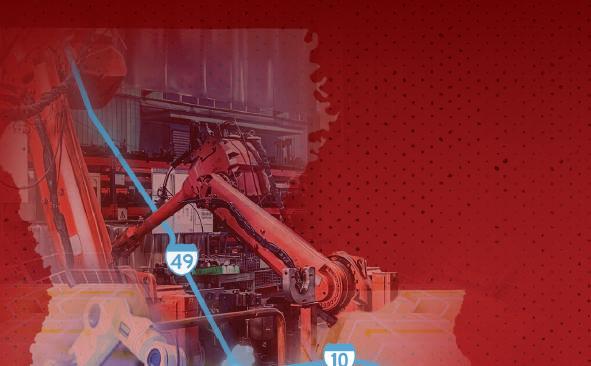































business reasons, not the demographics of the bidders.
DEI and affirmative action challenges also arise in the context of incentive agreements. Many municipalities and local governments require incentive recipients to meet or exceed participation goals for minority- and women-owned businesses.
The City of Cleveland, for example, adopted Ordinance No. 297-2023, requiring companies receiving financial assistance to contract with certified Minority Business Enterprises (MBEs) and Female Business Enterprises (FBEs). Projects receiving $250,000 or more in city assistance must enter into a Community Benefit Agreement (CBA). A standard CBA applies to projects under $20 million, while an expanded CBA is required for those over $20 million. Both versions include mandatory community benefits, with the expanded version also requiring additional considerations for legislative approval.
Incentive recipients must submit a specific plan to meet or exceed participation goals of 15 percent for certified MBEs and 7 percent for certified FBEs. Certification requires that a business be at least 51 percent owned and controlled by a minority or woman, respectively. Companies must report quarterly to Cleveland’s Office of Equal Opportunity to demonstrate CBA compliance.
Other cities have similar requirements. Cincinnati, for example, has mandated “best efforts” by developers to employ minority (11.8 percent) and female (6.9 percent) workers in each construction trade, referencing City Resolutions No. 32-1983 and 21-1998. Although these are often described as “goals,” the enforceability of such provisions remains unclear.

Similar contracting requirements have sparked legal challenges. A federal lawsuit was filed Feb. 5, 2025, by a landscaping business against Harris County, Texas, alleging that the county’s Minority and Women-Owned Business Enterprise (MWBE) program unconstitutionally prioritizes race over merit. See Landscape Consultants of Texas Inc. v. Harris County, Texas, Case No. 4:25-cv-00479 (S.D. Texas).
The lawsuit claims that Harris County imposes mandatory MWBE utilization goals on individual public contracts to meet an annual 30 percent “aspirational” MWBE goal. The complaint seeks declaratory and injunctive relief, citing violations of the Equal Protection Clause and 42 U.S.C. §§ 1981 and 1983.
In light of the new executive order targeting “illegal DEI,” it remains to be seen whether the Department of Justice will join or initiate similar litigation. Section 4 of the order seeks to “encourage the private sector to end illegal DEI discrimination and preference” and instructs the attorney general to propose a strategic enforcement plan. This includes identifying litigation “potentially appropriate for federal lawsuits.”
The order has likely increased the legal risks surrounding DEI and affirmative action. It has also complicated matters for companies that are bound by existing incentive agreements and now face the challenge of aligning their compliance with evolving federal interpretations.
1 See Executive Order issued Jan. 21, 2025, titled “Ending Illegal Discrimination and Restoring Merit-Based Opportunity.”


Our story is best told through the success of our members. Since 1988, South Carolina Power Team has been championing great stories through industry recruitment and by offering highly reliable power through South Carolina’s electric cooperatives. As an essential economic development partner, we continue to commit resources and incentives to help businesses thrive in South Carolina, and we play a critical role in the creation of job and career opportunities for those we serve.

MEYN AMERICA, LLC
$50 MILLION INVESTMENT
Expanding operations in Oconee County with 172 new jobs Served by Blue Ridge Electric Cooperative, Inc.

META
$800 MILLION INVESTMENT
Establishing its first South Carolina based data center in Aiken County Served by Aiken Electric Cooperative, Inc.
www.scpowerteam.com

Two decades of dealmaking, diversification, and economic momentum — this year’s Shovel Awards celebrate the states digging deepest to build the future.
By Andy Greiner Editor
It’s been 20 years since Area Development first handed out its inaugural Shovel Awards. In those two decades, we’ve seen seismic shifts in where and how America grows. From the rise of the electric vehicle industry to the return of semiconductor manufacturing on U.S. soil, the momentum has never let up. If anything, the pace has only quickened. And through it all, the states that earn Shovel Awards have led the charge, securing investments, creating jobs, and laying the groundwork for sustainable, long-term economic success.
The 2025 Gold and Silver Shovel Awards arrive during a time of remarkable resilience and forward-looking energy. Despite global headwinds, domestic uncertainty, and technological upheaval, the American economy continues to expand, fueled by billions in capital investment and a renaissance in domestic manufacturing. From EV batteries to semiconductors, aerospace to food production, and from rural communities to megaregions, the growth stories behind this year’s winners offer a powerful testament to the vision and coordination it takes to compete in today’s global economy.
Each year, Area Development recognizes states that stand out for their ability to attract high-impact economic development projects. Using data submitted by state economic development agencies, we evaluate the top projects based on job creation, capital investment, diversity of industry, and each state’s overall economic strategy. Gold and Silver Shovel Awards are given out in five population categories to ensure fair comparisons, and in recent years we’ve added Platinum and Green Shovel Awards to highlight standout overall performance and leadership in environmentally sustainable development, respectively.
Read on for a detailed look at this year’s topperforming states, the projects that earned them recognition, and the broader economic trends shaping America’s industrial future.
North Carolina earned this year’s Platinum Shovel with a remarkable blend of scale, sectoral breadth, and future-forward vision. At the heart of the state’s success are four standout Projects of the Year — each reinforcing a different aspect of North Carolina’s competitive advantage.
In Clayton, Novo Nordisk committed $4.1 billion to expand its pharmaceutical production campus, adding 1,000 jobs and reaffirming the Research Triangle’s place
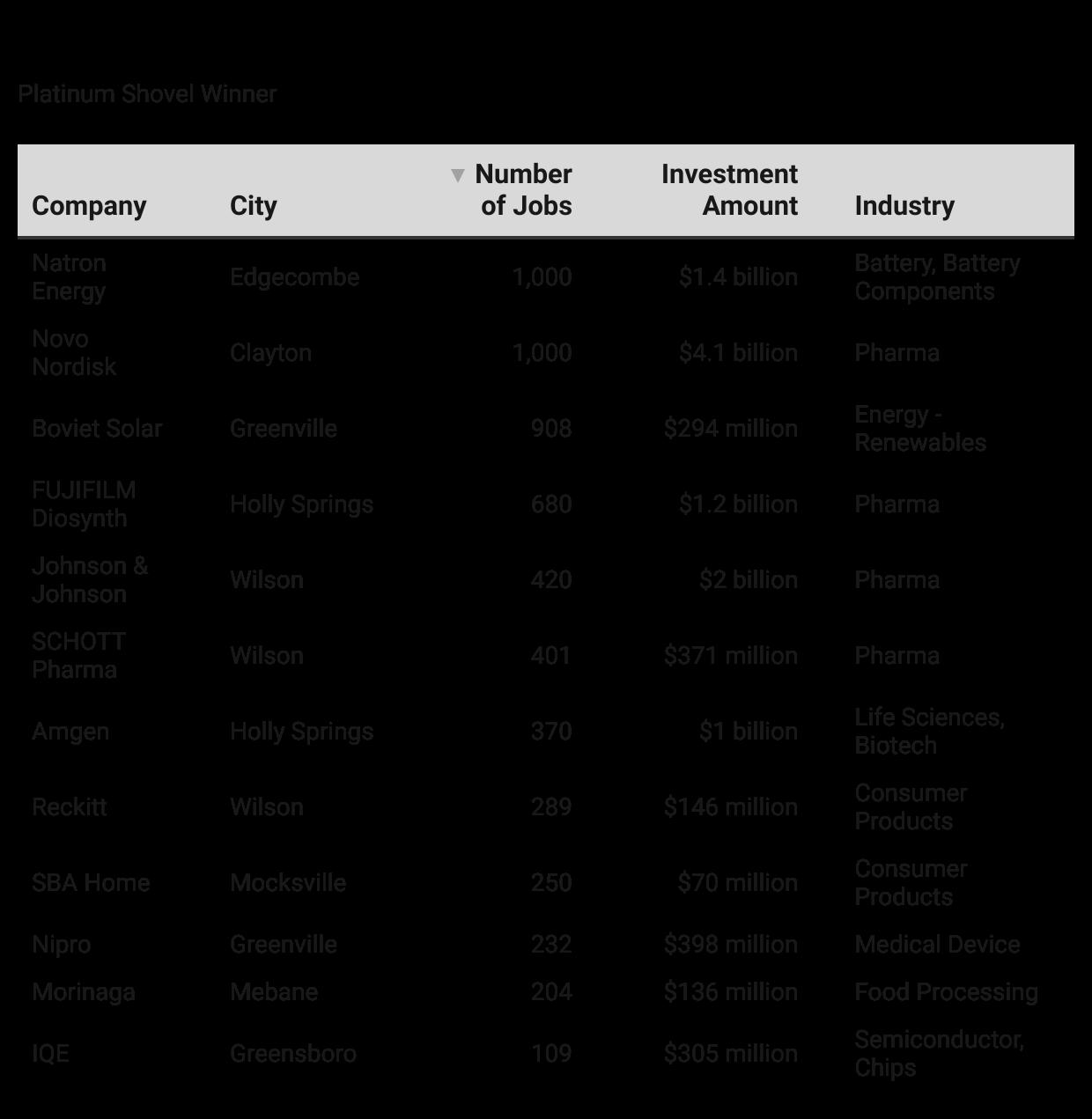
Expansion Manufacturing Project of the year
as a global life sciences leader. The project represents not only capital investment but also the kind of long-term, knowledge-based employment that lifts entire regions.
Also in pharma, FUJIFILM Diosynth Biotechnologies is investing $1.2 billion in its Holly Springs site, expanding capacity for biologics manufacturing and creating 680 new jobs. It’s a critical node in the nation’s healthcare supply chain and a clear signal that biomanufacturing is a North Carolina specialty.
The clean energy economy is growing here, too. Natron Energy selected Edgecombe County for a $1.4 billion battery component plant with 1,000 jobs, and Boviet Solar is launching a nearly $300 million solar manufacturing facility in Greenville. Together, these projects place North Carolina on the map as a key contributor to the renewable energy supply chain.
Supporting these mega-deals are a wide range of additional investments, including IQE’s $305 million semiconductor expansion in Greensboro, Nipro’s $398 million medical device project in Greenville, and a trio of new and expanded facilities from Johnson & Johnson, Reckitt, and SCHOTT Pharma in Wilson County.
Whether it’s chips, drugs, batteries, or solar cells,
Shovel-ready sites and talent programs are helping Virginia win major manufacturing projects
By Virginia Economic Development Partnership (VEDP)
In April, LS GreenLink USA, Inc., broke ground on its highvoltage direct current submarine cable manufacturing facility on a brownfield site in the city of Chesapeake. The facility, conveniently located near the Port of Virginia’s Norfolk Harbor and the Atlantic Ocean, is expected to begin operations in 2028 and will create 330 full-time jobs. The new facility will serve the global offshore wind industry and, as Gov. Glenn Youngkin noted, “showcase the Commonwealth as a leader in offshore wind industry manufacturing.” LS selected Chesapeake over potential sites in 15 states, in large part due to its skilled workforce — notably its strong veteran population.
The LS GreenLink project was one of three Virginia wins recognized with a Gold Shovel Award from Area Development in 2025, alongside Micron Technology Inc.’s $2.2 billion expansion in Manassas and Microporous LLC’s $1.4 billion facility in Pittsylvania County.
The use of a brownfield site highlights Virginia’s adaptability in delivering shovel-ready sites. A key contributor is the Virginia Business Ready Sites Program (VBRSP) — a major reason why Virginia ranked as America’s Top State for Business in CNBC’s
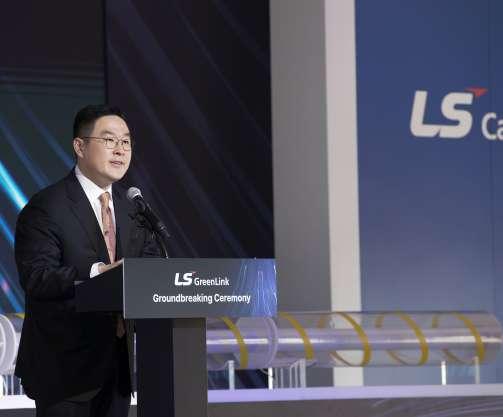
2024 analysis. The program pre-certifies sites by partnering with localities, utilities, and state agencies to streamline permitting and set the stage for smooth construction.
The VBRSP identifies and prepares potential industrial sites of at least 100 acres — or 50 acres in western, mountainous regions — and has awarded more than $200 million in grants over the past two years. These funds help develop infrastructure and secure approvals to enable speed to market, a top priority for companies establishing new facilities.
Site readiness was a decisive factor in major projects such as the LEGO Group’s sustainably designed manufacturing plant, now under construction in Chesterfield County’s Meadowville Technology Park. To date, 44 sites have received development grants, and more than 10,000 jobs have been announced on sites that benefited from the VBRSP. The 2024 grants alone supported 22 sites representing more than 10,000 acres of developable land.
The VBRSP is just one way Virginia works to eliminate risk for corporate investors. In early 2024, the General Assembly passed legislation establishing the Virginia Business Ready Permitting Program, designed to fast-track approvals for transformational economic development projects and eliminate major delays.
Another advantage for employers is the Virginia Talent Accelerator Program, which supported both the LS GreenLink and LEGO Group projects. Named the top workforce program in the U.S. by Business Facilities in 2024, the Talent Accelerator combines custom recruitment marketing, direct candidate outreach, and training support. Since launching in 2020, the program has helped secure nearly 13,000 jobs.
Virginia’s commitment to reducing risk and accelerating project success transcends politics. Whether led by Democrats or Republicans, the Commonwealth has consistently delivered a best-in-class business climate. Its proactive approach to site readiness, permitting, and workforce development makes it easier for companies to move quickly — and with confidence.
This article was paid for and written by Virginia Economic Development Partnership and approved by Area Development.


North Carolina has emerged as a magnet for capital and innovation. Its well-coordinated ecosystem — from community colleges to logistics corridors — has proven to be more than ready for today’s advanced industries. That’s why, in 2025, North Carolina stands alone at the top of the Shovel Awards podium.
Texas takes home the Gold Shovel once again in the largest population category, anchored this year by an astonishing $10.6 billion in total capital investment across a dozen highimpact projects. Leading the charge is ECL, with a massive $8 billion commitment to build a new data processing facility in Houston — a transformative project that positions the state as a backbone of the global cloud and AI infrastructure economy.
But Texas’s wins this year go far beyond digital infrastructure. The state is seeing notable growth in energy-related technologies, including battery and power management. Freyr Battery is investing $340 million in a facility that adds crucial momentum to the domestic energy storage sector, while Delta Electronics, a manufacturing project of the year, is contributing another $452 million to strengthen Texas’s role in power electronics and grid support.
Life sciences are also taking root in Texas, with projects from QYK Brands, a manufacturing project of the year, and BillionToOne — the former committing $400 million to biotech production and the latter contributing intellectual and R&D firepower to the mix.
Meanwhile, companies like Crystal Window and Door Systems are reinforcing the state’s role in advanced construction products with a $121 million facility in Mansfield expected to bring more than 500 jobs. Rounding out the year’s highlights are expansions from Amazon, Flex Ltd., and Raising Cane’s, each playing a role in strengthening Texas’s logistics, consumer products, and food processing base.
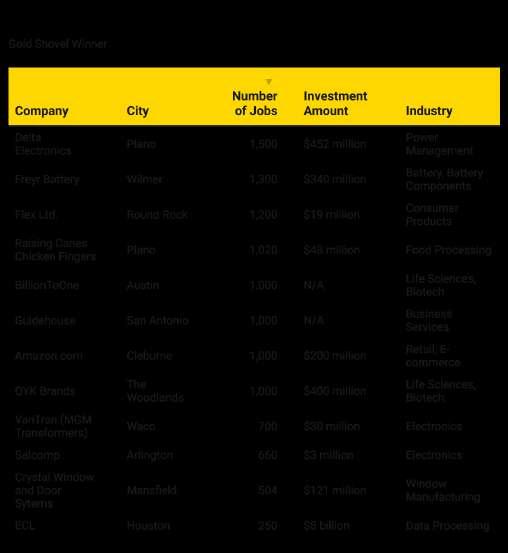
Expansion
Non-Manufacturing Project of the year
Manufacturing Project of the year
Virginia earns this year’s Gold Shovel with a slate of projects that showcase the state’s range — from deep-tech investments in semiconductors and batteries to strategic growth in pharmaceuticals, defense, and clean energy. Together, these initiatives represent billions in capital investment and more than 4,500 new jobs across the commonwealth.
At the top of the list is Micron Technology’s $2.17 billion expansion in Manassas, a project of the year that reinforces Virginia’s role in the domestic semiconductor supply chain. It’s a major vote of confidence in both the region’s technical talent and its global competitiveness in high-tech manufacturing.
Another standout project and project of the year is Microporous, investing $1.35 billion in Danville to produce advanced battery components. That single project accounts for more than 2,000 of the new jobs in Virginia this year and is a critical building block in the broader transition to electric vehicles and grid-scale storage.
Energy is also part of the story, with LS Greenlink USA committing $681 million to Chesapeake for a renewable power transmission project. On the life sciences front, Afton Scientific is expanding in Charlottesville with a $202 million pharmaceutical manufacturing facility.
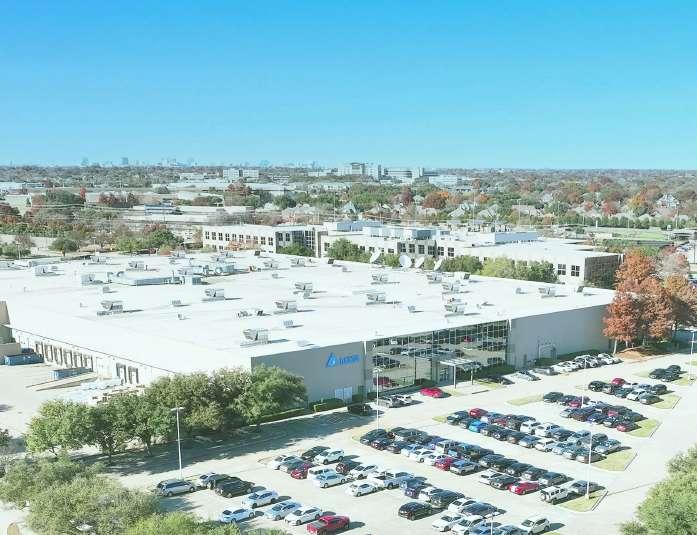

Virginia’s momentum also reaches into aerospace, defense, automotive, and advanced HVAC. Kongsberg Defence & Aerospace, RBW Electric Cars, and Condair are just a few of the companies helping round out a roster that touches virtually every corner of the advanced manufacturing economy.
What binds these projects together is a strong workforce pipeline, strategic infrastructure, and the ability of state and local leaders to move fast on opportunity.
Arizona reclaims Gold Shovel honors in 2025 with a blockbuster year led by one of the largest investments in U.S. tech history. Taiwan Semiconductor Manufacturing Company (TSMC) has committed $25 billion to its Tempe operations, adding 1,500 high-wage jobs and accelerating Arizona’s transformation into a global hub for advanced microelectronics.
TSMC’s staggering commitment headlines a deep roster of semiconductor and chiprelated investments. KoMiCo, Pentagon Technologies, and Saras Micro Devices all added multimillion-dollar expansions in Mesa and Chandler, further solidifying Arizona’s semiconductor cluster and its strategic value to U.S. reshoring efforts. These moves build on the state’s growing reputation as a critical piece of the national supply chain for everything from smartphones to satellites.
But chips weren’t the only bright spot. GTI Fabrication in Goodyear is ramping up battery component production with a $43 million investment and 600 new jobs. And in Mesa, CarbonCapture is laying the foundation for a new carbon storage hub — a rare play in the climate tech space that underscores Arizona’s diversity of innovation.
Aerospace also had lift. Ascent Aviation in Marana and MHI RJ Aviation in Tucson committed to growing Arizona’s MRO (maintenance, repair, and overhaul) capabilities, expanding the state’s aviation workforce and infrastructure. Meanwhile, major consumer goods expansions from FrameTec, Puma, and Tricolor round out the state’s industrial growth with more than 1,000 additional jobs.
From semiconductors to carbon storage, and aviation to batteries, Arizona’s 2025 project
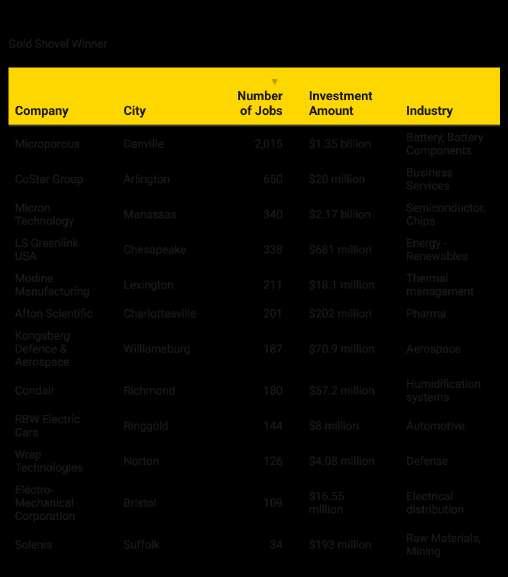
Expansion
Manufacturing Project of the year

Expansion
Manufacturing Project of the year

slate proves it’s not just scaling — it’s evolving. That dynamic, future-facing growth earns the Grand Canyon State a well-deserved Gold Shovel.
Indiana moves up to the Gold Shovel ranks this year on the strength of a high-powered portfolio that spans pharma, automotive, aerospace, and digital infrastructure — with multiple billiondollar-plus projects driving statewide impact.
The headliner is Amazon Data Services, building a $11.2 billion data center campus in New Carlisle, one of the largest single capital investments in state history. It’s a transformative project not only for St. Joseph County but for Indiana’s long-term role in supporting the nation’s digital backbone.
But that’s far from the only headline. Eli Lilly’s $7.8 billion pharma campus in Lebanon will create nearly 440 jobs and anchor a biotech cluster outside Indianapolis. And Microsoft has committed $3 billion to a new data center in LaPorte County, reinforcing Indiana’s dual role in tech and life sciences.
There’s muscle in the industrial sectors, too. Toyota Motor Manufacturing Indiana is putting $632 million into its Princeton facility. Caterpillar continues to deepen its Lafayette presence with a $725 million investment, and Google adds a $2.4 billion site in Fort Wayne, further reinforcing Indiana’s draw for tech titans.
Complementary growth includes Sephora’s new distribution center in Avon, Vital Farms’ expansion in Seymour, and additional projects in roofing materials, R&D, and advanced manufacturing.
This year’s Gold Shovel for Indiana reflects the state’s steady evolution — from a manufacturing stalwart to a modern logistics and tech magnet, ready for a reshaped industrial era.
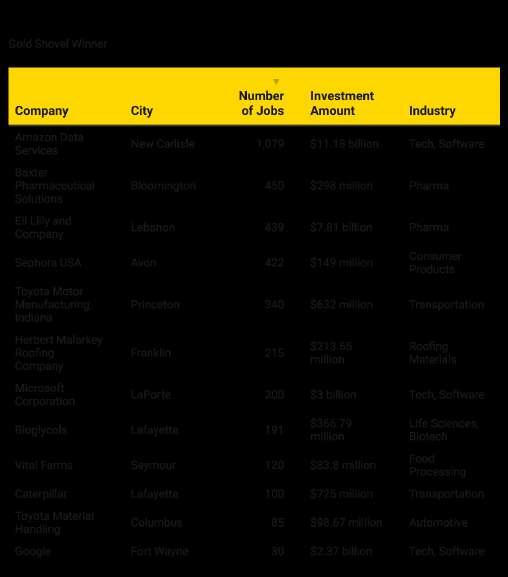
Expansion
Non-Manufacturing Project of the year
Manufacturing Project of the year











The future is firmly rooted in Arizona as the home of innovative businesses from around the world. Major investments made in 2024 continued to advance the state’s thriving ecosystem and has earned Arizona its 7th Gold Shovel Award. Arizona’s banner economic activity is marked by TSMC’s ongoing expansion in the state. The leading-edge chip manufacturer in April 2024 announced it will build its third fab at TSMC Arizona. The project will leverage the most advanced semiconductor process technology in the United States and is recognized as Area Development’s 2025 Manufacturing Project of the Year.
Arizona is a premier location to catalyze advanced technologies and offers a lifestyle that allows employees to achieve their personal goals with endless outdoor activities, vibrant arts and culture, and affordable living. It’s this perfect balance that makes life better here — and provides the winning combination for global innovators.





Louisiana’s Gold Shovel is marked by a sweeping surge in energy transition investments, advanced manufacturing, and carbon capture infrastructure — a bold new chapter for a state long known for its industrial might. It’s no surprise that Louisiana also earned Area Development’s Green Shovel honor, too.
Leading the way is Lake Charles Methanol, committing $3.2 billion to a major facility in southwest Louisiana that will use carbon capture technologies to reduce emissions in hydrogen and methanol production. It’s one of several projects in the state’s rapidly growing climate-tech corridor, which also includes Heirloom Carbon Technologies in Shreveport and Climeworks in Calcasieu Parish — two next-generation direct air capture hubs.
Meanwhile, Woodlands Biofuels Inc. is bringing $1.35 billion to Reserve for a biorefinery that converts biomass into clean fuel, and UBE C1 Chemicals America is investing $500 million in Jefferson Parish for advanced materials manufacturing. These projects signal a shift in the state’s industrial strategy — one that layers clean energy priorities onto an already deep foundation of chemical and refining expertise.
But the biggest single deal is squarely in the digital space. Meta’s $10 billion data center in Holly Ridge — one of the largest in the country and a non-manufacturing project of the year— is more than a capital commitment; it’s a transformation. The project not only introduces high-tech jobs into a traditionally manufacturing-heavy region, but also places Louisiana on the digital infrastructure map for decades to come.
Smaller-scale but equally diverse wins round out the story: Global Seamless Tubes & Pipes in Mansfield, Agile Food Storage in Pearl River, and Life for Tyres in Reserve add jobs in metal fabrication, logistics, and recycling, respectively.

Expansion
Non-Manufacturing Project of the year
For the second year running, Louisiana also claims this year’s Green Shovel Award, recognizing its leadership in clean energy and carbon reduction.
The state’s 2025 portfolio includes a powerful lineup of climate-forward projects: Lake Charles Methanol’s $3.2 billion low-carbon facility, Woodlands Biofuels’ $1.35 billion biorefinery, and two emerging direct air capture hubs from Heirloom and Climeworks. Together, they form one of the country’s most ambitious energy transition ecosystems.
From biomanufacturing to carbon removal, Louisiana is proving that legacy industrial states can also lead the green future.
In a stunning show of confidence from one of the world’s biggest tech giants, Amazon Web Services announced a $10 billion investment in Madison, Mississippi — the kind of jaw-dropping number that reshapes an entire state’s economic trajectory. This hyperscale data center project is not only the largest single investment in Mississippi history, it places the Magnolia State squarely in the conversation about cloud infrastructure and next-generation digital economy assets.
But Amazon’s megadeal was just the headline. Another transformational project comes from Amplify Cell Technologies, with a $1.9 billion battery component manufacturing facility in Marshall County that’s expected to create 2,000 jobs – which earned it project of the year honors. With this investment, Mississippi deepens its ties to the fast-growing EV supply chain while bringing high-tech manufacturing to the northern corridor.
Elsewhere, the state continues to diversify its industrial base. Liebherr is investing more than $238 million to grow its construction equipment footprint in Tupelo,

Non-Manufacturing Project of the year Manufacturing Project of the year

and PCC Gulf Chem is expanding its chemical production capabilities in DeLisle with a $540 million commitment. Aerospace firms like Anduril Industries and Aurora Flight Sciences are scaling operations in McHenry and Columbus, respectively — further boosting Mississippi’s standing in defense and aerospace manufacturing.
Consumer products and legacy sectors had their moment, too. Ashley Furniture is investing in twin facilities in Verona and Saltillo, while Koch Foods, Superior Optical Lab, and Gulf States Canners are anchoring food, eyewear, and packaging production across multiple counties.
With more than $13 billion in capital investment tallied across just a dozen major projects, Mississippi proved this year that small states can land big deals — and that when tech titans and clean tech manufacturers go shopping for locations, Mississippi is ready with shovelready sites and statewide support.
The Silver Shovel Awards honor states that demonstrated outstanding economic development performance, even if they didn’t reach the Gold tier. From foundational reinvestments to sector-specific breakthroughs, these winners helped shape the industrial landscape of 2025 with projects that matter.
New York’s Silver Shovel year was highlighted by one of the largest individual capital investments in the nation: Global Foundries’ $12.5 billion expansion, a massive project that adds more than 1,100 jobs and positions the state at the epicenter of the domestic semiconductor revival.
That marquee investment, a project of the year, was supported by a well-rounded mix of expansions and new operations in food processing, industrial equipment, renewable energy, and financial services. Wells Enterprises, now a part of the Ferrero Group, is investing $175 million in its Dunkirk facility to expand frozen dessert production, and Chobani is investing

Non-Manufacturing Project of the year Manufacturing Project of the year
$100 million in its headquarters, which earned a non-manufacturing project of the year.
Meanwhile, Corning Incorporated is committing $371 million to its Canton operations to enhance optical materials manufacturing — key infrastructure for modern telecommunications.
The renewable energy and cleantech space saw a boost with GE Vernova’s $96 million expansion in Schenectady, and servicesector firms like CBRE, Bridgewater Associates, and iCapital added jobs and capital investment in the financial core.
Illinois secured its Silver Shovel this year with a pair of standout technology investments that signaled the state’s growing role in the digital and quantum economy. Leading the way is Compass DataCenters, committing $10 billion to a massive facility in Hoffman Estates that will power cloud-based services, AI applications, and digital infrastructure in the region. Not far behind is PsiQuantum, bringing more than $1 billion to Chicago in pursuit of the world’s first commercially viable quantum computer. Microsoft is also investing $250 million in a data center here, which earned
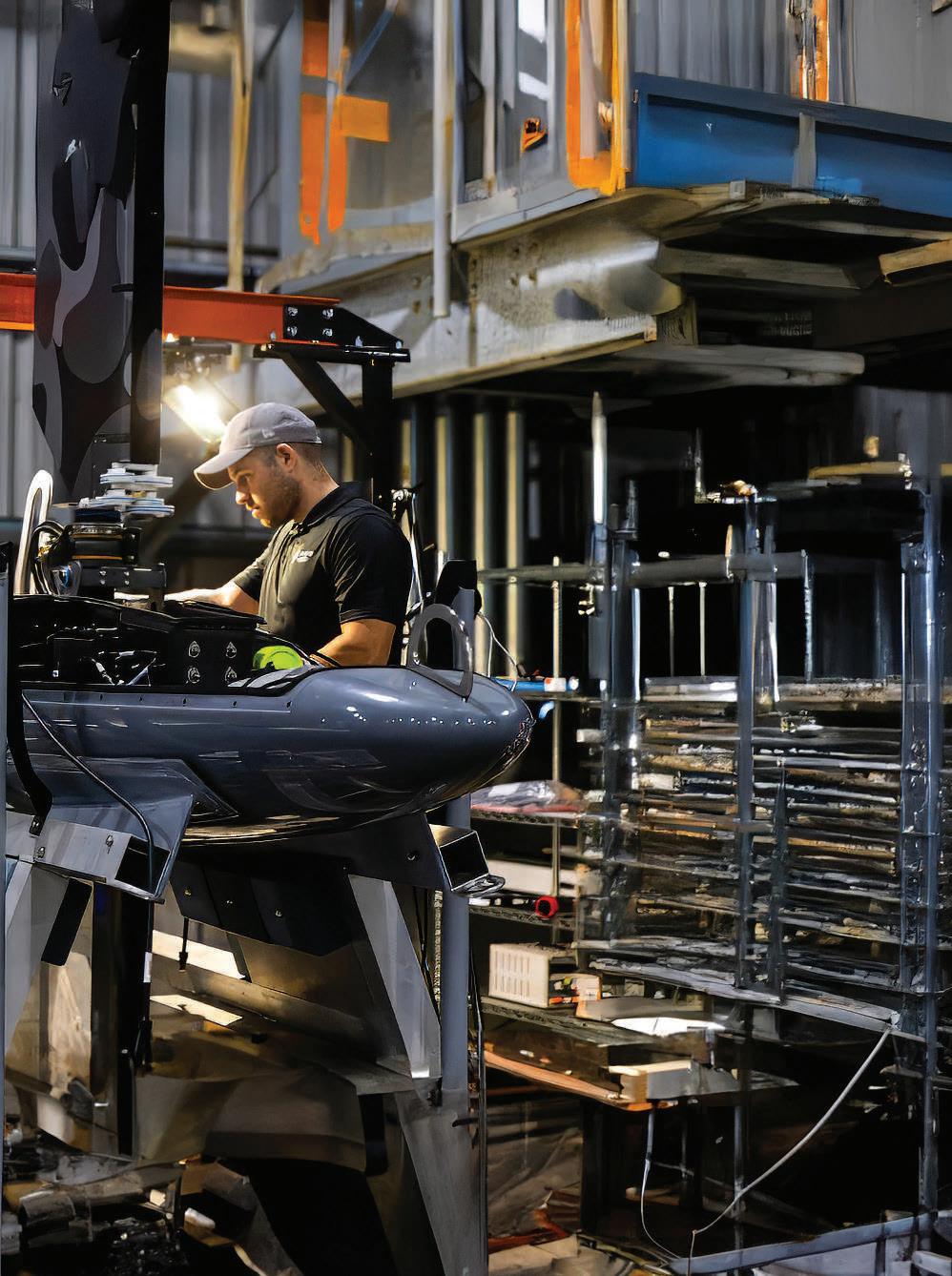



non-manufacturing project of the year honors.
That tech firepower is balanced by traditional strengths in manufacturing and agriculture. Wieland’s $500 million investment in East Alton expands production of copper and alloy products, reinforcing Illinois’ role in industrial materials.
With billions flowing into next-gen computing and foundational reinvestments across multiple sectors, Illinois once again demonstrated why it remains an industrial and technological cornerstone of the Midwest.
Michigan’s Silver Shovel this year reflects a state retooling for the future — while remaining firmly rooted in its industrial DNA. From the shores of Lake Michigan to the tech corridors of Detroit, Michigan attracted more than $3.7 billion in capital investment across a dozen major projects.
One of the most significant is Dow, Inc.’s $1.57 billion reinvestment in Midland, modernizing its legacy chemicals complex with a sustainability-driven expansion. This isn’t just maintenance — it’s a vision for decarbonized, next-generation chemical production that can anchor both domestic supply chains and global competitiveness.
Meanwhile, Corning Incorporated is bringing $900 million to Richland for a major energy-efficient materials facility, creating over 1,100 jobs in the process. That project adds major momentum to the state’s renewable energy component manufacturing base and earned a non-manufacturing project of the year distinction.
Detroit, as ever, is in motion. The city and its suburbs welcomed investments from Fortescue Future Industries, Detroit Diesel, Laepple Automotive, Lucid Motors, and Piston Automotive — all contributing to the state’s continued relevance in the auto and mobility space, now increasingly tied to electrification and low-emission vehicle platforms.
There were wins in aerospace, too — Howmet’s $215 million expansion in Whitehall
Continued on page 50
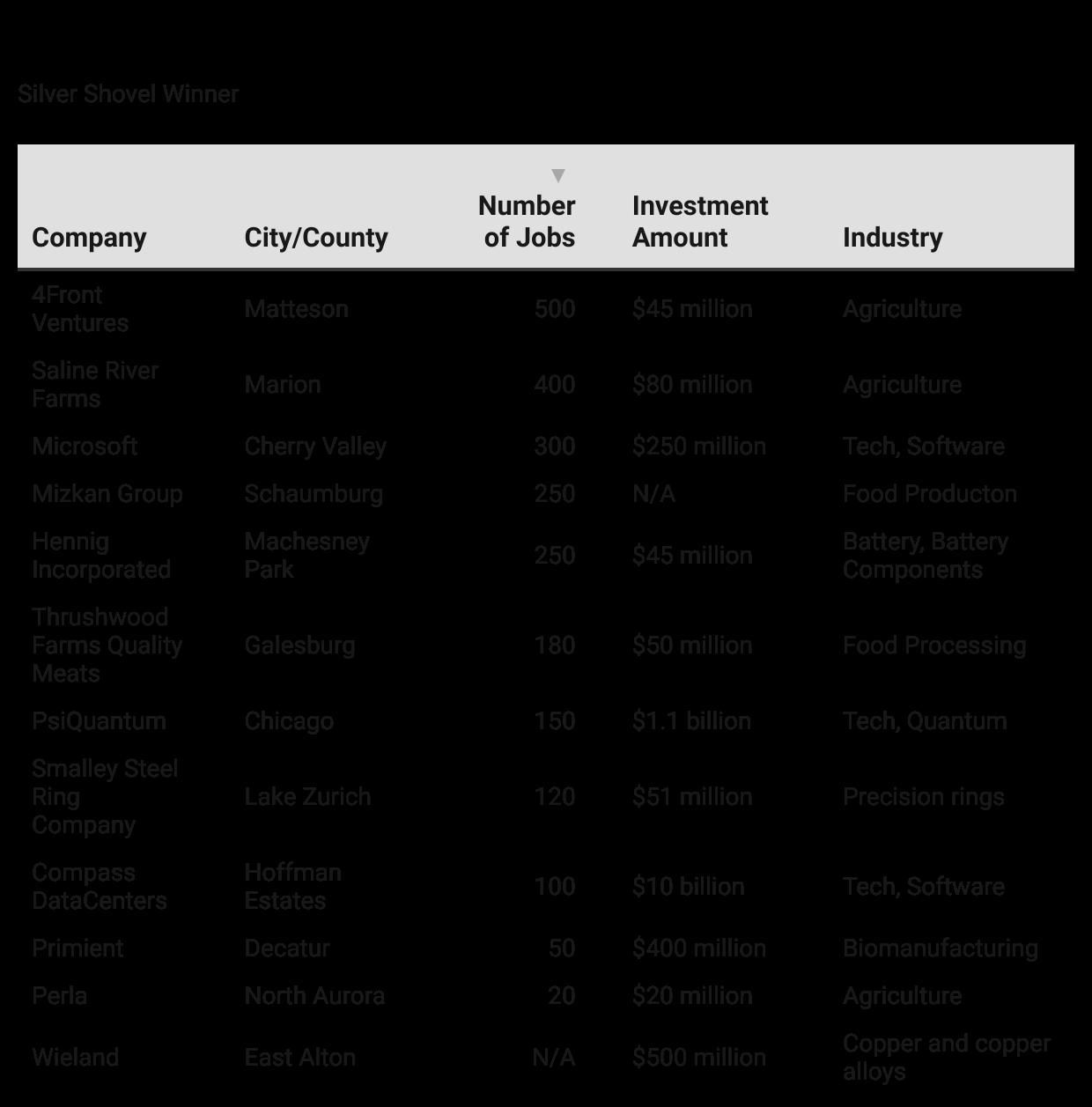
Expansion
Non-Manufacturing Project of the year
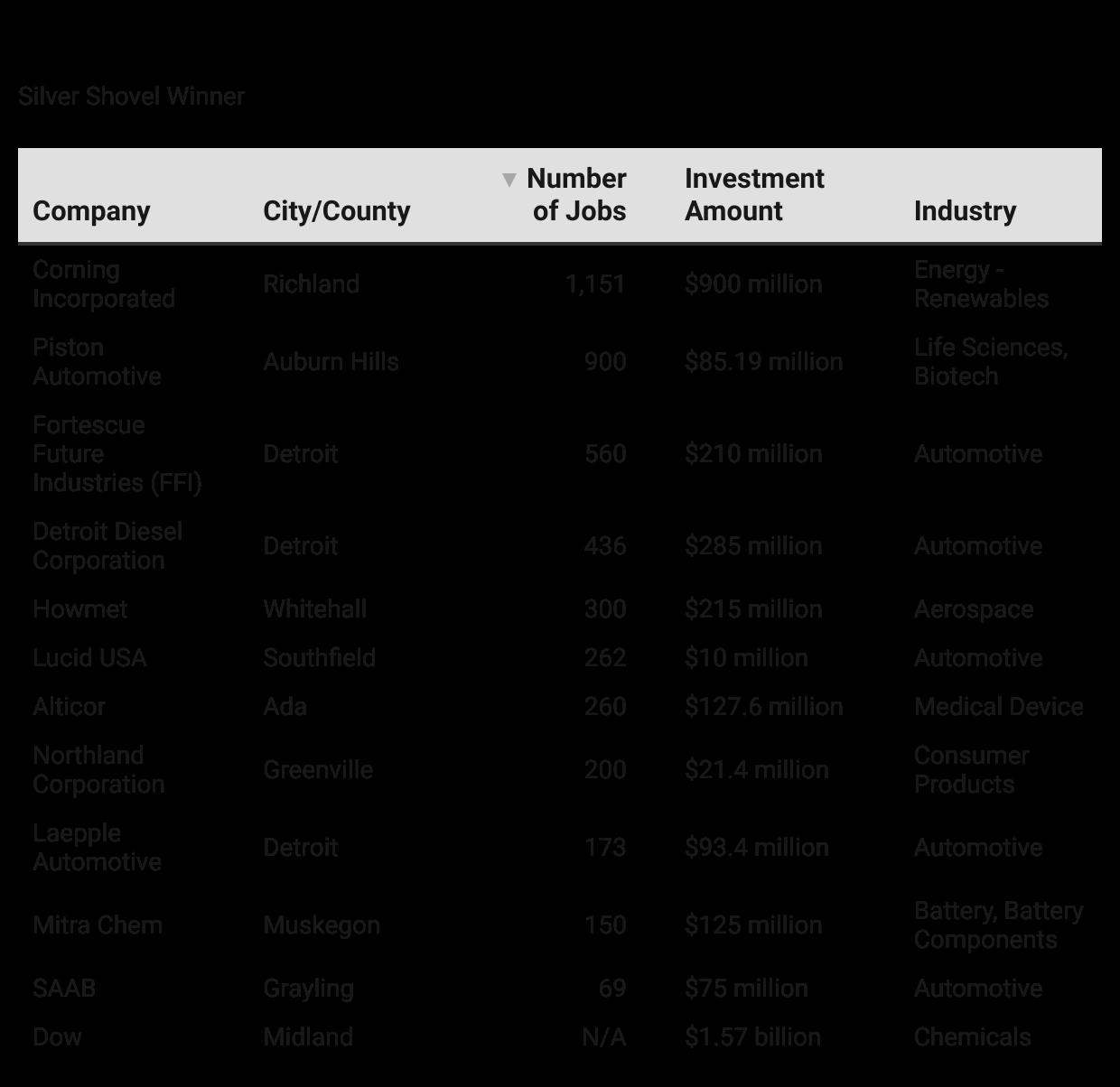
Expansion
Non-Manufacturing Project of the year
Stone County, Mississippi
60 New Job Commitments
$75 Million Investment

Anduril is a defense technology company on a mission to transform U.S. and allied militaries with advanced technology. Anduril combines modern software expertise with a rapid and differentiated approach to hardware development and manufacturing.
Scott County, Mississippi
128 New Job Commitments
$145.5 Million Investment

Koch Foods is a U.S.-based retail, wholesale and industrial foodservice provider that stands out as one of the nation’s largest poultry processors. To better serve its customers, Koch Foods is expanding its processing and distribution operations and rehabbing its facility in Morton.
Jackson County, Mississippi
188 New Job Commitments
$12.5 Million Investment
Superior Optical Lab operates one of the most technologically advanced wholesale optical laboratories in the United States and recently completely an expansion that created 45,000 square feet of production space. This new investment will further increase Superior’s capacity and help it become a more efficient and reliable manufacturer to its many customers.
By Michigan Economic Development Corporation
Michigan has long been a critical gateway for goods moving between the U.S. and international markets. But today, it’s doing more than moving freight — it’s modernizing the systems, technology, and talent behind resilient supply chains that companies can depend on in an unpredictable world.
Bordering four of the five Great Lakes and Canada’s economic engine in Ontario, Michigan boasts five international border crossings, 33 active cargo ports, four Class I railroads, and Detroit Metropolitan Airport — one of the country’s busiest air cargo hubs. These advantages form the physical backbone of a globally connected state. But Michigan is taking that network a step further by investing in the infrastructure of the future.
In Detroit, the Port Authority and Wayne County are spearheading a $25 million effort to electrify port operations, modernize equipment, and reduce emissions — with support from the U.S. EPA’s Clean Ports Program and Michigan’s Make It in Michigan Competitiveness Fund. These upgrades, which also support workforce development for electrical trades, are expected to improve air quality and strengthen the port’s capacity to handle high-value cargo, especially between Detroit and Windsor, where $600 million in trade flows daily.
This is just one piece of a broader strategy. Michigan is also expanding its role in high-tech manufacturing and smart logistics through innovative public-private partnerships. Automation Alley’s Project DIAMOnD — a distributed network of 3D printers — recently received $1.9 million in federal support to help small and midsized manufacturers reduce costs, increase production flexibility, and adopt digital technologies. The initiative is already boosting capabilities in energy efficiency and emissions reduction for over 100 companies across the state.
And Michigan’s Supply Chain Resiliency (SCR) team is helping companies directly. Focused on advanced manufacturing, mobility, clean energy, aerospace, and defense, the SCR program connects Michigan suppliers to high-value purchasing and investment opportunities. By coordinating with corporate buyers, investors, and public agencies, the SCR team is equipping local companies to adapt to global trends, integrate new technologies, and expand into emerging markets.
Recent company announcements further underscore the momentum. Four advanced manufacturing projects — including a hydrogen R&D hub by Robert Bosch, a clean-tech HQ for NxLite, a battery recycling facility by Envergia, and an expansion by software simulation firm dSPACE — are bringing $55 million in new investment and more than 160 good-paying jobs to

Southeast Michigan. These projects highlight the state’s talent depth, infrastructure readiness, and collaborative economic development approach.
What sets Michigan apart is its ability to match world-class logistics with an equally sophisticated support ecosystem. Through programs like the Michigan Economic Development Corporation’s Office of Future Mobility and Electrification, the state is aligning its incentives and infrastructure with next-generation mobility, decarbonization, and advanced manufacturing goals.
As companies look to de-risk operations, regionalize supply chains, and move closer to both talent and trade, Michigan offers more than a strategic location — it offers a tested partner. Whether shipping across borders or building a connected future, Michigan is helping companies not just move, but move smarter.
In Michigan, supply chain resiliency isn’t a buzzword — it’s a blueprint.
advertisement was written by Michigan Economic Development Corporation with input from Area Development and approved for publication.

MACKINAC BRIDGE
As the #1 state for energy-sector job growth and climate preparedness, it’s no surprise Michigan is home to the 2025 Project of the Year . The award-winning Corning project will strengthen a robust supply chain for affordable, reliable energy. Join the ranks of top companies taking advantage of clean energy initiatives as we lead the charge toward carbon neutrality by 2050. Seize your opportunity at MICHIGANBUSINESS.ORG.

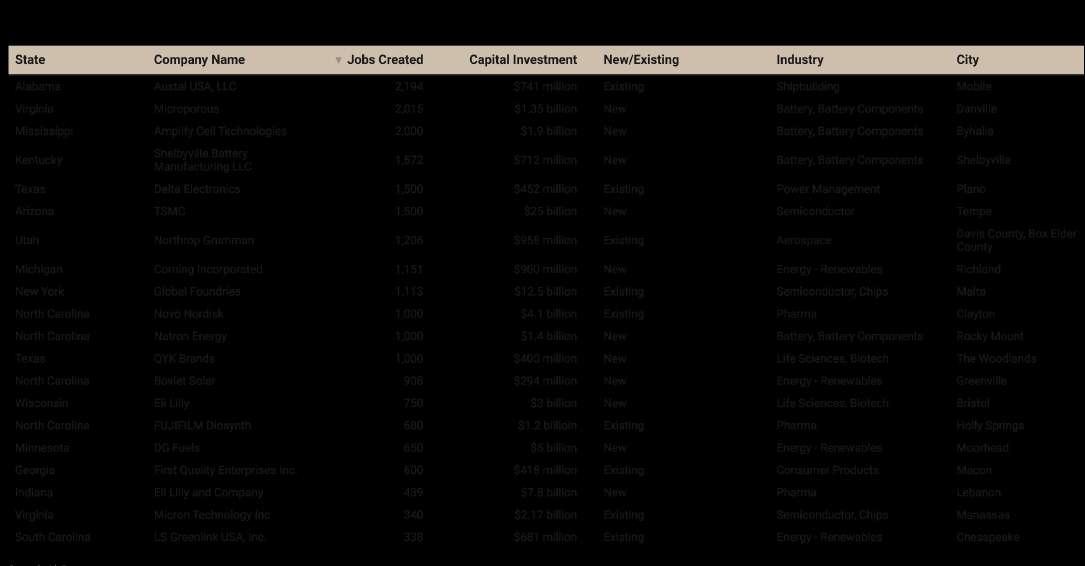
From semiconductors to shipbuilding, biotech to batteries, the 2025 Manufacturing Projects of the Year prove that the U.S. industrial economy is anything but slowing down. In fact, many states posted record-setting investments that showcase the shifting landscape of advanced manufacturing and its evolving workforce.
New York takes the crown for sheer scale, with GlobalFoundries’ $12.5 billion chip plant expansion in Malta — a project that reinforces U.S. efforts to reshore semiconductor production and create more than 1,100 high-skill jobs.
But it wasn’t just chips making headlines. Indiana’s Eli Lilly committed nearly $7.8 billion to a new pharma campus in Lebanon, while Novo Nordisk in North Carolina and Eli Lilly in Wisconsin each pushed life sciences and biotech deeper into the American heartland.
The battery boom continued to drive investment across the Southeast and beyond. Amplify Cell Technologies in Mississippi, and Microporous in Virginia each launched billion-dollar-plus battery component facilities — part of a broader wave of electrification tied to transportation and grid storage. Kentucky and Texas also added major battery and power management projects, helping solidify their roles in this critical supply chain.
Meanwhile, Minnesota’s DG Fuels is building a $5 billion renewable fuels plant in Moorhead, and Austal USA in Alabama is growing its shipbuilding capacity with more than 2,100 new jobs in Mobile — showing that even traditional sectors are embracing scale, automation, and sustainability.
Whether the focus is chips, ships, drugs, or volts, this year’s winning projects illustrate just how dynamic — and indispensable — American manufacturing has become.


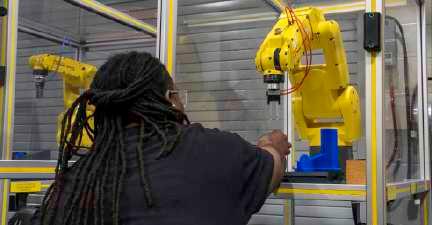




Continued from page 44
boosts capacity for aircraft components, and SAAB’s $75 million investment in Grayling brings advanced auto tech to the northern part of the state.
Georgia’s Silver Shovel this year is all about breadth — from paper products and EV supply chains to fantasy sports tech and e-commerce logistics. Across this varied portfolio, the state secured significant capital investment and created more than 5,000 new jobs.
Two major expansions in Macon led the way. Irving Consumer Products committed over $577 million to grow its paper goods production, while First Quality Enterprises invested $418 million in its hygiene and paper facility – a project of the year. Together, the two projects deepen Georgia’s long-standing strengths in consumer products and advanced manufacturing.
On the EV and automotive front, Georg Fischer Automotive AG broke ground on a $184 million battery component facility in Augusta, and Hwashin committed $176 million in Dublin for auto parts production. These projects support Georgia’s broader role in the electrification of mobility across the Southeast.
Georgia also saw key wins in automation and logistics, including GreenBox Systems’ $144 million investment in Jackson for hightech warehouse services -- a non-manufacturing project of the year winner -- and a $70 million Amazon facility in White, adding 1,000 jobs.
In a unique twist, one of the state’s fastestgrowing employers is in fantasy sports: PrizePicks, a tech-based sports gaming firm, is bringing more than 1,000 jobs to Atlanta with a $25 million headquarters project. It’s a sign that Georgia’s tech ecosystem is thriving in both traditional and emerging verticals.
Wisconsin
Wisconsin lands a Silver Shovel in 2025, thanks to a well-balanced mix of high-tech infrastructure and legacy manufacturing
Continued on page 54
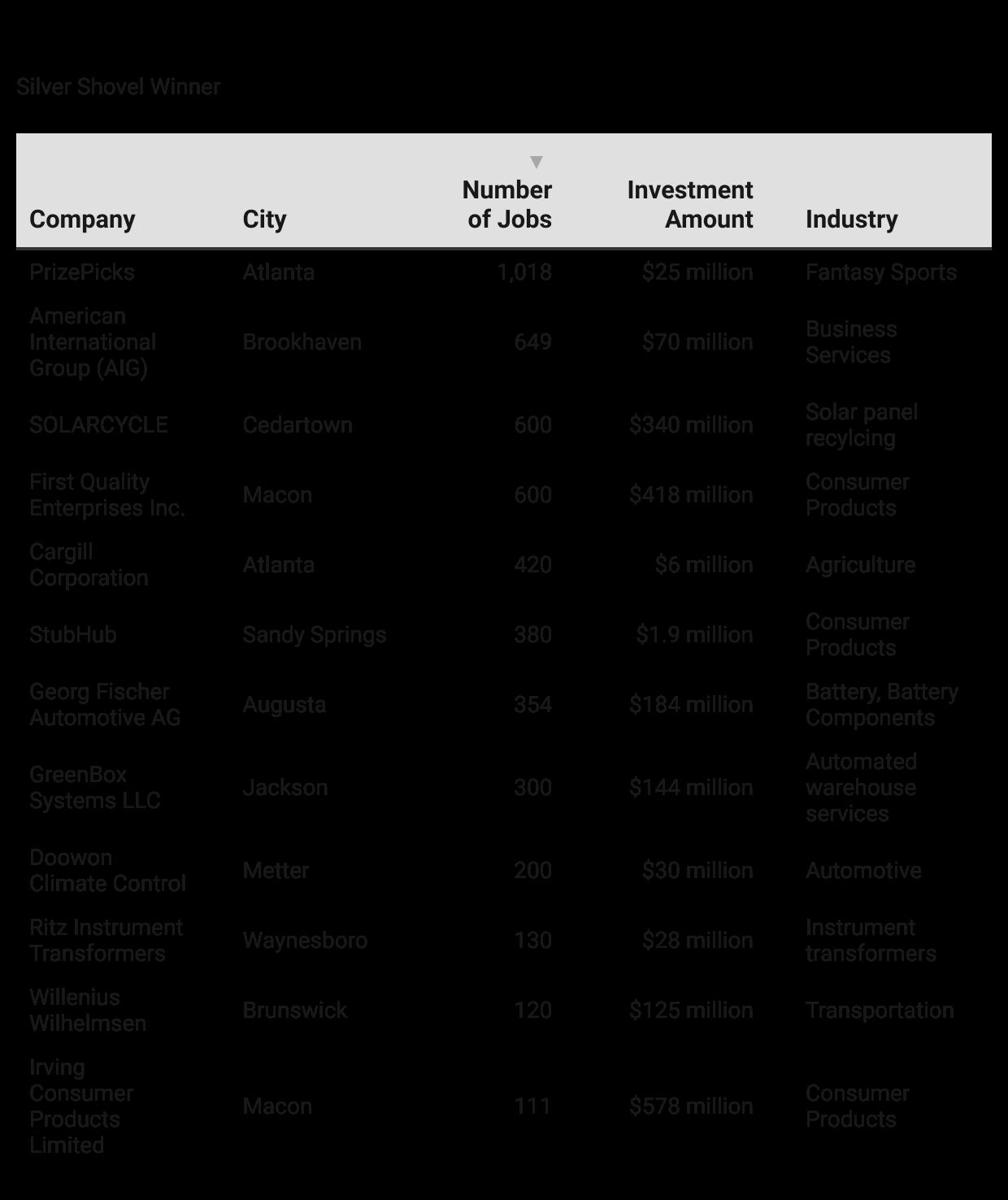
Expansion
Non-Manufacturing Project of the year
Manufacturing Project of the year

Expansion
Non-Manufacturing Project of the year
Manufacturing Project of the year
In Macon, companies don’t just break ground; they break records.
The companies that choose Macon are the ones ready to dig deep into the work, the opportunity, and the future. Here, expanding isn’t a gamble; it’s a strategy.
That’s why First Quality and Irving Consumer Products didn’t just come to Macon, they doubled and even tripled down. From major expansions to meaningful contributions, they’ve built more than facilities. They’ve built momentum, helping shape a region that saw over $1 billion in private investments in 2024 alone.
Their success and earned recognition prove what we’ve always known: when industry invests in Macon, Macon returns the favor.
Dig deeper. Expand further. Build your future in Macon.

While factories and gigaplants often grab the spotlight, this year’s top non-manufacturing projects reveal just how vital digital infrastructure, logistics, and R&D have become to state-level economic growth. In 2025, data centers dominated — but they weren’t alone.
Indiana leads the list with Amazon Data Services’ staggering $11.2 billion investment in a new data center campus in New Carlisle. That alone would be enough to turn heads, but the Hoosier State also welcomed a $3 billion Microsoft facility in LaPorte and a major Sephora distribution center near Indianapolis.
Mississippi made headlines of its own with Amazon Web Services’ $10 billion campus in Madison, while Meta launched a similarly priced buildout in Louisiana — both reinforcing the Southeast’s rise as a backbone of the digital economy. Meanwhile, Texas welcomed ECL’s $8 billion data processing site in Houston, reflecting the power draw of AI, cloud, and real-time computing.
Wisconsin and Georgia also stood tall. Microsoft picked Mt. Pleasant for a $3.3 billion data center, and Amazon is building both fulfillment and distribution operations across the state. In Georgia, PrizePicks and AIG each contributed projects that reflect the state’s strength in business services.
And while tech and warehousing dominated, other non-manufacturing wins included Chobani’s New York investment, reaffirming the critical role of innovation, finance, and food in regional economies.
These projects may not pour molten metal or assemble battery packs, but they’re building the backbone of the modern economy — one terabyte, shipment, or research breakthrough at a time.
IN GOOD COMPANY IN
Strategically located at the crossroads of two major interstates (I-55 and I-20).
Regional Labor Force Draw: 588,713
Prime Age Labor Force Participation Rate: 83%
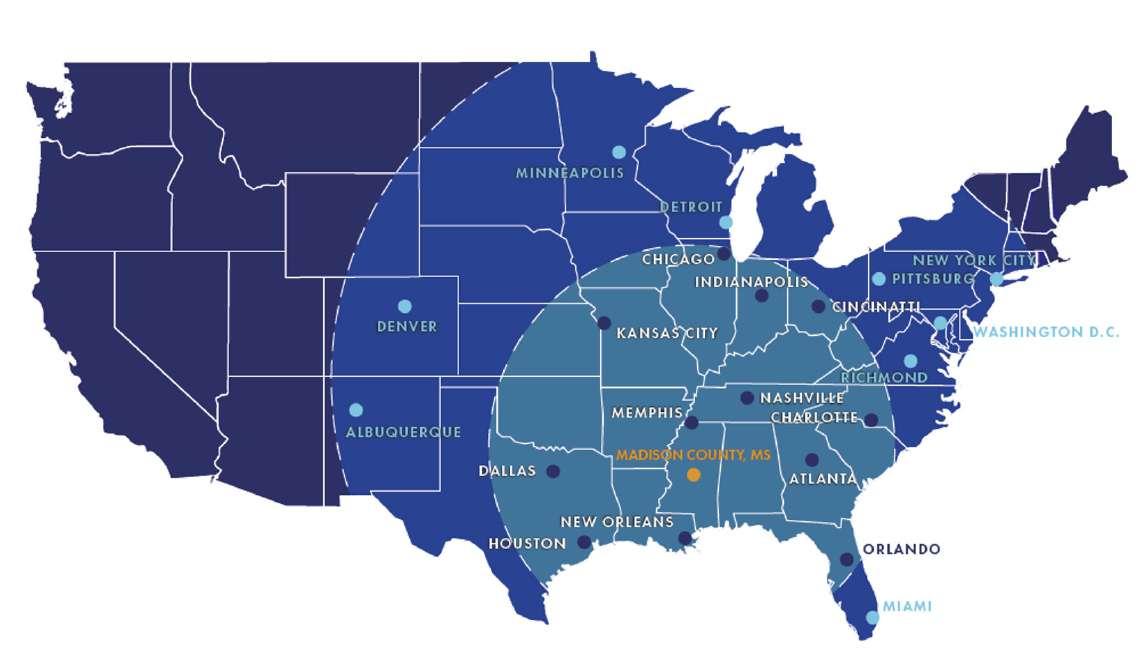






Continued from page 50
strength — including one of the largest tech projects in the country.
Microsoft’s $3.3 billion data center in Mt. Pleasant headlines the year, cementing the state’s foothold in the digital infrastructure race. Eli Lilly also made waves, selecting Bristol for a $3 billion life sciences facility that will add hundreds of jobs to the Kenosha County corridor.
Wisconsin’s broader project slate touches food processing, battery materials, and precision manufacturing. Investments from Kikkoman, Nestlé Purina, and Orbia reflect enduring strength in consumer goods and industrial components. Meanwhile, Vista Sands Solar and National Grid Renewables point to a rising emphasis on clean energy in the upper Midwest.
It’s a portfolio that balances scale with substance — and positions Wisconsin to keep punching above its weight.
South Carolina’s win revolves around a remarkable surge in battery-related investment — an unmistakable trend that’s turning the state into a vital hub for the EV and energy storage supply chain.
Leading the way is AESC’s $1.5 billion investment in Florence, a project of the year, which is expected to create more than 1,000 jobs in EV battery production. It’s joined by EnerSys, bringing $500 million to Piedmont for advanced battery components manufacturing. Together, these projects signal a shift in the state’s identity: from traditional automotive strength to full participation in the electrified future.
Supporting this transition is a broad roster of big-name investments across industries. Boeing South Carolina is expanding its Charleston footprint with a $1 billion aerospace investment, and Birla Carbon is infusing $1 billion into its Orangeburg operations, reinforcing the materials side of the state’s industrial base.
Meanwhile, the Palmetto State continues to attract tech titans. Google committed $1.3 billion across multiple data center campuses in Moncks Corner, St. George, and Ridgeville, which counts as a non-manufacturing project
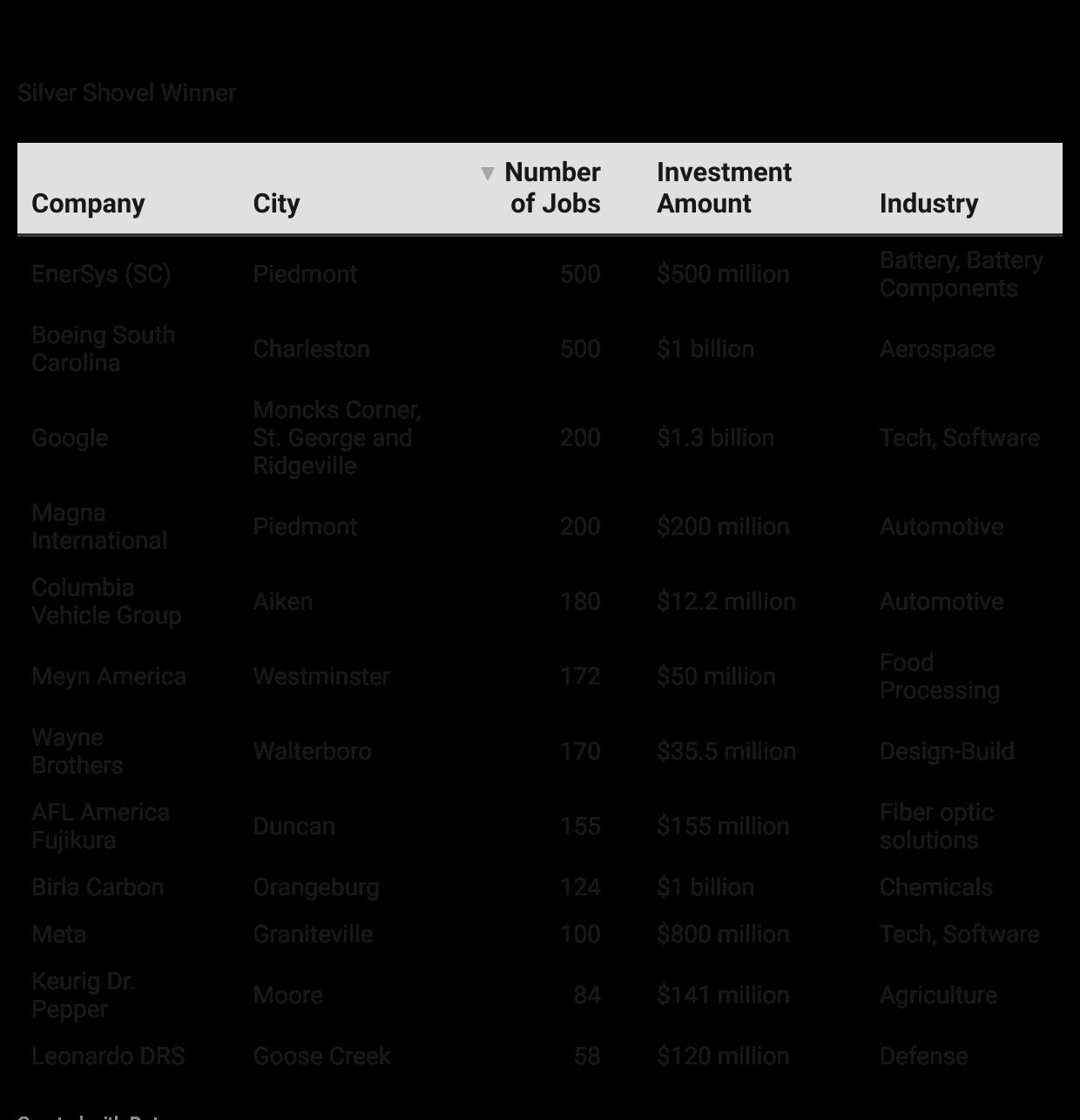
Expansion
Non-Manufacturing Project of the year
Manufacturing Project of the year

Expansion
Non-Manufacturing Project of the year
Manufacturing Project of the year

With a pipeline powered by four technical colleges and nine four-year colleges and universities, including the state’s flagship, the Central SC Region is primed with the skilled workforce that today’s industries need—and tomorrow’s industries demand. Build your business where talent is trained.

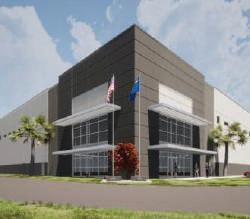
County Spec Building #9
RIDGEWAY, SC
AVAILABLE ACRES: 1,546
MANNING, SC
AVAILABLE SF: 105,000
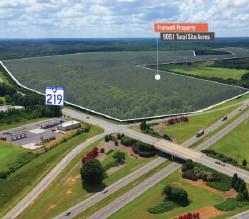
NEWBERRY, SC
AVAILABLE ACRES: 900
Scan to view drone footage and available properties at the center of South Carolina’s thriving business landscape. Explore more at centralsc.org/properties
of the year, and Meta added another $800 million in Graniteville.
Alabama’s Silver Shovel year stands out for both scale and sector variety — from massive metals investments to a revitalization of one of the South’s oldest industries: lumber.
The largest single project comes from Austal USA, which is investing more than $741 million in its Mobile shipyard operations, creating over 2,100 jobs. It’s a major boost for the state’s maritime manufacturing presence and a strong signal that shipbuilding remains a pillar of Alabama’s industrial economy, which is why it earned project of the year honors.
In Bay Minette, Novelis is bringing $1.6 billion into aluminum manufacturing — a transformative investment that ties directly into the EV and sustainable packaging sectors. It’s one of several high-impact manufacturing expansions across the state, including a $282 million upgrade by Toyota Alabama in Huntsville, and a new $115 million sawmill by Two Rivers Lumber Company in Kellyton that highlights the enduring importance of forestry and wood processing in the state’s rural regions.
The list of contributors rounds out with companies like Meta, Southwire, Raytheon, Lockheed Martin, and Glaukos Corporation, representing wire and cable, tech, defense, R&D, and medtech.
Utah’s Silver Shovel performance in 2025 is anchored by one of the year’s largest tech infrastructure investments nationwide: Tract’s $7 billion data center development in Eagle Mountain. It’s a future-facing project that not only boosts the region’s role in digital infrastructure but also signals long-term confidence in Utah’s ability to deliver on energy, connectivity, and talent.
The aerospace and defense sector soared this year, too. Northrop Grumman added more than 1,200 jobs and invested $958 million across Davis and Box Elder counties, while Williams International made a $1 billion commitment to expand aerospace propulsion manufactur-

Expansion
Non-Manufacturing Project of the year
Manufacturing Project of the year

Expansion
Manufacturing Project of the year

Alabama is at the forefront of mobility, connecting deep roots in automotive and aerospace with bold innovations. Emerging technologies and sustainable solutions are attracting new manufacturers and spearheading advancements that change the world. From electric and autonomous vehicles to sustainable aircraft mobility systems, Alabama is transforming the next generation of transportation.
madeinalabama.com/mobility
ing in Ogden. Companies like CleanJoule and Precision Hermetic Technology are helping cement the state’s role in sustainable aviation fuels and defense components, respectively. Wolverine Fuels is investing $286 million in its mine here, which earns a non-manufacturing project of the year.
Utah’s food and consumer goods industry also notched wins. Nature’s Bakeryis bringing nearly 200 jobs to Salt Lake City with a $237 million investment, and Campbell Soup Company is expanding its Richmond facility by $160 million.
Toyota’s twin reinvestments in its Georgetown operations — totaling more than $1.6 billion — headline Kentucky’s winning year and demonstrate the automaker’s long-term confidence in the Bluegrass State. While these upgrades didn’t immediately create new jobs, they’re designed to modernize the plant for future EV production, advanced automation, and long-term global competitiveness.
But Kentucky’s Shovel isn’t just about one industry or one name. In Shelbyville, a project of the year from Shelbyville Battery Manufacturing LLC is injecting $711 million into battery production, a clear signal that Kentucky continues to climb the value chain in electrification. And speaking of Shelbyville, Kuehne + Nagel is adding more than 350 jobs in logistics, rounding out a smart supply chain story for the region.
The state also leaned into its legacy strengths in food and drink. Legacy Spirits of Kentucky, investing over $252 million in Richmond, continues the state’s long tradition of innovation in distilled spirits. Add to that expansions by Staghorn, Niagara Bottling, and Kitchen Food Company, and you get a robust beverage and food manufacturing cluster.
Rounding out the list are strategic manufacturing expansions from Mitsubishi Electric US, Swedish Match North America, and Belmark, all of which are growing their footprint in packaging, tobacco products, and heat pump systems — industries that support both domestic consumption and international exports.
Area Development evaluated leading economic development projects announced in 2024 using a combination of proprietary data and input from all 50 states. Rankings are based on several weighted criteria, including the number of new jobs created, total capital investment, the number of new or expanded facilities, and the diversity of industries represented. These factors are normalized by state population and grouped into five categories: under 3 million; 3 to 5 million; 5 to 8 million; 8 to 12 million; and over 12 million. Gold Shovels are awarded in each population tier, with Silver Shovels recognizing strong runners-up. A single Platinum Shovel goes to the state with the most exceptional overall performance, and a Green Shovel honors a state with a particularly strong emphasis on clean tech and renewable energy investments.

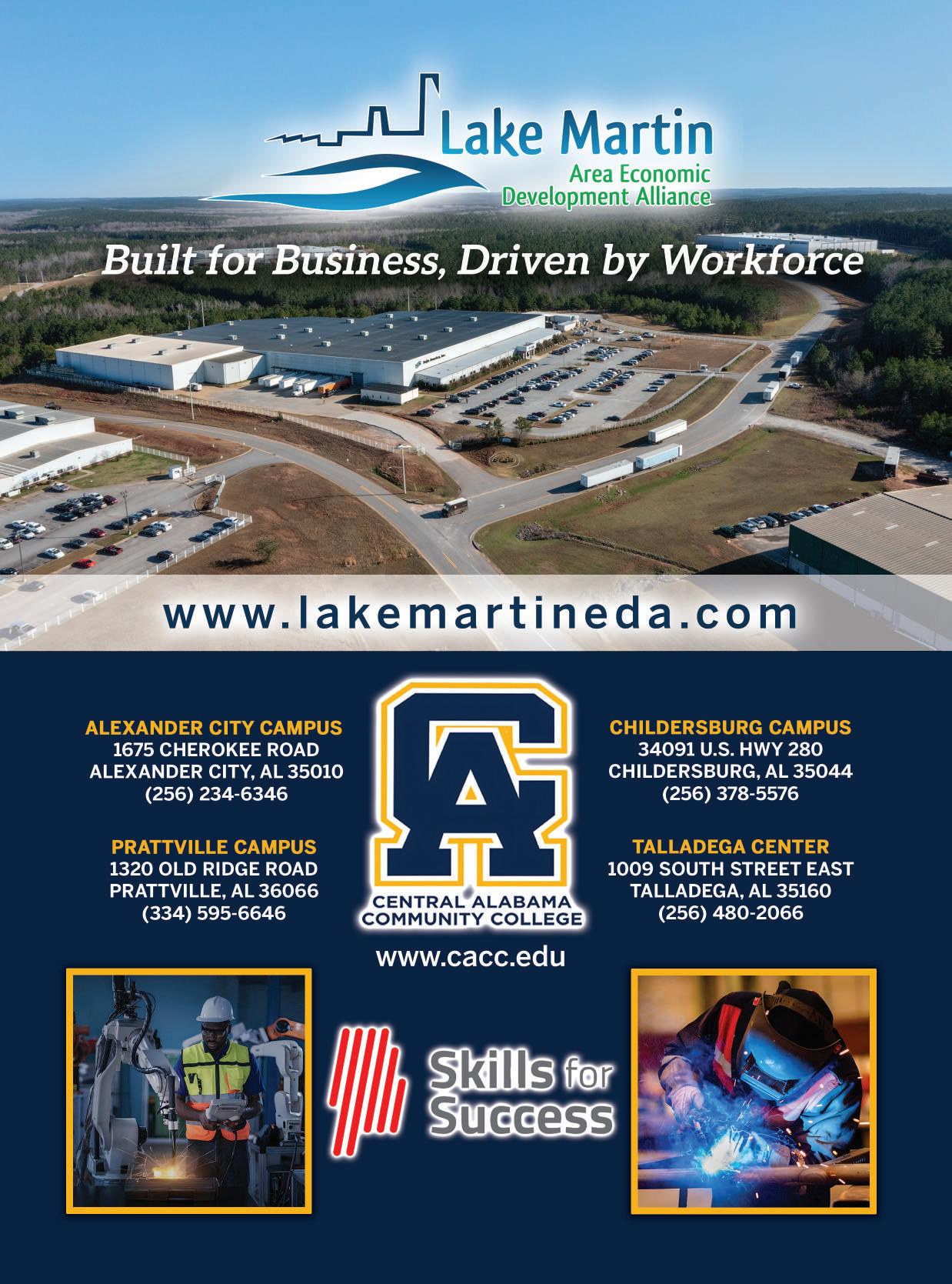
Kansas’s Silver Shovel showing in 2025 is powered by the sheer concentration of food and agricultural investment — a testament to the state’s role in feeding the country and the world. Nearly every corner of the state saw activity in food processing, from snacks and beverages to premium meats and animal health.
Kellanova Manufacturing, formerly part of the Kellogg Company, is investing more than $68 million in its Kansas City facility, reinforcing the region’s legacy in branded food products. Right alongside it, Associated Wholesale Grocers is upgrading its distribution infrastructure with nearly $80 million in improvements.
In southwest Kansas, Creekstone Farms Premium Beef committed $103 million to its Arkansas City operation, and Blue Sky Farms is putting $100 million into facilities in Lewis. Meanwhile, beverage bottling remains strong, with Heartland Coca-Cola Bottling pouring $104 million into its Olathe footprint.
South Dakota rounds out this year’s Silver Shovel winners with a series of steady, practical investments across agriculture, food processing, and industrial manufacturing — sectors that may not dominate headlines but form the backbone of economic resilience in the Upper Midwest.
The biggest-ticket item is SFC Global Supply Chain’s $250 million investment in Sioux Falls, supporting its presence in the frozen food sector and adding jobs in one of the state’s fastest-growing regions. In the agricultural space, Riverview LLP is expanding operations with a $190 million project, and Plainview Dairy is investing $60 million in new dairy infrastructure in Toronto — both reaffirming South Dakota’s leadership in food production.
The renewable energy sector is represented by Brookings Biogas, which is injecting $77 million into anaerobic digestion infrastructure in Bruce, pushing the state into new territory for sustainable energy and waste reduction.

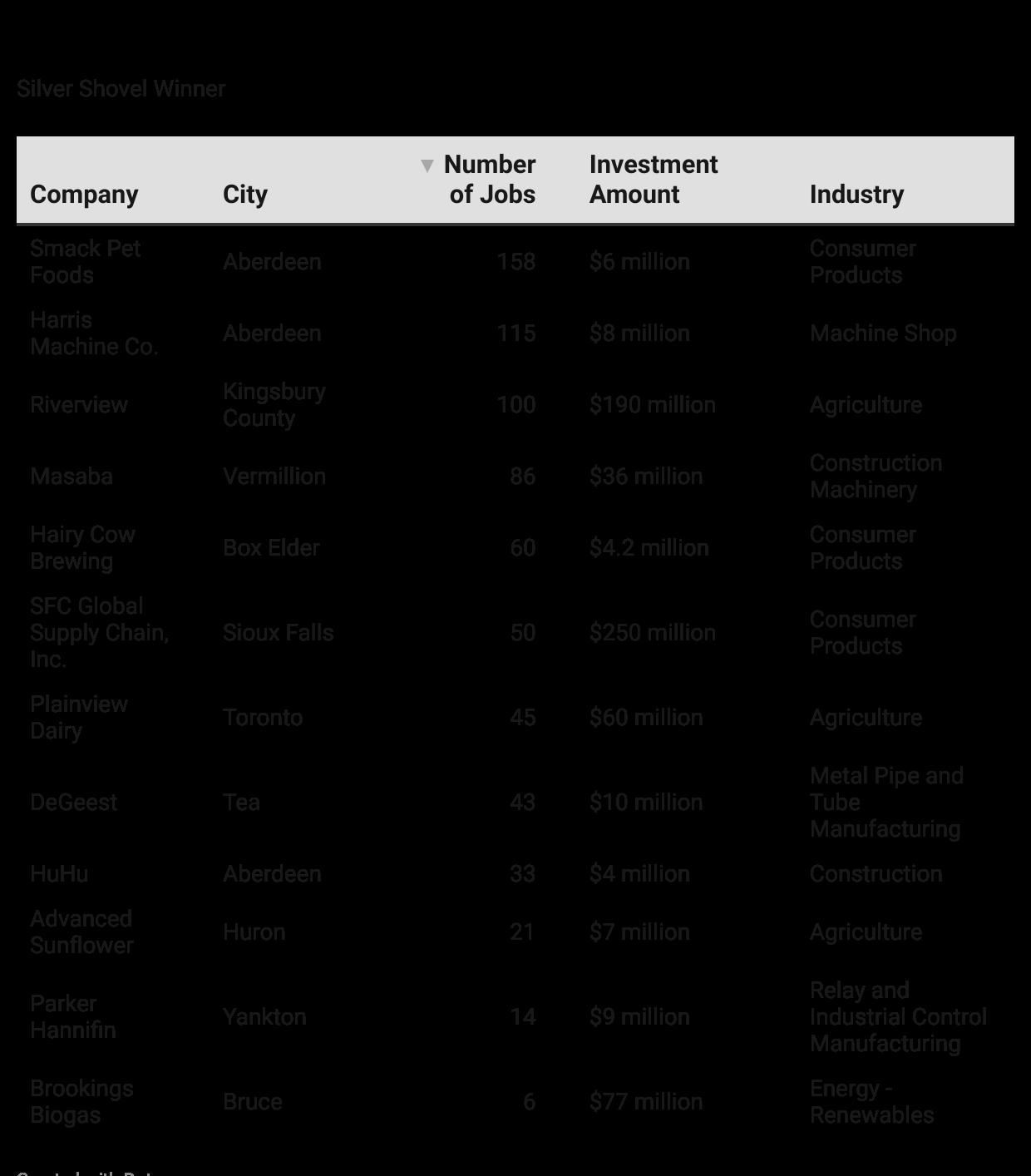

By Jenna Hassam, Senior Associate, Business Consulting and Site Selection at JLL
The resurgence of manufacturing across North America is creating a new kind of complexity for companies evaluating sites. Reshoring and nearshoring are no longer abstract strategic concepts—they are active, time-sensitive decisions influenced by policy and resulting in wage inflation, energy demands, and a dwindling supply of viable real estate.
Manufacturers are now forced to make tradeoffs between lowercost labor and rising labor strain, between faster timelines and infrastructure limitations, between regions that once felt like defaults and markets that now require hard second looks. One of the most frequent conversations we have with clients today revolves around the U.S.-Mexico tradeoffs. And the answer is more complicated than ever.
Mexico continues to offer a compelling cost advantage. Across the board, wage differentials for manufacturing labor—whether direct or indirect—can reach up to 80 percent compared to the U.S., even when factoring in the more generous benefits packages that Mexican workers expect. In Mexico, it’s not uncommon for companies to cover employee transportation, offer cafeteria plans, or provide attendance bonuses. These benefits aren’t optional. They’re essential to talent retention, especially given the market saturation, and can amount to 100 percent of an employee’s base salary.
Despite the wage gap, labor availability in Mexico is tightening. Companies are continuing to locate high-labor operations there, and the building strain is clear. Across skill levels, from direct labor to engineering and maintenance, employers face persistent turnover and fierce competition. Though brand attachment and employer loyalty can go far in Mexico, it doesn’t solve the systemic pressure.
In the U.S., labor is more expensive but not quite as saturated. U.S. regions still offer emerging labor markets with lower turnover and stronger community ties. In these markets, workforce development programs, coordination between employers, and long-standing ties within the community can provide an edge. One region might be more established but face high turnover as workers chase small wage increases. Another might be less developed but offer a more collaborative culture and better employee retention. The key is understanding the nuance.
Utilities are becoming a bigger factor in site selection models with electricity often being the driving factor. In Mexico, challenges are emerging not just around cost but around reliability and access.
Delays in securing new electricity contracts are common, and communication with providers can still depend on physical mail rather than email or phone calls. Furthermore, some providers will limit electricity capacity depending on the size of the operations. For companies that require higher loads, like EV suppliers or advanced manufacturing, grid limitations can delay expansion timelines significantly. In some areas, buyers must purchase the rights to electricity in addition to paying for usage. This can mean millions in upfront costs before construction even begins.
In the U.S., the utility process is rarely seamless, but the baseline expectations around reliability and communication are still stronger. That difference matters more as companies push for higher energy loads, faster connections, and more aggressive timelines. Site readiness is now just as much about power availability as it is about pad grading.
Site selectors are recalibrating their processes as real estate scarcity becomes the norm. The model that used to begin with regional preferences and end with a short list of sites is shifting. Now, many projects start with a scan of which viable sites exist across a wide range of markets, followed by an evaluation of how to make those specific regions work. Clients have been forced to flip their thinking. That’s how scarce plug-and-play options have become, and how important time-to-market is. If a site has the land, the utilities, and a clear path to development, companies are willing to solve for workforce, training, and supply chain logistics accordingly. The constraint is no longer geographic preference. It’s site availability.
Investments into both the U.S. and Mexico have surged in recent years, but the kinds of projects going into each country tell a deeper story. Mexico continues to attract automotive manufacturing and other labor-intensive operations, especially in the northern and central regions. The U.S., by contrast, is seeing a sharp increase in capital-intensive investments, particularly in sectors like semiconductors and renewables. The CHIPS and Science Act and the Inflation Reduction Act have fueled billions in new investment and turned the U.S. into a destination for high-tech, high-energy manufacturing.
International capital flows confirm the shift. Chinese investment into Mexico has doubled in recent years, driven by a combination of strained U.S.-China relations and Mexico’s proximity to U.S. consumers. Meanwhile, U.S. investment into China has dropped by 75 percent. U.S. companies are now reinvesting at home at the




highest rate in decades and increasingly looking to other trends are compounding the challenge. Wage inflation in Mexico is rising, especially in manufacturing hubs. Pending legislation could reduce the standard work week from 48 hours to 40, without a corresponding reduction in pay. That would drive up effective labor costs even more. Meanwhile, larger projects—especially in data, battery, and chip manufacturing—are asking for hundreds of acres and hundreds of megawatts of power in the U.S. Even in markets with favorable conditions, infrastructure simply can’t keep up with the demand curve.
Recently, the U.S. outlined its reciprocal tariff policy on a broad list of countries around the world. In modeling the cost impact of such tariffs for our clients, it is clear the tariffs are going to have a significant impact on the cost of operations abroad versus in the U.S. By way of example, a few months ago, a client evaluating sites in both the U.S. and Mexico asked our team to run a standard model without factoring in tariffs and then remodel the output assuming a number of tariff impacts. In one case, assuming 25 percent of their product did not comply with USMCA and carried a 25 percent tariff, the project costs rose but the overall rankings remained the
same with Mexico being the lowest cost option. However, when we assumed 50 percent non-compliance, the model flipped. Suddenly, the lowest-cost U.S. site outperformed the Mexican options. Could this indeed stimulate a change in thinking regarding direct investment site selection?
The choice between Mexico and the U.S. used to be simpler for many industries. Now, it’s a matrix of labor availability, utility capacity, tariff risk, construction timelines, and investor confidence. Every company’s supply chain looks different. Every project has its own cost sensitivities. But across the board, companies are placing a higher value on resiliency and certainty than they did five years ago.
Mexico is no longer the default choice for labor-intensive operations. The U.S. has become a serious contender as more companies are at least building it into their initial comparisons—and some are choosing it outright. That shift is real.
Site selectors are responding by getting more granular, more local, and more proactive. The future of North American manufacturing isn’t just about cost. It’s about solving the complexity rooted at the intersection of people, power, policy, and place.
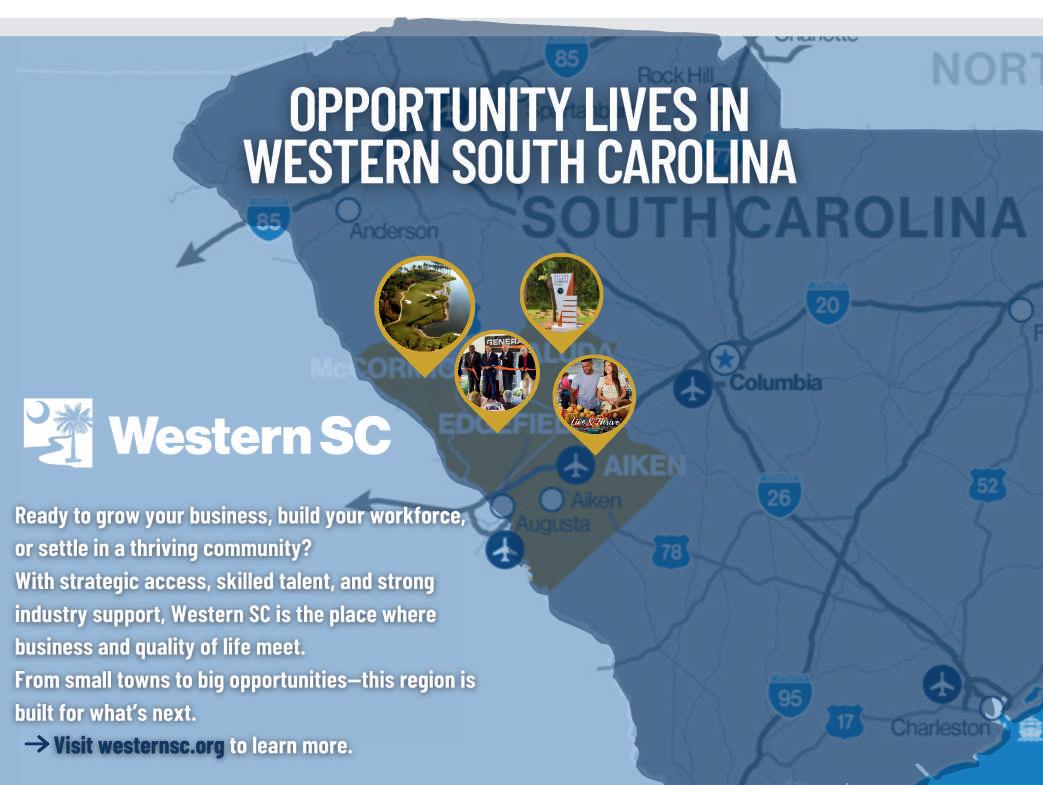
By Alexandra Segers, General Manager at Tochi Advisors & Michael Johnson, Shareholder at Baker Donelson
In the current political climate in the U.S., companies face significant challenges choosing manufacturing locations. The everchanging Trump trade policies and tariffs have sown doubt and uncertainty around costs, currency fluctuations, regulations, and sourcing and sales strategies. Multinational firms, in particular, must carefully review their current and projected global operations to stay competitive. At the time of writing, tariffs have been instituted, modified, re-instituted, and now paused for 90 days, with the exception of tariffs on China. A long-term — or even near-term — trade policy is practically impossible to predict, and the ensuing uncertainty hovers over many manufacturers and suppliers like a modern-day sword of Damocles.
The U.S. auto industry offers a concrete example. For decades, automakers have relied on cross-border trade with Mexico and Canada, first under the North American Free Trade Agreement (NAFTA) and now under the United States-Mexico-Canada Agreement (USMCA), negotiated during the Trump administration. While manufacturing in the U.S. may avoid tariffs, it also brings significantly higher labor costs than in Mexico.
In Mexico, exported products that comply with USMCA regulations are exempt from tariffs, corresponding to approximately half of Mexico’s exports to the United States. Products that do not qualify under USMCA provisions are subject to a 25 percent tariff, pursuant to an executive order issued by President Trump under the International
Greater Louisville offers a trio of competitive advantages in logistics, lifestyle, and life sciences. Come join us and let us help you take your life sciences or logistics business to the next level.




Emergency Economic Powers Act. The administration cited drug trafficking as a threat to U.S. national security to justify the move.
Companies that built factories in the U.S. are in a more secure position, as their operations remain unaffected by potential crossborder disruptions. However, manufacturers that depend on imported vehicles or components from Mexico and Canada will likely struggle with higher costs resulting from unfavorable tariff structures.
Automakers with U.S.-based production facilities — including Hyundai, Kia, Volvo, BMW, and Daimler — serve the North American market and are largely unaffected. By contrast, companies with significant Mexico and Canada operations — including the Big Three and large overseas manufacturers such as Toyota, Nissan, Volkswagen, and Honda — face severe impacts from the tariffs.
The Trump administration also canceled the “electric vehicle mandate,” a rule from the Environmental Protection Agency that would have required auto manufacturers to cut greenhouse gas emissions by half in new light- and medium-duty vehicles beginning in 2027. The EPA had estimated the rule would compel manufacturers to make electric vehicles account for about 30 to 56 percent of new light-duty vehicles by 2032, and 20 to 32 percent of new mediumduty vehicles.
EV-focused manufacturers such as Tesla, Hyundai, and Volkswagen, which have invested heavily in electric vehicle plants, could now face challenges as combustion-reliant companies gain flexibility to meet customer demand. The Trump administration has also scaled back support for renewable energy and electric vehicles — including

infrastructure funding for charging stations — while promoting fossil fuel production and combustion engine vehicles.
According to S&P Global Mobility, Stellantis imported around 23 percent of its U.S. new vehicle sales from Mexico, compared with 22 percent for GM and 15 percent for Ford. Only Nissan, at 27 percent, and Volkswagen, at 43 percent, have greater exposure. The Volkswagen plant in Puebla, covering 740 acres, is the largest automobile factory in Mexico and one of the largest in the Volkswagen Group. The U.S. VW plant in Chattanooga manufactured 85 percent of all North American Passat vehicles, sourcing 85 percent of content from NAFTA countries. Overall, 43 percent of components purchased by the U.S. globally are sourced from Mexico.
If automakers pass on higher costs caused by import tariffs from Canada and Mexico, consumers will likely face higher prices on U.S.-built vehicles. The extent of price increases will depend on inventory levels, sourcing strategies, and the duration of the tariffs.
This new era of trade wars, characterized by tariffs and other restrictive measures, carries profound implications for corporate site selection strategies. The recent escalation in trade tensions — particularly involving the United States, Canada, Mexico, China, and the European Union — is forcing companies to rethink their global manufacturing footprints. For manufacturing and logistics firms, uncertain and unpredictable policies will heavily influence future site selection decisions.
U.S. companies will likely consider onshoring to shorten lead times and accelerate time-to-market, though higher labor costs and a
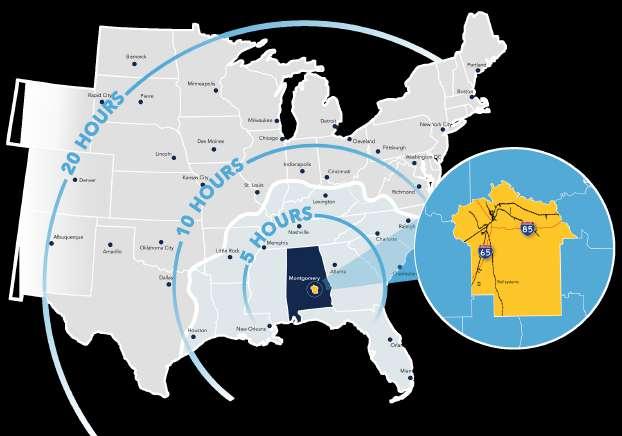


shortage of skilled workers remain challenges. Mexico remains attractive as a nearshoring option, offering lower labor costs despite tariff risks, and benefiting from multiple international trade agreements.
Steel and aluminum tariffs, in particular, have caused substantial disruptions. Calculating the value of aluminum and steel in a given product — especially when subcomponents also contain plastic, rubber, or other metals — is complex. Nearly $150 billion in goods are subject to steel and aluminum derivative tariffs across 289 product categories, from screws and bolts to furniture. These tariffs also affect approximately $25.7 billion in annual imports of aluminum vehicle parts, $7.1 billion in iron and steel wire, stampings, and forgings, and $6.5 billion in iron and steel screws, bolts, and nuts.
Some companies are considering relocating production to countries not impacted by Chinese import tariffs, such as India and Vietnam. Corporate site selection will increasingly focus on regions with stable trade agreements, such as the European Union’s free trade agreements and USMCA — at least until its 2026 review. If the three parties fail to agree on an extension, the USMCA will terminate in 2036. In the meantime, special economic zones, bonded warehouses, and free trade zones may offer advantages by providing tax deferrals and tariff relief.
Despite the uncertainty and disruption caused by the current trade wars, key factors in site selection remain consistent: access to skilled labor, strong training programs, reliable infrastructure, and political and economic stability.
Several industries are particularly affected. Automotive, aero-



space, and steel processing companies are reevaluating their global production locations. Semiconductor and chip manufacturers are shifting operations toward Taiwan and India to avoid U.S.–China trade tensions. E-commerce fulfillment and distribution centers are increasingly seeking locations in neutral trade zones. U.S. renewable energy firms, which often import solar panels and wind turbines, are contending with rising costs, while Canadian energy companies are searching for new export markets to avoid U.S. tariffs.
As trade policies fluctuate, successful site selection will require a balance of risk management, cost optimization, and long-term growth planning. Companies must diversify operations, closely monitor geopolitical developments, and invest in new technologies to reduce risk and locate production in cost-effective regions.
The impacts on active projects vary. One large European confectionary company, initially planning to produce in the U.S. and ship products to Canada, canceled its American project and expanded operations in Europe after the imposition of tariffs. Conversely, an Asian auto firm, currently navigating U.S. site selection, expanded its investment after learning about the tariffs. Originally planning to ship raw materials from Asia, the company will now source materials domestically and find local suppliers to complete its project.
Trade wars have added a new layer of complexity to corporate site selection, forcing companies to rethink their global footprints. Companies are working to understand the effects of tariffs, manage supply chain disruptions, and develop long-term strategies that allow them to operate profitably despite rising risks.




















be-nky.com/business for more info Transportation, Technology, and Talent are just three of the many reasons why the Northern Kentucky Region is the top place to land your business.






Why talent shortages, financing volatility, and supply chain shifts will continue to define near term
By Connor Barnes, Vice Chair, and Sandy Romero Head of Life Sciences and Healthcare Insights, Global Research at Cushman & Wakefield
Innovation, resilience, and economic growth are hallmarks of the life sciences sector. From pioneering pharmaceutical breakthroughs to advancements in biotechnology, the industry has consistently pushed the boundaries of human health and scientific discovery. However, like all industries, it is subject to cyclical market fluctuations, regulatory shifts, and the evolving demands of health care systems worldwide. As we navigate through 2025, the sector faces a mix of challenges and opportunities that will shape its trajectory for years to come.
In recent years, the life sciences real estate sector has seen a surge in demand, driven by a boom in research and development investment, rapid growth in biotechnology, and the race to deliver groundbreaking therapies. In response, developers accelerated construction activity, with
life sciences projects under construction accounting for 17 percent of the total U.S. life sciences inventory in the second quarter of 2023.
Since then, however, momentum has tempered. According to Cushman & Wakefield’s latest Life Sciences Update report, supply is now outpacing demand in several key markets. This imbalance has led to rising vacancy rates, slower rental growth, and a pause in new construction starts as the sector recalibrates to bring supply and demand back into alignment.
Today, nearly 16 million square feet of life sciences space is under construction nationwide, with 14 million square feet slated for delivery by the end of 2025. This influx of new inventory is increasing availability, giving occupiers greater choice and opportunities to secure
Continued on page 72







strong



































With a quantum talent pool centered around the University of Maryland, a network of collaborators and end-users, and strong support from state leadership, Maryland is an ideal environment to foster quantum innovation.
Masashi Hirose CEO NanoQT




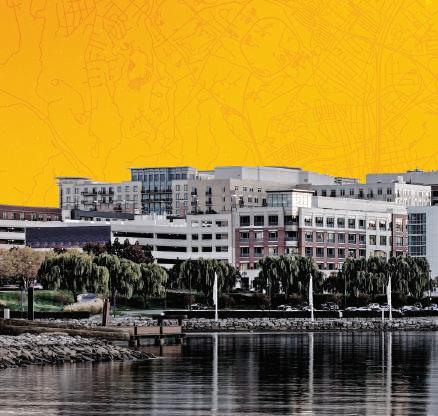





From AI and fusion to biomanufacturing, Wisconsin’s tech economy is attracting global and local bets
By Wisconsin Economic Development Corporation
Wisconsin is gaining national attention as a dynamic technology hub, attracting global corporations, highgrowth startups, and pioneering researchers who are reshaping advanced manufacturing, biohealth, and clean energy. By aligning talent, resources, and industry partnerships, the state is creating a climate where innovation thrives and businesses scale.
“Wisconsin has always been a place where businesses can scale and succeed. Our strength lies in the way we bring together global companies, research institutions, and entrepreneurs to drive meaningful innovation,” says Missy Hughes, secretary and CEO of the Wisconsin Economic Development Corporation (WEDC).
That collaborative spirit helped earn the state a designation as a Regional Technology Hub by the U.S. Economic Development Administration. The recognition highlights Wisconsin’s leadership in advancing life science technologies, biomanufacturing, and medical research—and reflects its growing role in shaping the nation’s innovation economy.
Global leaders are making billion-dollar bets on Wisconsin’s future. Microsoft is investing $3.3 billion in a next-generation artificial intelligence (AI) data center campus in Mount Pleasant, expanding cloud infrastructure and accelerating machine learning applications in the region. In Milwaukee, Rockwell Automation continues to lead in smart manufacturing, developing AI-integrated systems that enhance productivity across global industries.
In biohealth, Eli Lilly & Co. is investing $3 billion to build a biopharmaceutical manufacturing facility in Kenosha County, bringing more than 750 jobs. The facility will expand Wisconsin’s footprint in drug development, diagnostics, and personalized medicine—strengthening its position in biomanufacturing and health innovation.
While global companies are making headlines, Wisconsin’s strength also lies in its ability to nurture innovation at the ground level. Across the state, a new generation of startups is emerging—developing breakthrough solutions in energy, biotech, and advanced materials. These ventures are supported by a robust ecosystem of research partnerships, incubators, and access to capital. Among the companies gaining traction:
COnovate (Milwaukee): This startup is improving lithium-ion battery performance with a carbon-based material that enables faster charging. “Wisconsin’s research ecosystem and technol-

ogy partnerships are accelerating our ability to bring energy solutions to market,” says co-founder Carol Hirschmugl, Ph.D.
Realta Fusion (Madison): Focused on commercializing compact fusion energy systems, the company is helping pave the way for zero-carbon industrial heat and power. “Fusion energy is the future, and Wisconsin provides the research expertise and industry connections we need to commercialize this technology,” says Dominick Bindl, vice president of technical development.
Forward BIOLABS (Madison): By providing turnkey lab space and mentorship, this organization is helping biotech startups accelerate the development of lifesaving treatments and technologies.
With a skilled workforce, world-class universities, and strong public-private alignment, Wisconsin offers a solid foundation for businesses building the future. Whether in AI, automation, biomanufacturing, or clean energy, companies investing here aren’t just adapting to change—they’re driving it.
article was paid for and written by Wisconsin Economic Development Corporation and approved by Area Development.

MOMENT MEETERS RELENTLESS THINKERS DISCOVERY MAKERS
CHANGE EMBRACERS INDUSTRY REVOLUTIONIZERS ACTION TAKERS
BETTER TOMORROW BUILDERS TRAILBLAZERS ENERGIZED LEADERS
Discovering a new carbon-based battery material launched Dr. Carol Hirschmugl from the lab to entrepreneurship. From her founding of COnovate to her ultimate goal of revolutionizing the industry, we’ve been behind her all the way. Choose Wisconsin, and we’ll help transform your strategic visions into game-changing achievements. Let’s look forward together.

Continued from page 68
high-quality space in top-tier innovation hubs such as Boston, San Diego, and the Bay Area—often at more competitive rates and with greater lease flexibility.
Meanwhile, life sciences investment activity is showing early signs of renewed momentum. In 2024, research and development property sales volume reached $7.2 billion—a 33 percent increase yearover-year—across 233 transactions, up 32 percent from the previous year. The average deal size remained steady at $31 million, signaling continued investment interest in high-quality assets despite ongoing financial pressures.
Yet, despite this uptick, the market is far from its 2021–2022 peak and continues to face ongoing headwinds that are reshaping investor strategy. Capitalization rates rose to 6.7 percent by year-end 2024—100 basis points above 2022 lows, as elevated interest rates tighten financing conditions and dampen pricing. On average, pricing fell 14 percent year-over-year to $255 per square foot, down nearly 38 percent from the height of the market. For three consecutive years, returns have been negative, prompting investors to prioritize established life sciences hubs with strong fundamentals.
O verall, the sector’s investment outlook remains cautiously optimistic. Elevated interest rates will likely keep deal volume subdued, but long-term prospects remain strong, driven by aging demographics, biotechnology innovation, and sustained funding. For strategic investors with a long-term view, the current environment offers a rare window to enter the market at more attractive valuations.
Talent continues to be a major driver—and challenge—for the life sciences sector. While recent layoffs have added some slack to the labor market, specialized roles in areas like biomanufacturing, clinical research, and artificial intelligence–driven drug development remain tough to fill.
In 2024, job postings were down 8.3 percent year-over-year and hirings were down 2.1 percent, yet hiring still outpaced postings by 24 percent, suggesting some roles are being filled more easily than in the past few years. Still, a posting intensity ratio of 3-to-1 highlights ongoing difficulty in staffing high-demand positions. To address this, companies are expanding training programs, partnering with universities, and tapping into broader talent pools through remote and hybrid work.
While workforce dynamics evolve, clinical trials and drug approvals entered 2025 with healthy momentum. Following a slower year in 2024, the pipeline is picking up pace in 2025, propelled by breakthroughs in genomics, personalized medicine, and AI-enabled research. Regulatory bodies, including the Food and Drug Administration, are hoping to streamline approval pathways, accelerating the development cycle for promising therapies. This activity is not only supporting demand for specialized lab space but also driving new investment in manufacturing infrastructure needed to produce next-generation treatments.
Fueling both talent and trial activity is capital—an essential engine for innovation in the sector. Although total life sciences funding rebounded in 2024, levels remain below the peaks seen earlier in
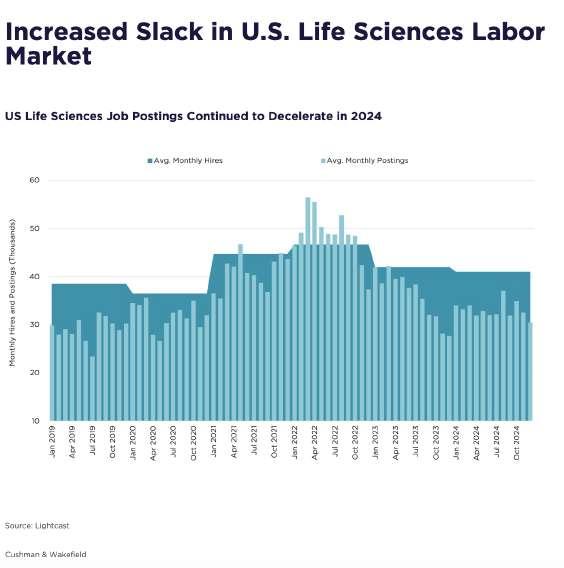
the decade. With questions around future U.S. government research budgets, the private sector—especially venture capital—remains a vital source of investment. Global venture capital funding rose 4 percent year-over-year, surpassing the 10-year average by 6 percent, signaling a renewed sense of investor confidence. Europe and North America led the charge, with European venture capital deals up 19 percent to $8.6 billion and North American deals rising 17 percent to $31.5 billion.
Investors continue to focus on early-stage biotechnology firms with high-growth potential, fueling innovation across drug development, medical devices, and digital health. The initial public offering market, while still cautious, showed signs of life in 2024 with offerings totaling $11.6 billion globally—a 22 percent increase from the previous year.
Uncertainty has impacted funding in the first quarter of 2025 as investors weigh volatility in the markets. However, venture capital remains a cornerstone of life sciences growth—supporting companies as they scale operations, expand their physical footprints, and accelerate the path from lab bench to bedside.
Artificial intelligence is rapidly reshaping the life sciences industry, offering new ways to accelerate drug discovery, streamline clinical trial design, and personalize patient care. In 2025, adoption of AI-powered platforms continues to grow, enabling companies to sift through massive datasets, identify promising drug candidates, and even predict treatment outcomes with greater accuracy and speed. However, these advancements come with growing concerns around data privacy, regulatory oversight,
and the ethical use of machine-driven decision-making in health care. Companies that can navigate these complexities while embracing AI’s potential will be well-positioned to lead the next wave of innovation.
At the same time, the policy landscape remains fluid. A new administration has introduced renewed uncertainty around drug pricing and the possibility of tariffs on pharmaceutical imports. These potential changes are prompting companies to reevaluate cost structures, supply chain strategies, and long-term investment plans.
The U.S. government’s push for increased domestic pharmaceutical manufacturing aims to reduce reliance on foreign suppliers, strengthen national security, and create jobs. While this shift presents logistical challenges—especially for companies with overseas manufacturing footprints—it also opens the door for new investment in U.S.-based facilities and partnerships with domestic contract development and manufacturing organizations.
The life sciences sector is at a crossroads, balancing the excitement of technological breakthroughs with the realities of economic and regulatory challenges. While market conditions have shifted, the underlying fundamentals of the sector remain strong, with plenty of opportunities to be seized for those who remain agile and forward-thinking.

The perfect place to land.

Highly-educated, with a culture of innovation and commercialization, Kentucky’s Bluegrass Region is just the spot for more than 100 biotech and health science companies. Like Mosquito Mate®, developers of an all-natural way of controlling mosquitoes using, well, mosquitoes.
There’s no place greater.
locateinlex.com
Planning new facilities now requires deeper segmentation, faster timelines, and more nuanced incentive approaches
By Alan Reeves, Senior Managing Director, Global Strategy at Newmark
The life sciences sector remains one of the most innovationdriven industries in the U.S. economy. From therapeutics to advanced diagnostics and regenerative medicine, the pace of discovery continues to accelerate. While the long-term outlook for life sciences is strong, today’s market presents a variety of complications that require more deliberate planning.
Funding constraints, real estate imbalances, and talent shortages have reshaped the operating environment. At the same time, the sector remains full of promise, buoyed by demographic shifts and scientific breakthroughs. For companies considering a new facility or expanded footprint, site selection is highly nuanced. Success depends not just on available lab space or incentives but on alignment between a company’s stage of development, its capital strategy, its workforce profile, and the realities of the local market.
Life sciences has historically shown remarkable resilience across economic cycles. An aging population and the rising prevalence of chronic disease create durable demand. Personalized medicine and early-stage diagnostics are driving innovation, and new therapies continue to emerge in fields like oncology, neuroscience, and rare diseases.
On the other hand, volatility is increasing. While many of the world’s largest pharmaceutical firms are doubling down on research and development, mid-stage companies face capital constraints that stall or postpone facility plans. One failed clinical trial or a shift in policy can undermine years of progress. To navigate this environment, companies must acknowledge that sector-level resilience doesn’t guarantee project-level stability. Sound strategy begins with a clear-eyed understanding of where risk lives.
Life sciences today operates on two parallel tracks. On one track, large, well-capitalized companies are investing heavily in new R&D centers, production facilities, and advanced analytics. On the other, earlier-stage companies are under pressure from reduced venture capital activity, rising interest rates, and cautious investors. While these early-stage firms may have promising science and market potential, they often lack the capital to scale beyond contract manufacturers or incubator space.
Companies entering or nearing the commercialization phase— typically Series C and beyond—are the most likely to initiate site selection. These firms are looking to internalize production, expand R&D, and establish supply chain control. This is where physical infrastructure becomes essential. Companies that haven’t reached that
Maturity Spectrum and Facility Readiness
Company StageMilestoneFacility Strategy
Pre-seed / Seed Lab discovery, grant-funded research Shared incubator space
Series A–B
Proof of concept, early trials
Series C–D Nearing commercialization
Commercial / Scaling
Full production, supply chain control
Lease flexible lab space, often in Tier 1 cities
Secure own lab, internalize production
Purpose-built GMP facility, long-term footprint
inflection point may not be ready for their own facility, regardless of demand or long-term planning.
Understanding where your company sits on this maturity spectrum is critical to building a real estate strategy that matches your risk profile, capital stack, and operational requirements.
Between 2020 and 2022, life sciences companies sent a clear signal to the market: We need more space. Developers across the country responded with a construction boom, especially in traditional hubs like Boston, San Diego, and the San Francisco Bay Area, as well as in up-and-coming markets such as Houston and Atlanta. Today, that space has arrived—but the demand hasn’t kept pace.
Vacancy rates in key life science markets have climbed into double digits, yet lease rates have not declined significantly. That’s in part because many projects were underwritten at peak prices, and developers are reluctant to discount space built for highly specialized lab use.
More important than vacancy rates, however, is suitability. Much of the available space isn’t well-suited for companies that have moved beyond R&D and need scalable, Good Manufacturing Practice–compliant manufacturing facilities. Pre-commercial and commercial-stage



companies often find themselves caught between ill-fitting space in Tier 1 markets and limited infrastructure in Tier 2 alternatives.
W hile greenfield development remains a common path, few companies want to start from scratch unless they have to. Having credible existing space options—or a plan to deliver them quickly—remains a key differentiator for communities hoping to attract these investments.
Talent is the No. 1 driver of life sciences site selection. But not all talent is created equal, and broad biotech workforce statistics can obscure more than they reveal.
Each life sciences subsector—from biologics and cell therapies to AI-enabled diagnostics and nuclear medicine—has unique talent needs. Companies must evaluate three hiring events when choosing a location: whether the region has the core technical talent to staff early operations; whether local universities and training institutions can backfill and sustain future growth; and whether executive and research leaders will relocate there. For many companies, especially those outside the top pharmaceutical giants, individual decisions matter, particularly when the project scale is smaller or the hiring timeline is longer. A star immunologist returning to St. Louis, or a founding scientist wanting to be closer to
family, can anchor a new R&D hub. These personal dynamics aren’t a substitute for sound planning, but they do shape real-world outcomes. Ultimately, companies must assess not just whether a market has life sciences talent, but whether it has the right talent—and the ecosystem to support it over time.
Traditional incentive tools can sometimes be a poor fit for life sciences companies. Many firms, particularly in early commercialization phases, are pre-revenue and see little value from tax credits tied to corporate income liabilities. Above-the-line incentives—such as cash grants, workforce training funds, utility discounts, or infrastructure support—are typically more impactful. But these must be structured to reflect the volatility of the sector.
Clinical trials fail, regulatory pathways shift, and some projects will not reach scale. Communities offering incentives need to understand the potential volatility that comes with pursuing life sciences companies and structure programs that provide real value while maintaining protections for themselves.
Oftentimes, nonmonetary incentives such as fast permitting, transparent zoning, and coordinated economic development support can be just as important as the dollar value of the incentive package

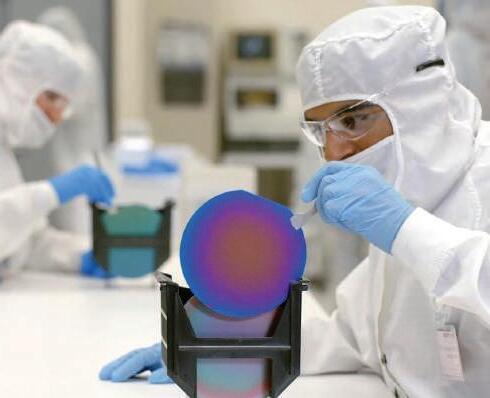
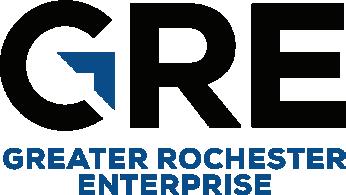
itself. Speed-to-market and policy predictability can be differentiators in a sector that prizes agility.
Too often, companies and communities alike pursue a generic life sciences strategy. But the sector includes more than 50 distinct subsectors, each with different capital intensity, workforce needs, and market dynamics. A regenerative medicine company will not need the same infrastructure or labor pool as a firm focused on agricultural biotech or molecular diagnostics.
Effective site selection starts with segmentation. The real question is not “Where is the best life sciences market?” but rather, “Where is the best market for our specific subsector?”
This can also apply to location strategy. Instead of trying to replicate legacy life sciences hubs, companies should assess where their needs align with local capabilities. Sometimes, the right answer is a Tier 2 or emerging market with an aligned workforce, the right university partnership, lower costs, and a willingness to support long-term growth.
For companies planning expansion, it’s time to update the site selection playbook. The key elements include segmenting your subsector
and workforce needs before scanning markets; matching company maturity level to facility type—startup, pre-commercial, commercial, or scaling; evaluating existing space for both current fit and future flexibility; ensuring communities can support all three hiring events, including specialist recruitment; treating incentives as a closing tool, not a primary driver; confirming regulatory and cultural alignment, especially for sensitive research areas; and planning for volatility—facilities must be adaptable, with exit strategies if needed.
The best markets are not always the biggest. They are the ones that match a company’s current reality and future goals.
S ite selection in the life sciences sector requires a different mindset. It’s not just about incentives, square footage, or clustering. It’s about precision.
Understanding your company’s capital position, product maturity, workforce demands, and facility needs is the first step. Matching those to a region’s talent pipeline, policy climate, and infrastructure is the second. In a market defined by both resilience and volatility, the companies that plan with granularity will be the ones best positioned to grow.
The opportunities are still out there. But finding them requires a sharper, more specialized approach than ever before.
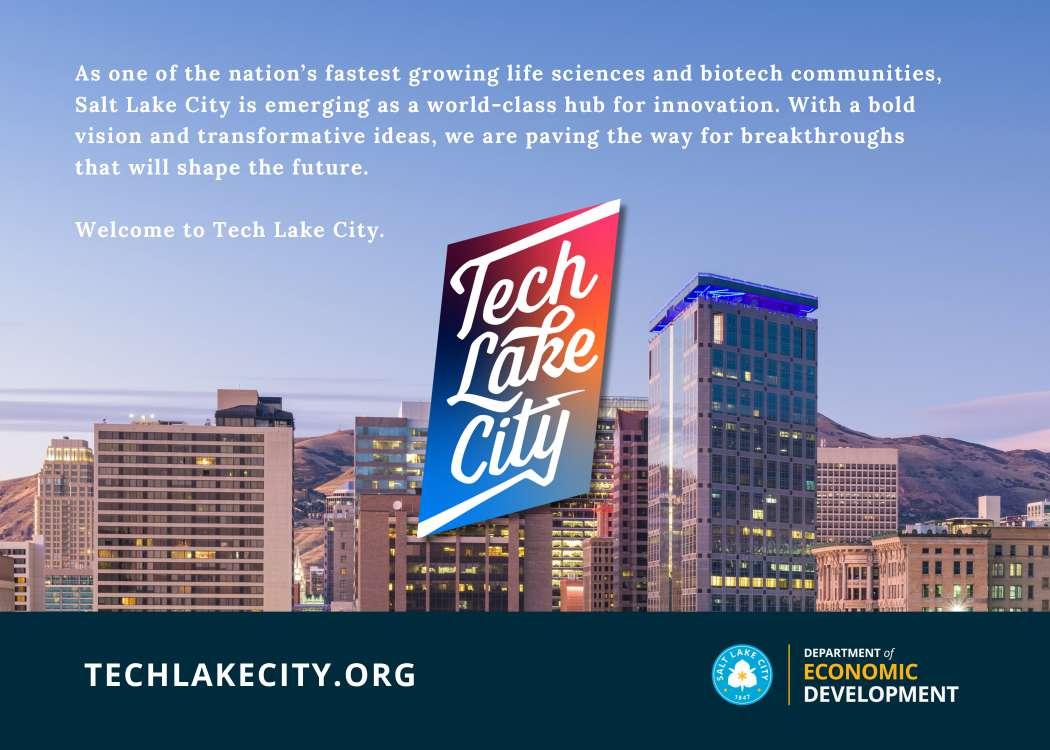
Flexible utilities and workforce pipelines are essential to meet growing life sciences manufacturing demand
By Andy Wozniak, Global Facilities Group Leader & Courtney Dunbar, Site Selection and Economic Development Leader at Burns and McDonnell
The life sciences manufacturing sector is experiencing unprecedented growth, driven by advancements in biotechnology, the rise of personalized medicine, and the need for localized production. However, this growth comes with unique challenges, particularly when developing new manufacturing sites. Critical considerations for life sciences facility projects range from utilities and workforce development to tax policy and grid infrastructure readiness.
Power and water utilities are a cornerstone of any life sciences manufacturing facility, yet they present significant hurdles. The pharmaceutical and biotech industries generate complex wastewater that requires advanced treatment systems. Some manufacturing companies have faced challenges requiring citywide upgrades to water and wastewater systems. Conversely, certain facilities are decommissioning on-site wastewater
plants due to reduced demand. With water being a critical resource for manufacturing processes, companies must plan for sustainable water usage and treatment solutions.
A health care company’s new building in Ohio requires the city to upgrade the entire municipal water system to increase water supply and sanitary discharge. While a greenfield site presents an opportunity for state-of-the-art infrastructure, the development team needs to work closely with residents to mitigate the impact of a large, complex project on the community. In addition to providing alternatives for traffic mitigation, noise abatement and visual aesthetic considerations,
Continued on page 80

The state cements its role in defense innovation with a transformative investment in autonomous weapons manufacturing
By JobsOhio
Ohio is poised to make history in national defense and advanced manufacturing. In a major economic development announcement, Governor Mike DeWine, former Lt. Governor, now U.S. Senator Jon Husted, and JobsOhio revealed that Anduril Industries, a leader in defense technology, will establish a five-million-square-foot manufacturing facility in Pickaway County.
Based in Costa Mesa, California, Anduril is transforming the defense industry with a bold mission to “Rebuild the Arsenal” of U.S. military capabilities. Leveraging advanced software and high-tech manufacturing, the Arsenal-1 facility will be the first of its kind to hyperscale production of autonomous weapons systems. The $900 million investment is expected to add nearly $1 billion to Ohio’s gross domestic product and generate more than $2 billion in annual economic output.
“Ohio’s history of advancing aviation, aerospace, and national defense runs deep, but what sets this state apart is our readiness to embrace the future,” said Governor DeWine. “At this critical moment in time, our country needs rapid technological innovation, which Anduril will deliver using Ohio’s skilled, hardworking labor force.”
Arsenal-1 will be constructed on 500 acres near Rickenbacker International Airport, offering direct runway access for testing and development. The airport’s unique infrastructure was key to Anduril’s decision to call Ohio home. The company also cited the state’s strong business climate, deep talent pool, and long-standing support for the defense sector as determining factors.
The facility will bring 4,000 direct jobs and an additional 4,500 indirect and induced jobs over the next decade. Tax revenues from the project are expected to exceed $800 million, and more than $1 billion in labor income will be generated within the state. To support workforce development, JobsOhio will provide Talent Acquisition Services to help Anduril attract and retain top talent from Ohio’s extensive network of universities, technical schools, and training programs.
Brian Schimpf, CEO of Anduril Industries, emphasized the project’s strategic significance. “Arsenal-1 represents a significant step forward in how we build the autonomous systems and weapons our nation and allies need,” he said. “We are ready to break ground and build the capabilities that will
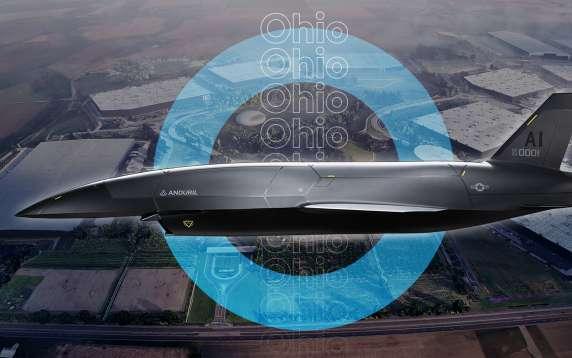
strengthen America’s industrial base and national security for years to come.”
The project is receiving widespread support, including requests for state funding through the Job Creation Tax Credit and the All-Ohio Future Fund. JobsOhio also plans to provide additional financial support once agreements are finalized.
Local leaders hailed the project as a game-changer for the region. “This project will diversify our economy, strengthen our nation, create thousands of terrific jobs, and immediately establish the Columbus Region as a center of defense-technology and manufacturing,” said Kenny McDonald, President and CEO of One Columbus.
From the Wright Brothers to Arsenal-1, Ohio’s legacy in aviation and defense innovation continues to soar. As U.S. Senator Husted put it: “When it comes to ‘Made in America,’ you can’t do it without ‘Made in Ohio.’”
This article was paid for and written by JobsOhio and approved by Area Development.
Continued from page 78
build-out of utilities infrastructure should look to enhance the robustness of existing services such as power and water systems.
For example, at the company’s nutraceutical manufacturing complex being planned in the Great Lakes watershed, existing water supply and wastewater collection systems are being extended to serve the new facility. The local water authority expanded water treatment capacity using an integrated membrane system, enabling blending of finished water by a combination of microfiltration and low-pressure reverse osmosis, along with the preexisting lime softening capacity of river water. The membrane expansion facilities were designed for multiphase build-out. Inclusion of this greenfield site in regional water supply planning triggered installation of the next planned phase to meet project demands. A new dedicated surface water intake option was not considered feasible due to the site’s distance from surface water bodies, and private groundwater wells were not favored due to aquifer thickness and variable well yields.
Wastewater management planning involved developing on-site pretreatment with discharge to a publicly owned treatment works (POTW). Since the complex wastewater flow could be up to 10 percent of the POTW’s average inflow, the on-site pretreatment system design was advanced to support discussions for obtaining an acceptance letter from the POTW. Only one parameter, total dissolved solids (TDS), involved stricter-than-planned-for conditions based on the POTW’s receiving body restrictions. The TDS restrictions involved a regionwide issue, and even though the POTW would be willing to accept up to twice its own discharge criteria, surcharges still applied at or above the limit. The impact on site design was to view equipment and operational decisions through the lens of how to limit generating TDS in wastewater.
At an existing operating facility, switching site production has resulted in reduced wastewater generation, both in volume and overall strength. The site offers the opportunity to reposition in-place infrastructure designed for commodity chemicals and large fermentation-based medications to better serve smaller-scale biological therapeutics. By 1975, the confidential pharmaceutical company’s North Chicago site had created pumping stations and pipelines to switch from an on-site direct discharge to Lake Michigan to become a significant industrial user discharging through the North Shore Water Reclamation District to inland rivers. The investment complied with planned regional improvements to lake water quality, which included upgrades to public water reclamation facilities to redirect discharges back to the lake. Recently, the company explored decentralizing its wastewater collection and treatment functions to better serve localized production hubs. This approach would enable fit-for-purpose pretreatment systems tailored to target specific contaminants while maintaining discharge through the existing legacy infrastructure.
That’s the cost of a planned pharmaceutical facility in Ohio
Effective wastewater management in life sciences manufacturing facilities requires a combination of advanced technologies, adaptive infrastructure and strategic planning. One critical approach involves deploying hybrid systems that integrate biological processes such as the moving bed biofilm reactor with membrane bioreactors or reverse osmosis to tackle complex contaminants such as active pharmaceutical ingredients and organic compounds.
These systems are often complemented by advanced oxidation processes, which use hydroxyl radicals to degrade persistent pollutants, particularly when paired with biological treatments. Additionally, vacuum evaporation has emerged as a key method for concentrating wastewater streams, reducing disposal costs while recovering valuable APIs for reuse.
The treatment process typically involves multiple stages. Pre-treatment includes customized steps such as pH adjustment, coagulation or dissolved air flotation to remove oils and solids. Primary and secondary treatment follow, using activated sludge or anaerobic digestion to break down organic matter. Tertiary treatment employs reverse osmosis or nutrient removal systems to eliminate trace contaminants and meet stringent discharge standards.
Modular systems, such as containerized membrane bioreactor units, allow facilities to adapt to variable wastewater volumes and compositions. Sustainability initiatives also play a pivotal role, with strategies like water reuse for non-potable applications — such as cooling systems — reducing freshwater demand. In-house treatment systems minimize reliance on third-party disposal, cutting hauling costs, while anaerobic digestion converts organic waste into biogas, turning waste into an energy resource.
Regulatory compliance is a top priority for life sciences manufacturing facilities. Adhering to stringent local, national and global standards requires robust systems, including real-time effluent monitoring to
ensure continuous compliance. Collaborating with municipalities can further facilitate scalable solutions, particularly as production demands grow or evolve.
Proactive planning is equally critical, as shifts in product portfolios may necessitate redesigning utilities, expanding capacity or decommissioning underutilized systems. Leveraging predictive modeling tools allows companies to align wastewater treatment capacity with anticipated product blends, providing operational efficiency and regulatory adherence.
It is important to understand the products at different plants — based on demand — and how those systems will operate with the product mix, especially if they change. Matching a changing product blend with utilities is a critical consideration for long-term operational flexibility and compliance.
Beyond regulatory considerations, community relations play a vital role in site operations. Noise pollution from equipment such as air compressors can lead to complaints from nearby residents, potentially straining relationships with the surrounding community. To mitigate these issues, companies can implement strategies such as installing acoustic barriers, using quieter machinery or scheduling operations during less disruptive hours. These measures help maintain positive community engagement while minimizing operational disruptions.
To support innovation and offset costs, many states offer attractive tax incentives, including credits and grants designed to draw life sciences companies to their regions. Additionally, federal research and development tax credits provide a valuable opportunity for companies to reduce payroll taxes or operational expenses tied to R&D initiatives.
Life sciences facilities require a highly skilled and diverse workforce, encompassing roles such as research and development specialists, pilot plant operators and front-line workers. However, the industry faces significant challenges in recruiting talent for critical positions like regulatory compliance and process engineering due to an ongoing talent gap. To address this, companies must strategically locate their facilities near robust labor markets to access a steady pipeline of skilled professionals. States like Wisconsin and North Carolina have become hot spots for investment, as companies tap into local talent pools while creating thousands of new jobs.
To bridge the talent gap, partnerships with academic institutions are proving essential. Collaborations with universities and community colleges enable the development of targeted training programs that align with industry needs. For example, initiatives like Massachusetts’ Bioversity program and similar efforts in Missouri are equipping underrepresented populations with skills for bioscience careers while addressing workforce shortages. These programs often include certifications, hands-on training and career pathways that prepare candidates for high-demand roles in biomanufacturing, research and production. Additionally, companies are rethinking hiring criteria to attract a broader range of candidates. Many are shifting focus from traditional four-year degrees to valuing associate degrees, certifications or equivalent experience for front-line production roles. This approach not only expands the talent pool but also aligns with the growing demand for middle-skill roles in life sciences — positions that require specialized training but not necessarily advanced degrees.
W hile some companies retrofit old facilities for new uses, others are investing in versatile greenfield sites to accommodate diverse product lines. Facilities must be developed and designed to handle changing product portfolios efficiently. This requires flexible utilities and modular systems to support different production demands.
Large-scale projects often require municipal upgrades. Companies are integrating renewable energy sources, such as solar or wind power, into their operations to manage utility costs while meeting sustainability goals.
Developing new life sciences manufacturing facilities requires careful planning around utilities, workforce development, cost management and more. Aligning site selection with workforce availability, local incentives, infrastructure readiness and early collaboration with municipalities helps companies address utility demands effectively while positioning themselves for long-term success in this market.
By Greg Canfield, Managing Director of Economic Development at Burr & Forman
In today’s high-stakes economy, logistics is no longer a forgotten back-end function — it’s a front-line competitive advantage.
As global supply chains grow increasingly complex and consumers demand faster delivery times, the race to modernize logistics infrastructure is beginning to reshape the U.S. economic landscape.
Now more than ever, the ability to move goods efficiently isn’t just a cost consideration; it’s become a critical factor in the calculus of where companies choose to invest, expand and build.
Across the country, states and regions are locked in a new kind of competition — one not just for factories or headquarters, but for logistics supremacy. At the heart of this contest are game-changing investments in inland ports, cold storage facilities, maritime terminals and air cargo hubs that are redefining how companies manage inventory, optimize distribution networks and serve their customers.
These logistical assets are no longer invisible amenities — they are economic anchors. From e-commerce and automotive to food processing and advanced manufacturing, the industries powering the next generation of growth are demanding more robust, resilient and
strategically located supply chain solutions. The states that deliver them are seeing a direct payoff in jobs, new investment and long-term competitive advantages.
This article explores the shifting dynamics of U.S. logistics infrastructure, spotlighting the regions that are leading the charge, the sectors most impacted by these changes and the strategies economic developers are utilizing to stake their claim in the evolving supply chain economy.
As competition heats up in the logistics space, one trend is making a particularly strong mark across the country: the rapid rise of inland ports and intermodal logistics hubs. No longer tethered to coastal regions, the flow of goods across America is increasingly driven by facilities strategically planted deep within inland markets, close to where products are consumed or manufactured. Inland ports are intermodal logistics centers located away from tra-
U.S. Inland Waterway System
Source: Wikipedia



ditional seaports, designed to connect the interior of the country to global trade routes via rail and highway infrastructure. These facilities allow goods arriving at major seaports to be offloaded, transferred and distributed with a high level of efficiency, while also reducing congestion at coastal gateways and trimming costly last-mile delivery timelines.
Several key factors are propelling this inland migration. The first is the growing congestion at coastal ports, especially on the West Coast, where backlogs and labor disruptions have sometimes snarled supply chains. By shifting part of the logistics operation inland, companies can bypass bottlenecks and assert greater control over timing and distribution.
Equally important is the strategic advantage of proximity to inland population centers and manufacturing clusters. Logistics hubs located near major highways and freight rail lines offer companies a more rapid and predictable route to market — and increasingly, that’s what primarily drives site selection.
These inland ports are not just rail yards dotted with a sprinkling of warehouses; rather, they’re evolving into vibrant, full-scale industrial ecosystems that support distribution, e-commerce fulfillment, manufacturing and light assembly.
Here are three examples of the trend in action:
One of the Southeast’s most dynamic logistics success stories, Inland Port Greer has emerged as a model for how rail-connected facilities
can supercharge regional growth. Operated by the South Carolina Ports Authority, Greer recently underwent a major expansion, adding more than 9,000 feet of new rail to accommodate longer, more frequent trains. With this investment, the port doubled its capacity to handle 300,000 rail lifts annually, dramatically increasing the volume of containers moving in and out of the region and strengthening its role as a strategic gateway to the Port of Charleston.
In North Texas, Dallas has transformed itself into a key inland logistics hub by leveraging its vast transportation network and business-friendly environment. Over the past decade, the city has made substantial investments in infrastructure, spurring more than 10 million square feet of new development dedicated to distribution, logistics and manufacturing. Anchored by Class I railroads and major interstate highways, the Dallas Inland Port has become a magnet for companies looking to scale operations in the region.
Alabama is also stepping boldly into the inland logistics game with a transformative project in Montgomery, where a $94 million intermodal facility is taking shape through a partnership between CSX and the Alabama Port Authority, operator of the Port of Mobile. This facility will provide seamless, cost-efficient access to global markets by connecting central Alabama directly to one of the nation’s fastest-growing seaports. More than a transportation hub, the project is a cornerstone of Alabama’s broader strategy to strengthen supply chain infrastructure and attract investment in industries ranging from automotive to aerospace.
As consumer expectations evolve and supply chains become ever more specialized, cold storage has emerged as one of the hottest segments in logistics real estate. The rise of e-commerce grocery, the pharmaceutical cold chain and consumer appetite for farm-to-table freshness have aligned to create a surging need for temperaturecontrolled logistics facilities across the nation.
The U.S. cold storage market surpassed $190 billion in value in 2024, according to Cushman & Wakefield, and growth projections remain strong. Developers and investors are moving quickly to stay on top of the game — just look at Americold’s recent $127 million acquisition of a 10.7 million-cubic-foot cold storage facility in Houston, expanding its capacity by more than 35,000 pallet positions.
But with surging demand comes challenges. Much of the nation’s cold storage infrastructure is outdated — the average facility in top markets is more than 30 years old. Meanwhile, the vacancy rate for modern space remains historically low, dropping to 3.4 percent in the first half of 2024, according to one estimate. This has triggered a wave of build-to-suit and speculative developments, as food processors, pharmaceutical companies and other firms search for high-efficiency, next-generation facilities capable of meeting today’s throughput and regulatory standards.
Cold storage should no longer be thought of as a niche. Instead, it represents a critical link in the modern supply chain. States and regions that can deliver on this specialized infrastructure will be well
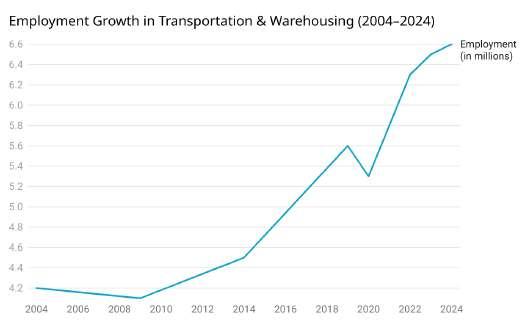
Source: Bureau of Transportation Statistics
positioned to capture new investment and meet the logistics demands of the next decade.
As the logistics landscape evolves, many traditional seaports are undergoing significant enhancements to solidify their roles as pivotal trade and transportation hubs. The Port of Mobile exemplifies this trend. The Alabama Port Authority recently kicked off the fourth phase of its container terminal expansion, aiming to double the terminal’s capacity from 500,000 to more than 1 million 20-foot equivalent units (TEUs) annually. This $104 million project includes the addition of 32 acres to the existing facility and the construction of an interterminal connector bridge to facilitate on-dock rail access, improving operational efficiency and accommodating growing cargo volumes.
In tandem with the terminal expansion, the port is advancing the final phase of its Mobile Harbor deepening and widening project. Upon completion, the harbor will become the deepest port in the Gulf of Mexico, featuring a 50-foot depth and a three-mile passing lane to accommodate larger post-Panamax vessels. This enhancement positions Mobile as a more attractive first port of call for ships transiting the Panama Canal, potentially increasing cargo traffic and economic activity in the region.
These strategic investments not only elevate the Port of Mobile’s capacity and efficiency but also reinforce Alabama’s commitment to developing a robust, multimodal logistics infrastructure. By integrating advanced port facilities with inland transportation networks, Alabama is positioning itself to capitalize on emerging supply chain trends and attract future investment in the growing regional economy.
In an economy increasingly driven by speed and precision, air cargo has become an indispensable link in the logistics chain. Fueled by the surge in e-commerce and rising consumer expectations for rapid delivery, air freight is no longer reserved for high-value goods — it’s becoming a baseline requirement for modern distribution strategies.
Airports across the U.S. are responding with significant infrastructure investments to expand capacity and streamline operations. One standout example: French shipping giant CMA CGM’s $20 billion investment to grow its logistics and terminal presence in the U.S., which includes a proposed air cargo hub in Chicago that promises to create a high-speed gateway for goods moving throughout the Midwest and beyond.
The economic ripple effect of air cargo development is substantial. These facilities draw logistics companies, manufacturers and e-commerce players looking to shrink delivery windows and optimize global supply chains. In regions with established cold storage, rail and intermodal assets, air cargo helps knit together a full-spectrum logistics hub that boosts competitiveness and job creation.
Continued on page 92
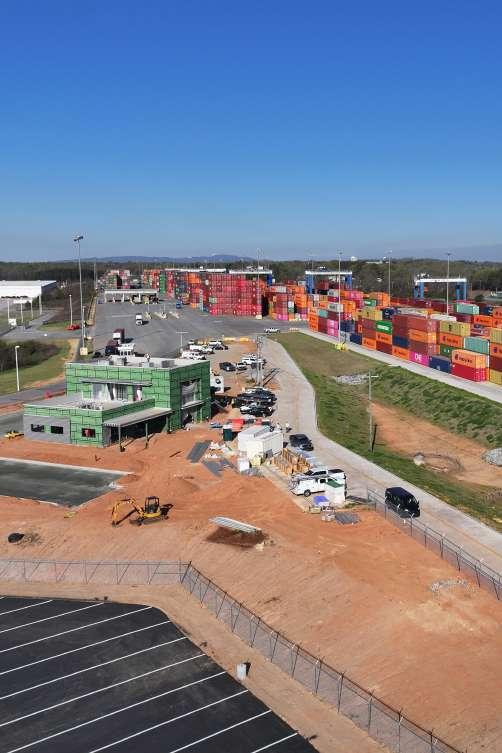
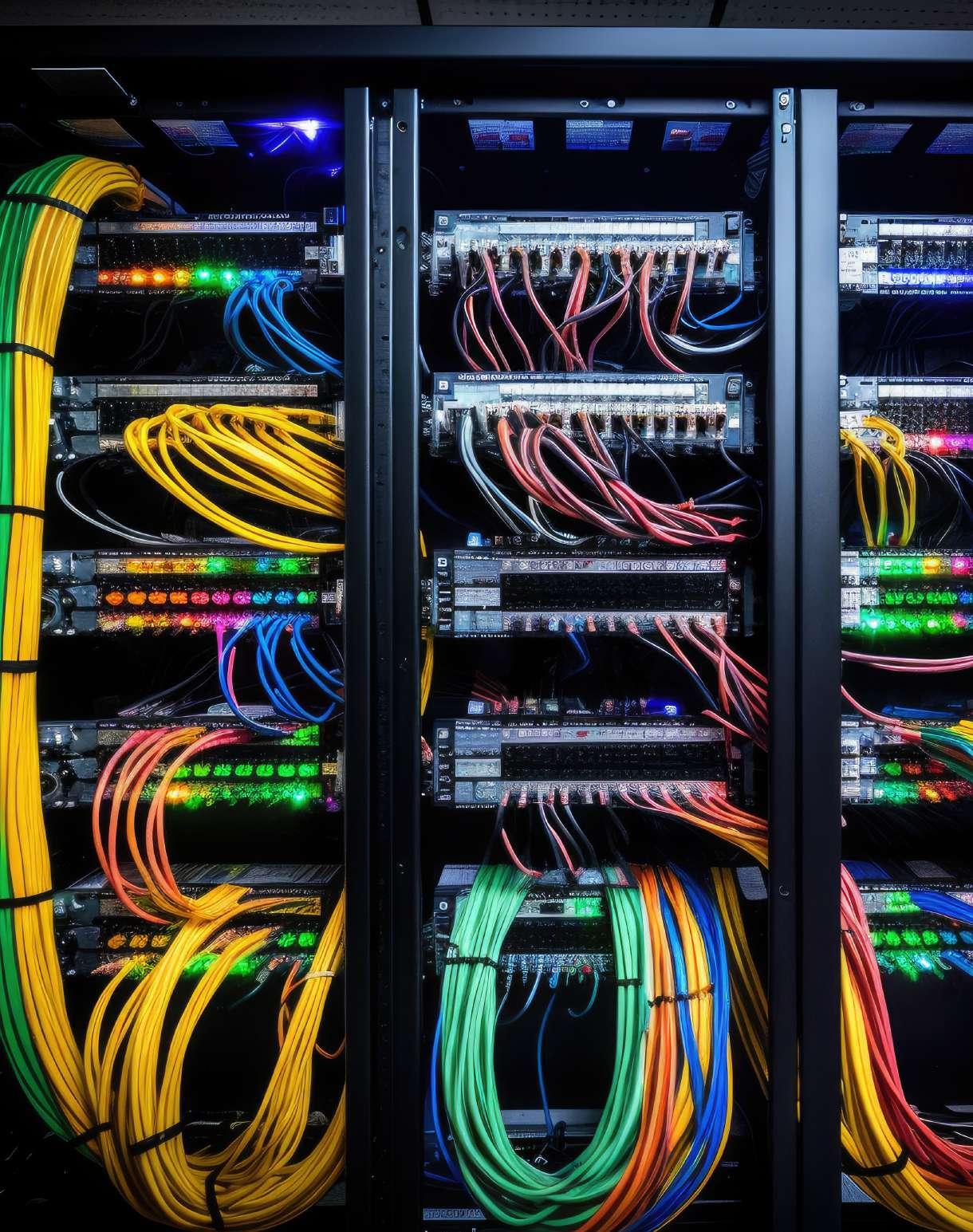

By W. Ford Graham, Partner, Steven Pearce, VP, Infrastructure and Economic Development, and Margaret Rockwell, Counsel at McGuire Woods
ive hundred billion dollars in capital investment over the next four years. This is the expected investment by NVIDIA to manufacture AI supercomputers and Blackwell chips in the United States. Although this single project is at a mind-boggling scale, it is one of many high-dollar projects announced in recent years that are changing the data center landscape across the U.S. But the world of data center development is multifaceted, involving numerous supply chain industries that systematically integrate with these massive investments. While these ambitious developments make eye-catching headlines, we should also be noting the lesser known, yet significantly impactful, technological advances coming from companies you may not immediately associate with data centers.
As cloud computing continues to revolutionize business operations, innovation, user experiences, and technology itself, the importance of the data centers that underpin this intricately robust digital infrastructure cannot be understated. Simply put, data centers are where the internet lives, and all activity that involves the internet relies on these structures. Their expanding importance in the framework of our society is reflected in their becoming a household term in recent years. With this increasing familiarity of the industry, discussions surrounding new data center development usually involve concepts like energy use, water, and sustain-
That’s the expected investment by NVIDIA alone in U.S. AI infrastructure over the next four years.
ability. While these certainly are pressing topics, it is perhaps more critical to consider the diverse ecosystem of distribution and supply chain operations that integrate with data center development and its growth trajectory.
Data centers play an integral role in the way we experience our day-to-day activities. They allow the cloud to operate and thus facilitate our use of key applications like Dropbox, Google Drive, Netflix, and Microsoft 365. Meanwhile, they are instrumental in routing internet traffic, acting as central hubs through which internet traffic perpetually flows. Additionally, the exponential rise of AI and machine learning requirements fuel an ever-increasing demand for data centers and the industry’s supply chain. All in all, our daily lives are increasingly more reliant upon data centers and the supporting ecosystem.
To underscore the importance of this industry, let’s look at sports and how we watch our favorite athletes and teams. Without data centers, there would be no Masters. No March Madness. No Major League Baseball. No National Basketball Association. No National Football League. No National Hockey League. No Major League Soccer. No NASCAR. On game day, sports fans are not likely concerned about data centers and whether they will be reliably operating without any interruption. But if data centers were to cease operations, all of the media coverage, fan attendance, and sports betting that comes with it would come to a halt. Ticketing, access control, and event logistics would shut down. In other words, not one of these sporting events could happen in the modern world without data centers and all the supporting companies that make data centers operate reliably.
To examine this concept within the world of sports more closely, let’s take a deeper dive into the viewers’ experience of the Masters. Every shot every player takes can be streamed on demand. Masters.com and the Masters app allow viewers to stay current via live coverage. AI ball tracking tech, real-time leaderboards, shot visualizations, swing analysis — all of these tools rely on data centers. The Masters, as all sporting events have become in our modern world, is a tech-driven, immersive enterprise, totally reliant upon the many thousands of companies that support the data center supply network.
Sports are just the tip of the iceberg. Nearly every modern industry heavily relies upon the data center ecosystem. While we work from our home office or from an airplane seat at 30,000 feet, file our taxes, pay our bills, place our grocery delivery order, hail an Uber, or sit in our recliner streaming the latest episode of “The White Lotus,” we actively (although rarely realizing it) are totally dependent upon data centers and their supply chains.
Data centers could be described as large industrial buildings (similar to what you might see in any modern industrial park or distribution center) with massive servers storing pictures of your daughter’s first steps, your tax returns, banking statements, text messages, and that one time you sent a voice memo to your friends singing “Don’t Stop Believin’.” But they are much more than places to store this type of vital information.
As people think about a data center’s physical properties, the first thing most consider are the rows of servers and the miles of cables. While these are certainly important components of the industry, the robust power infrastructure secured through uninterruptible power supplies and backup generators, the building’s physical infrastructure, their complex cooling systems, racks and enclosures, and sustainability infrastructure are lesser known but equally valuable components. Below, we have compiled a number of key elements found within the data center supply chain, and we have highlighted a few of the primary enterprises that serve this industry.
Data centers often demand a considerable amount of electric power supply. Some data centers require more than 100 megawatts, enough to power tens of thousands of homes. Importantly, much of this demand must be met with reliable uninterruptible power to protect against any reduction of operational and maintenance activities. To accommodate this critical need, companies like Schneider Electric, Eaton, ABB, Toshiba, and Mitsubishi Electric manufacture uninterruptible power supplies (UPS). Such systems provide near-instantaneous short-term protection from power outages via battery power. TMEIC, a joint venture of Toshiba and Mitsubishi Electric, recently announced plans for a new uninterruptible power supply assembly facility in the Houston, Texas, area to serve their rapidly growing data center clients.
While UPS systems provide instantaneous battery backup during power outages, their power supply lasts for a few minutes to a few hours. On the other hand, standby generator sets provide a much longer backup solution, lasting from a few hours to a few days. In mission-critical backup power systems, UPS systems and standby generator sets are usually coupled together, with the gensets required to pick up full load in under 10 seconds. Roughly the size of shipping containers, these 2.5-megawatt-plus, typically diesel, generators are an essential part of the supply chain for data centers. Cummins, Caterpillar, and Rolls-Royce are the three largest suppliers of generators in this space, and business is booming and growing.
Regionally headquartered in Novi, Michigan, RollsRoyce Solutions America is part of the Power Systems



Northwest Indiana is more than a location—it's where innovative thinking meets robust manufacturing capabilities to fuel economic growth. Newly sited in LaPorte, Indiana, Microsoft is part of a community that embraces opportunity and celebrates success. Make NWI your home too, and discover how our inspiring landscape and assets can drive your business forward.

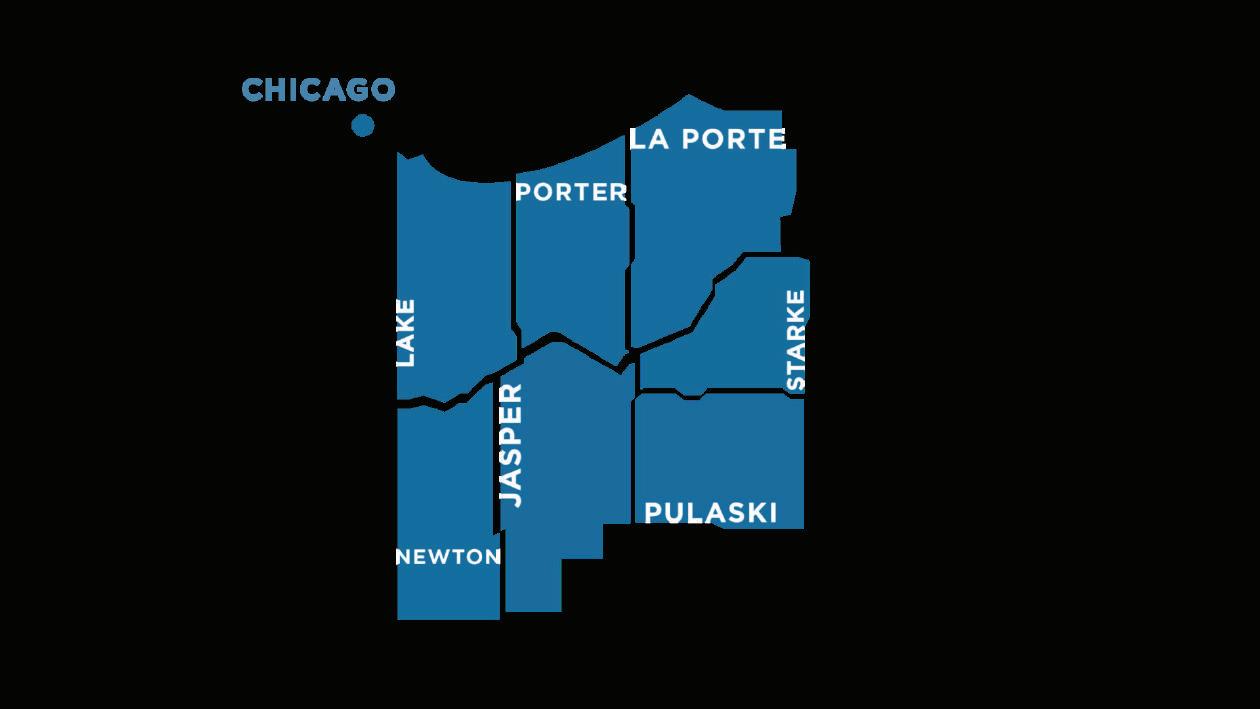

46 PERCENT
That’s the yearover-year sales growth in backup power systems for data centers at Rolls-Royce Power Systems.
division of the United Kingdom-based Rolls-Royce Group. Its U.S. manufacturing locations include its mtu engine production facility in Aiken, South Carolina, and a dedicated mtu power generation system facility in Mankato, Minnesota. In its 2024 annual results announcement, Rolls-Royce reported that the largest increase in sales for its Power Systems division was in its backup power systems business, which grew by 25 percent overall and by as much as 46 percent for backup power systems for data centers.
Having served the hyperscale data center market for more than 15 years, Rolls-Royce has become an essential player in the overall ecosystem, and the company expects to see demand from the industry for its power generation systems double in the next three years. Accordingly, it is planning strategic investments to support that growth.
“Although the rise in data center demand has been occurring for more than a decade, the COVID-19 pandemic was a catalyst for the exponential growth in data center deployment as interaction with the outside world moved online and to virtual platforms,” said Kevin McKinney, director of power generation sales for RollsRoyce in the Americas. “The cloud computing market has continued to grow for a number of reasons including the tremendous rise in AI applications and the trend of server racks growing in power density.”
Rolls-Royce is currently contemplating an expansion of its existing U.S. footprint, which would lead to a notable growth in its American workforce and investment into the U.S. Moreover, the company’s increase in production would have ripple effects across its supply chain.
“Rolls-Royce has a history of investing in its capabilities and facilities in the U.S., and that applies to our supply base as well,” said McKinney. “The significant increase in production that will be required to meet the demands for our products will mean greater engagement with the supply chain and strengthening local supply of components and raw materials to produce local for local as much as possible.”
One company that is feeling the ripple effects of increased production while also driving the industry forward in its own right is Corning. Well known as a fiber optic cabling solutions and connectivity systems supplier, Corning is at the forefront of generative AI, which continues to be a major driver for the insatiable desire for new data centers across the developed world. Corning estimates the construction of up to 70 new hyperscale data centers each year in the U.S. as a result of generative AI, taking the number of data center hubs in the U.S. from six to more than 12 by 2030.
The demand for artificial intelligence changes the game for data centers,” Mike O’Day, senior vice president and general manager of Corning Optical Communications, wrote in a blog post last year. “Emerging AI data center network architectures represent a step change in passive optical content in the data center …”
As the growth of generative AI is impacting the industry, data centers and the long-haul networks that connect them, Corning fiber innovations are allowing the increasing number of graphics processing units required for large language models to stay reliably connected at high speeds. Corning owns and operates two of the world’s largest fiber and cable plants in North Carolina, including its Optical Communications headquarters in Charlotte.
Perhaps the most fundamental component to a data center is the server. Servers store data, process requests, and deliver upon those requests. Data centers typically have thousands, sometimes tens of thousands of servers arranged in racks. Such servers make up the “cloud.” The largest global manufacturers of servers are Dell, HP, Lenovo, and Cisco. One of Lenovo’s two headquarters is in the famed Research Triangle Park in Morrisville, North Carolina. The company recently announced new solutions that will accelerate data center modernization with up to 6.1 times higher computer performance than the previous generation.
More broadly, the data center server sector is expected to reach $82.1 billion by 2033, according to a 2024 report by IMARC Group.
Like the heat generated by your personal laptop or desktop computer, servers used in data center facilities require cooling systems to prevent overheating that would otherwise lead to failure. A room full of operating servers, running 24 hours per day, creates a substantial amount of heat that needs to be dissipated, effectuated typically through complex “non-contact” water systems. Companies like Gates Industries, Microsoft, and ThermalWorks have demonstrated innovative ways to address the data center ecosystem’s cooling needs.
Gates recently announced a new product focused on cooling solutions for the data center industry called the Data Master Data Center Cooling Hose. This product incorporates flexible and durable materials for easy routing in complex configurations and ensures compatibility with a wide range of coolant fluids. Meanwhile, Microsoft has proposed a closed-loop design that manages temperatures via a water recycling process that continually circulates water between servers and chillers. Alternatively, ThermalWorks offers an entirely waterless option that incorporates a fully integrated rooftop chiller unit optimized for high-density workloads and low energy consumption.
“The demand for more capacity is outpacing general contractor labor resources.”
— Loni McCarron, Gray
In March 2025, the company announced the launch of a supplemental advanced heat recovery technology as a standard option for its 1-megawatt and 2-megawatt waterless chiller plants.
The rapid growth of the industry is directly impacting the construction industry as well. Globally, there are an estimated 11,800 data centers. The U.S. is home to the single largest concentration of data centers with more than 5,000 in the country. On a square footage basis, the data center industry is currently the top industry under development in the U.S.
Such rapid development requires a massive mobilization of the construction supply chain. According to Data Center World’s 2025 State of the Data Center Industry Report, “The number of data centers will increase over the next three years, from a current average of one to an average of six, a sixfold increase in construction for many operators.”
Kentucky-based general contractor Gray has a number of teams deployed throughout the U.S. The company is building small and large-scale data center facilities, including two data center buildings on QTS’s campus in New Albany, Ohio. According to the company, data center projects now present a sizeable percentage of Gray’s industrial portfolio, and the company anticipates additional growth. Nonetheless, the scale of data center projects and the number of simultaneous mega-projects under construction in close geographic proximity represent unique challenges for general contractors and their suppliers and subcontractors.
“The demand for more capacity and the speed at which data centers are built is simply outpacing general contractor labor resources. Alternative delivery models and execution strategies are being discussed more frequently,” said Loni McCarron, senior manager for business development at Gray.
The difficulty in finding trade professionals such as electricians, carpenters, pipefitters, etc., is also becoming a growing concern for industrial development projects across the country. According to McCarron, “On a single hyperscale data center campus, our labor curve could peak at 1,000-plus on-site trades men and women. Partnerships are the key. This is particularly important as more data centers are built in tertiary and rural markets where skilled labor is limited.”
In June 2025, Schneider Electric announced plans to open a 105,000-square-foot integration facility in Red Oak, Texas, employing 200 workers. The project is focused on supporting the growing demand of AI data centers throughout the U.S. Schneider’s facility will manufacture the company’s EcoStructure Modular Data Center line of products.
In a recent public announcement of the project, Vandana Singh, senior vice president, Secure Power Division and Data Center Business for Schneider Electric, said, “As demand for data center solutions continues to soar, the inauguration of our new integration facility marks a crucial moment in our journey to redefine industry standards and empower businesses with transformative infrastructure solutions.”
“The Red Oak facility represents a pivotal step forward in expediting delivery timelines and enhancing operational efficiencies for customers across growing industries and segments, from cloud and service providers to semiconductors and electric vehicles to healthcare and telecommunications,” Singh said. The new facility in Red Oak, like many other recent investments by data center suppliers large and small, highlights how the industry relies on a vast array of interconnected products and services that collectively power our modern world.
The industry is not without its challenges. As the supply chain grows, the industry must continue to problem-solve and innovate to meet increasing pressures. According to AFCOM State of the Data Center for 2023, 94 percent of operators faced some form of supply chain issue, with 59 percent citing difficulties in procuring IT equipment like servers and switches, and 51 percent encountering problems obtaining power systems such as generators and UPS units. Further, concerns around power availability and infrastructure, tariffs and trade barriers, as well as talent shortages (electricians and engineers), are obstacles that must be overcome. Despite these challenges, the future is bright for product and service providers that make up the booming data center ecosystem, as well as for those communities that these companies call home. As global data center investments are projected to surpass $1.4 trillion by 2027, and suppliers are rapidly innovating to meet surging demand, the industry stands poised not only to overcome its current challenges but to build a more resilient, sustainable digital foundation for the future.
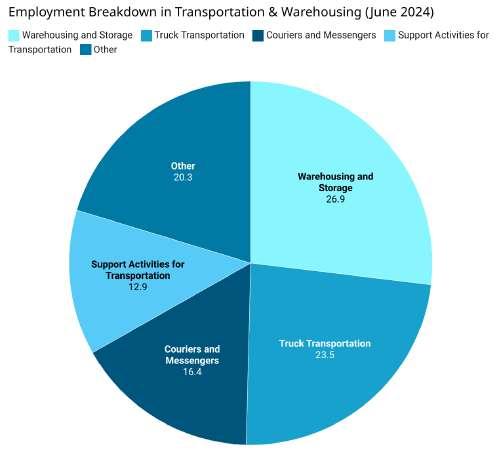
Source: Bureau of Transportation Statistics
Behind every logistics hub, inland port or cold storage facility is a web of policy decisions and public investments shaping what gets built — and where.
At the federal level, initiatives like the Port Infrastructure Development Program (PIDP) are playing a critical role. In 2024, the PIDP allocated $450 million to modernize both coastal and inland waterway ports, reinforcing the backbone of America’s supply chains and enhancing national economic security.
States, too, are rising to the challenge. Across the country, governments are deploying creative strategies — from targeted tax incentives to infrastructure bonds — to attract logistics investment and catalyze development. Public-private partnerships have emerged as vital tools, combining public oversight with private-sector efficiency to fast-track complex projects and share financial risk.
Yet, the path forward isn’t without friction. Regulatory hurdles, environmental permitting and community opposition can slow progress, particularly when it comes to large-scale infrastructure projects. At the same time, the sector remains ripe with opportunity. Innovations in automation, AI-driven logistics planning and sustainable design are transforming how facilities are built and operated, creating the potential for smarter, greener and more resilient supply chains.
From inland ports and cold storage to air cargo expansion and port modernization, America’s logistics landscape is undergoing a transformation with far-reaching implications.
These developments are not just about accelerating the movement of goods. At the core, they are all about unlocking economic potential, reshoring strategic industries and building the infrastructure of the future.
L ooking ahead, the regions that succeed will be those that act strategically by investing in connectivity, embracing innovation and aligning smart public policy with ambitious private strategies. As the global economy continues to evolve, the race is on to build a logistics network that can meet tomorrow’s biggest challenges.
For policymakers, business leaders and economic development professionals, the opportunity is crystal clear: by working together to shape a forward-looking logistics ecosystem, we can drive growth, create jobs and position communities to thrive in a rapidly changing world.
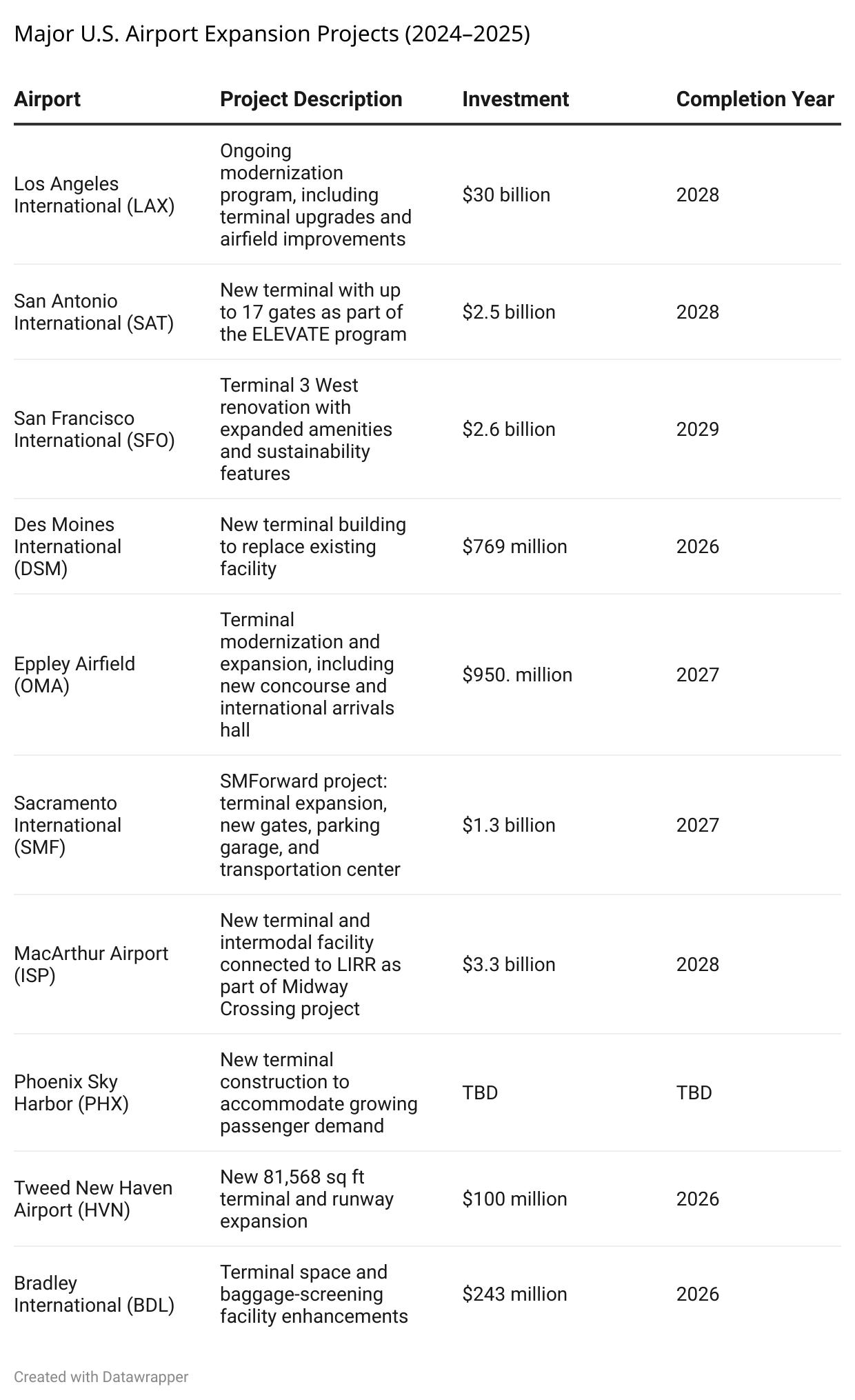
Get actionable talent benchmarks, competitive intelligence, and firmographic data with JobsEQ technology or by working with our team of economic consultants.
Chmura’s consulting team, including Ph.D. and Blue Chip economists, can provide economic and fiscal impact studies, industry & labor market analyses, competitor benchmarking, and economic development & strategic planning. They can also help you draw your own insights through our powerful JobsEQ software platform. Learn more at www.chmura.com.
Access JobsEQ from anywhere, at any time.
Answer your research questions with guided prompts from JobsEQ.
Chat live with economists and get responses in under a minute.
Create custom regions, industry groups, occupation groups, forecasts, and more.
Tell your region’s story with clear maps and charts.

Forecast which industries and skills will be in demand in the future.
Why manufacturers should treat site selection as a form of risk management — not just opportunity hunting
By Chris Urchell, Senior Manager, Development Advisory at Baker Tilly
Manufacturing facility construction is experiencing recordbreaking growth, but the risks associated with location decisions are more substantial than ever. Companies that rushed to expand over the past two years are now confronting real challenges: securing labor, navigating unpredictable utility timelines, and responding to policy swings that can alter cost models overnight.
The current environment is not just active — it’s volatile. Manufacturers that want to avoid delays and missteps must treat site selection as a form of risk management, not just opportunity hunting.
The federal government has played a major role in sparking new investment. The CHIPS Act, Inflation Reduction Act, and Infrastructure Investment and Jobs Act have collectively poured more than $1 trillion into sectors like electronics, batteries, renewables, and semiconductors. That money has helped drive a 155 percent increase in manufacturing construction spending from 2022 to 2024, outpacing all other nonresidential sectors. Advanced manufacturing now accounts for more than half of all manufacturing spending, with the “computer/electronic/electrical” category leading the charge.

But access to funding doesn’t guarantee results. Some companies are already learning the hard way that cost and timeline assumptions can fall apart without a deeper look at the local labor market, utility capacity, and supply chain alignment. Delays in power delivery alone have eliminated sites that once seemed like front-runners.
At the same time, geopolitical forces are adding complexity. Trade tensions and the resurgence of protectionist policies have pushed more foreign manufacturers to explore U.S. locations, but these decisions must be made with a long-term mindset. Site selection based on current administration policy or short-term incentives is a risky move for any project with a 20-year horizon and hundreds of millions of dollars at stake.
Manufacturers should start by identifying regions — not sites — that support the core requirements of their business. That includes access to the right workforce, proximity to customers and suppliers, and utility infrastructure that can be expanded within project timelines. Without alignment on those foundational elements, visiting specific sites is premature.
The best site selectors don’t initiate the process by chasing “opportunistic” locations. They begin with models built on key operating and financial criteria. What does labor cost at different percentiles? How have wages trended over time? Are there historical concentrations of the specific skills required — not just general manufacturing labor? How does power access and cost vary by location? Can water and wastewater infrastructure be extended without triggering delays or permitting issues?
These are the questions that narrow 100 potential regions down to 10 and ultimately focus decision-making on two to three viable sites for detailed due diligence.
A good site is not just a plot of land — it’s a bundle of certainties: certainty that the workforce can scale without cannibalizing the local labor pool; certainty that grid capacity can support operations today and grow tomorrow; certainty that supply chain costs and logistics align with both short-term and long-term goals.
Manufacturers that treat site selection as a check-the-box activity are often the ones that end up backtracking. Those that view it as a critical extension of their business model are the ones that hit their timelines, their numbers — and position themselves for long-term success
From maintaining the bottom line for small businesses to keeping the assembly line moving for our major industries, NV Energy is powering Nevada’s future.
Our economic development experts work strategically to facilitate business location and expansion within Nevada. We can assist with pricing and renewable tariffs, site visits and provide the data critical to making an informed decision for business investment in Nevada.
We know there’s a lot on the line. That’s why we’re always there to power it.
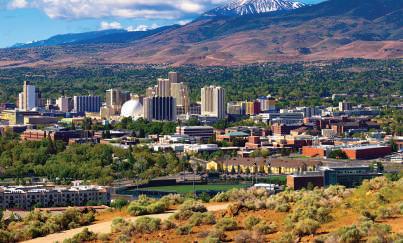



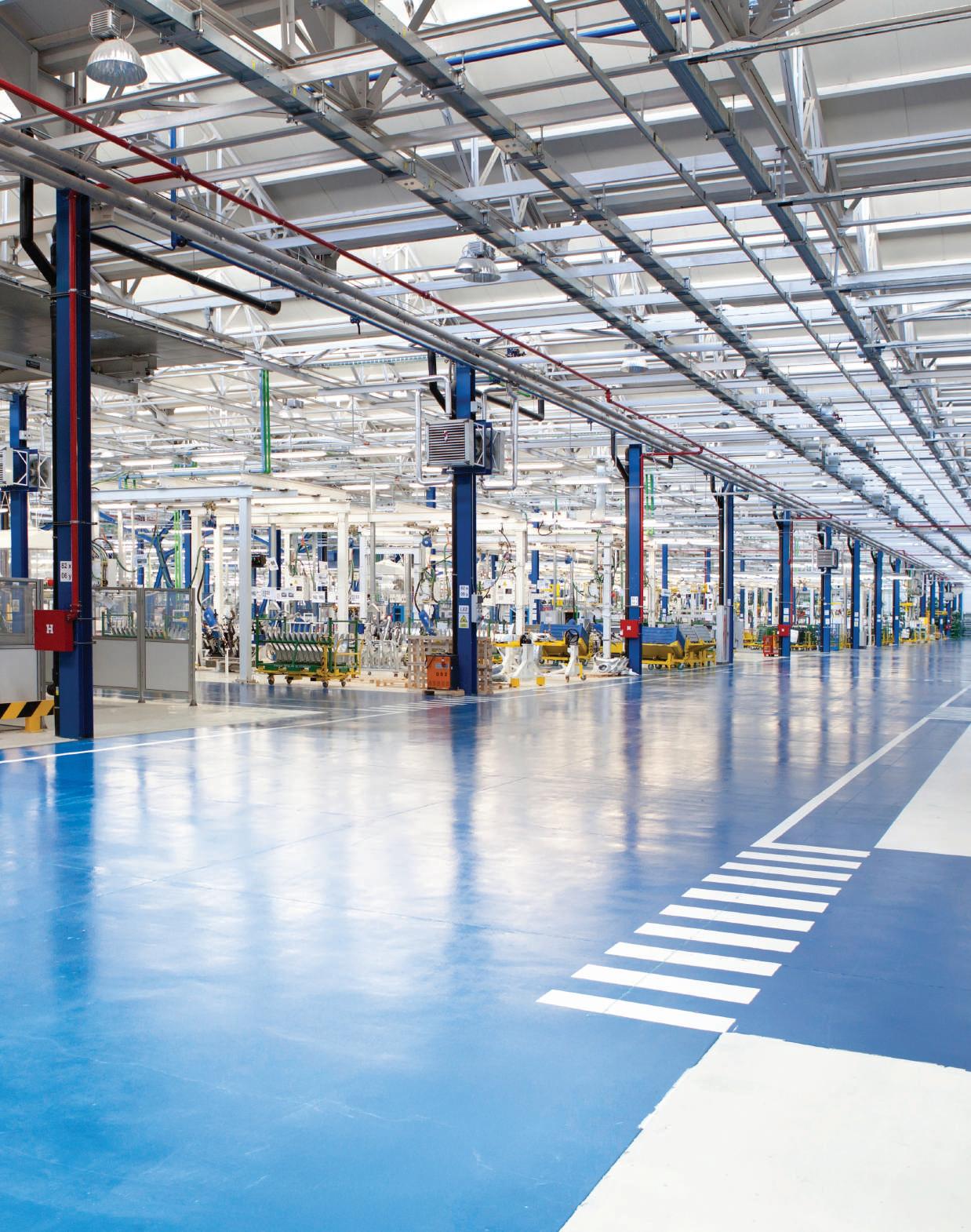
.
By Charlie Smith, Managing Director, Geopolitical Strategy Consulting at Newmark
Planning decisions throughout the commercial real estate industry are currently being influenced by uncertainty. For those seeking policy solutions, legislative action at the federal level is a less likely route than in the past. A 2024 analysis by Reuters found a 40-year downward trend in the number of bills, proposed measures, debates, and speeches. A range of factors, including well-publicized issues and increasingly divergent political viewpoints, has influenced this trend.
Market forces are also accelerating change. Private firms face dynamic challenges as the Fourth Industrial Revolution continues to gain speed. Technological innovation, changes in manufacturing, labor and population shifts, and other macro trends are creating new pressures. Yet while headlines focus on federal action, policymaking at the state and local levels could offer meaningful benefits to investors and businesses.
In such a dynamic environment, this is a pivotal moment for U.S. states and local communities to drive policy change. How are states positioned for success? A few factors offer clear advantages:
Nimble legislative process: States review more bills, and in a faster timeframe, than the U.S. Congress—including through “fast track” procedures and shorter legislative sessions. When market forces demand a government response, states are wellequipped to act in a timely fashion.
Bipartisan incentives: Structural processes and requirements unique to the state and local levels—especially around balanced budgets—encourage a higher degree of bipartisan compromise than at the federal level. Additionally, the National Conference of State Legislatures has found that the more local an issue is, the greater the odds for bipartisan agreement.
Tailored context: Finding a one-size-fitsall solution is no small feat for the federal government. State and local governments,

As laboratories of democracy, states have long experimented with policy to generate local impact.
on the other hand, have a narrower remit, reducing the scale of their focus and allowing them to better target legislation for specific purposes—or even specific sites. For private firms, states may offer much-needed policy clarity and growth opportunities with real impact. The evidence is there, even on complex issues like power and housing shortages. South Carolina’s legislature recently approved a bill to expand power capacity, for example, and California’s State Assembly advanced a bill out of committee to expedite new housing development. Both efforts have been bipartisan and address local constraints and opportunities. As new challenges emerge that warrant public support, state and local governments are responding with tailored policies—often in relatively short order.
There is a path forward to finding and creating opportunities at the state and local levels. Private firms and investors should keep in mind the productive features inher-
ent in these jurisdictions as a counterbalance to federal challenges. Getting expert support to understand policy developments can reveal opportunities, even amid other market constraints. For states and communities, developing a holistic awareness of peer positions, policies under development, and comparative advantages or disadvantages is key to building and executing the right strategy. Federal action should still be monitored—but not relied upon—for new funding.
The state and local levels may provide more structure amid uncertainty in the national landscape. Both the policies themselves and the legislative capacity they project offer a chance to mitigate challenges and unlock new opportunities. As laboratories of democracy, these layers of government have long experimented with policy to maximize local impact—a quality that is especially influential in the current environment.
“
Thanks to the great vision and support of the State of Tennessee and Gallatin Economic Development Agency, who welcomed and supported us along the way, this has been a story of continuous growth.”

Franco Gussalli Beretta President & CEO, Beretta

